Rocket Garden Fact Sheet
- Share "Rocket Garden Fact Sheet" on Facebook
- Share "Rocket Garden Fact Sheet" on X
- Share "Rocket Garden Fact Sheet" on LinkedIn
- Share "Rocket Garden Fact Sheet" by Email
At NASA, it’s often said that we stand on the shoulders of giants. Nowhere is that more apparent than in The Rocket Garden. Behind every rocket you see are great men and women – engineers and astronauts, designers and thinkers – who turned dreams into history. It is here you find the first rocket to break free from gravity, see the Mercury-Redstone, which shot to space with a lone man perched atop its nose and see the vehicles that launched satellites into orbit and man into space. And just like a real garden, the one you see here is always growing. Even today, people from around the world are building, designing and thinking, continuing the work that will one day find its way to this garden to inspire generations to come.
Daily Tours
Free, guided tours of the Rocket Garden are given several times a day. See the daily schedule for times.
Atlas-Agena Rocket
The Atlas rocket gave us the power to reach orbit, but with the second stage Agena perched on top, we now had the ability to explore. In January 1962, the Atlas-Agena launched Ranger 3 – a robotic spacecraft – and sent it racing toward the moon. The plan was to capture and send home pictures of the moon until impact with the lunar surface. But Ranger 3 missed the target and headed for the sun. It would take four more missions before the Ranger program met with success. With eight total missions, the program sent back more than 11,000 detailed pictures of the lunar surface, including close-ups of the Sea of Tranquility, where Apollo 11 would touch down in 1969.
Delta Rocket
An unassuming rocket with a funny-shaped nose, the Delta helped change the world in very big ways. In March of 1960, it launched the deep space probe Pioneer 5, with the world’s first solar power cell onboard to create electricity for the long mission. Five months after that, it launched a Mylar balloon called Echo into orbit. That balloon allowed for the first live television signal to cross the ocean, beginning a global revolution in communication. Just two years later, another Delta rocket upped the ante, launching Telstar, the world’s first telecommunications satellite. Suddenly, space was a resource, a place where money could be made, not just spent, paving the way for advancements like GPS, satellite TV, cell phones and smartphones. For the first time, knowledge we gained in space could be applied beyond scientific advancement. It could literally change the world and life in it for people all across the globe.
The Delta II served as a venerable industry workhorse, launching 155 times. The rocket launched many significant missions including NASA’s rovers Spirit and Opportunity, the Phoenix Mars Lander, ICESat-2, all operational GPS missions through the constellation of 21 GPS II-R missions for the Air Force and commercial missions for Iridium, Globalstar and three DigitalGlobe satellites.
After the USSR’s successful launch of Sputnik, the world’s first man-made satellite, America knew it had to get something into orbit fast if it was to be a major player in the emerging space race. Their answer was Juno I, a two-stage Jupiter atop a Redstone rocket with an added fourth stage. Launched in 1958, Juno I made history, carrying Explorer 1, America’ first satellite, into orbit.
The Juno II rocket launched Pioneer 4, the first U.S. probe to escape Earth’s gravity. Launched in 1959, Pioneer 4 flew past the moon, achieving its primary objective of following an Earth-to-moon trajectory. It finally settled into orbit around the sun, sending home a huge cache of valuable information along the way. This information relay marked the birth of the Deep Space Network – a global network that even today supports satellite communication from the furthest reaches of space.
Mercury-Redstone Rocket
“C’mon…let’s light this candle.” Those were the words of Commander Alan Shepard as he climbed into the Mercury Redstone rocket which would soon make him the first American in outer space. Originally a surface-to-surface missile, the Mercury Redstone stretched the technology of its day to unimagined limits. But nothing could guarantee with absolute certainty that Shepard would make it back alive. As America held its breath, the Redstone ascended 116 miles into the air. Fifteen minutes later, the Commander splashed down safely in his tiny capsule, Freedom 7. NASA and the nation breathed a sigh of relief.
Mercury-Atlas Rocket
After two suborbital flights, the time had come for an American to orbit Earth. The Mercury-Atlas was chosen for the job, launching John Glenn on an historic three-orbit flight on February 20, 1962. He proved humans could work in a weightless environment, piloting the Friendship 7 for most of the flight after automatic altitude systems failed.
Gemini-Titan II Rocket
Originally intended as a weapon, the Titan II rocket was technically an intercontinental ballistic missile, designed to deliver nuclear warheads into enemy territory from across oceans. As a weapon it was considered extremely reliable, which made it the perfect vehicle to launch spacecrafts during the 1965 and 1966 Gemini missions. The Titan II on display here was not built for NASA but rather is a demilitarized rocket acquired from the U.S. Air Force. Look to the top, and you’ll find a replica of a two-seat Gemini capsule, ready for liftoff.
A single Redstone rocket took man into space. A Saturn 1B – made up of eight Redstones bundled together at its base – put man into orbit. It was a Saturn 1B that launched the unmanned Apollo 5, the three-man Apollo 7, all three Skylab crews and the Apollo-Soyuz Test Project into orbit. The Saturn 1B on display here is the last surviving flight-ready vehicle of its kind anywhere in the world. This rocket was readied as a backup rescue vehicle for the Skylab 4 mission and the Apollo-Soyuz Test Project, and was the primary vehicle for a cancelled Skylab 5 mission. Look for this rocket’s Command Service Module (CSM) on display at the Apollo/Saturn V Center.
Saturn V F-1 Engine
The most powerful liquid-fueled rocket engine ever created, the F-1 engine was a critical component in sending astronauts to the moon during the Apollo Program. In fact, the Saturn V rocket required a cluster of five F-1 engines generating more than 7.5 million pounds of thrust to lift the rocket off the pad. It was said at the time of the Saturn V launch that except for a nuclear explosion, the sound of those engines firing was the loudest man-made noise ever produced.
Mercury and Gemini Capsules
Climb aboard the spacecrafts that made history. Sit inside the Mercury, and Gemini capsules for a hands-on look at the progression of the American space program. From the Mercury capsule, which held just one man, through the Gemini capsule, which held two, experience for yourself the tight quarters and cramped conditions astronauts of two generations encountered as they left Earth and headed for the heavens.

- New Here? Read Me First
- Must Read Articles
- Latest Articles
- This is My Story
- Countries I’ve Visited
- Media Appearances
- Follow the Adventures
- All Travel Destinations & Guides
- South America
- Budget Travel Tips
- Save Money for a Trip
- Best Resources to Book Your Trip
- What is Backpacker Travel Insurance?
- Travel Hacking
- Travel Gear
- Road Trip Planning
- Travel Inspiration
- Truck Camping
- How to Travel Forever
- Browse the Store
- My book: Big Travel, Small Budget
- Truck Camping Gear
- D2D Apparel
- Shop REI.com
- Shop Amazon.com
- Discount Outdoor Gear: Deals of the Day
- Write for D2D
- Work with Us – Media & Press
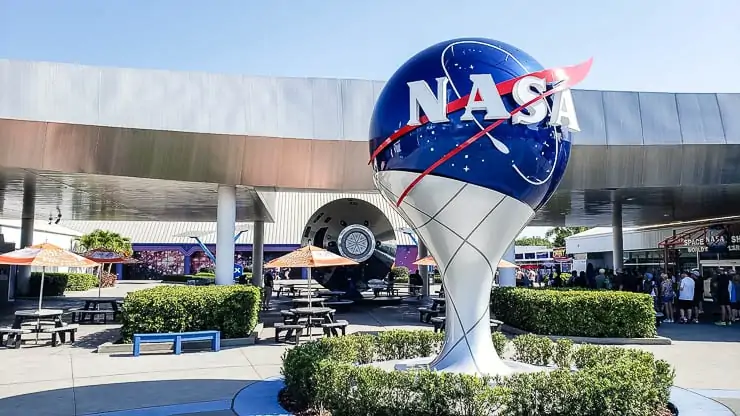

A Self-Guided Tour of Kennedy Space Center: 1-Day Itinerary
Sharing is caring!
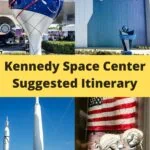
Planning a trip to Kennedy Space Center can be a bit intimidating. There is a lot to see and do within the Kennedy Space Center Visitor Complex at Cape Canaveral and it can be tough to decide where to go first, the best way to see the top attractions, and even what things you should see and do and what things might be best left for a future visit. This self-guided tour of Kennedy Space Center will help you plan your itinerary and maximize your visit.
The first time I visited Kennedy Space Center, I didn’t have a plan… We just wandered around, in and out of the various buildings. That’s a perfectly fine way to visit if that’s your style, but you will probably miss out on a lot of things, and you won’t necessarily hit things in the best possible order.
On subsequent visits, I had a better plan this time around. Not only in terms of what I wanted to see and do (things I missed the first time) but also in what order I wanted to see and do them.
This self-guided tour of Kennedy Space Center will give you a plan of attack and order of operations for your visit that will maximize your time and provide the greatest insight into the U.S. space program and its more than 70 years of history.
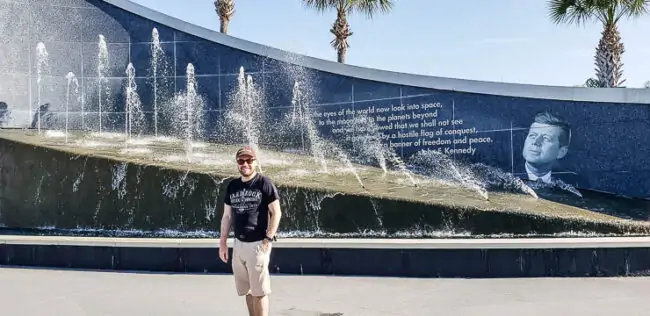
In my opinion, it makes the most sense to explore the space program and Kennedy Space Center in a more or less chronological fashion. This means learning about Mercury and Gemini before you learn about the Apollo missions, for example. The Mercury and Gemini programs were the stepping stones that led up to Apollo, after all. The lessons learned in each of those programs culminated in Apollo, and lessons learned there led to the Space Shuttle, and so on.
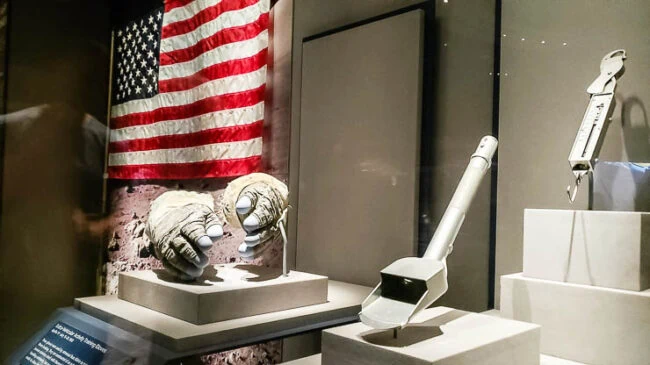
The problem is that those programs are spread out across different buildings and even areas of the Kennedy Space Center Visitor Complex, meaning that you don’t necessarily just want to go from one building to the next in order.
Gaining a greater understanding of the history of human space flight is important! We are living in the most exciting time for space exploration since the 1960s and a visit to Kennedy Space Center will help you appreciate all of that even more.
Let’s jump into how to plan your visit to Kennedy Space Center with this suggested itinerary.
Planning a Day at Kennedy Space Center
The majority of visitors will be coming from the Orlando area, and Kennedy Space Center is located about a one-hour drive from there. The Visitor Complex opens year-round at 9 am and I suggest planning to arrive at opening time.
You can save time by purchasing your tickets online in advance. Tickets for adults are currently $57 each.
Skip the Line and Buy Your Tickets Now
But you don’t need a reservation for the park unless you are planning on doing the add-on enhancements like chatting with an astronaut or the training stages (for an additional fee on top of an entrance ticket).
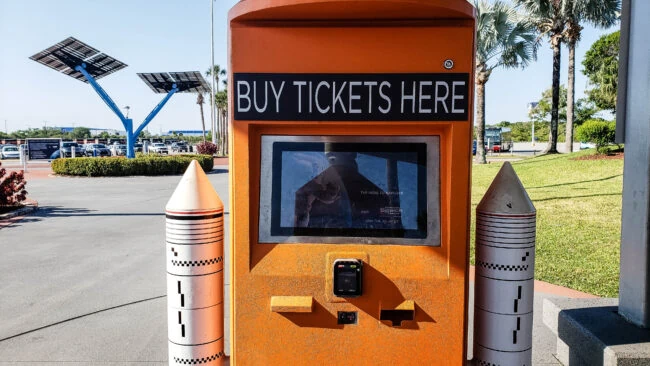
Closing time varies depending on the season, but is either at 5 or 6 pm, meaning you have 8-9 hours at Kennedy Space Center. You can easily fill all that time here. So let’s get into our self-guided tour of Kennedy Space Center and your itinerary for the day.
Kennedy Space Center Attractions Map
Be sure to scroll around, zoom in and out, and explore for a better idea of the Kennedy Space Center attractions, including insight into where the launch pads are, the bus route to the Apollo Center, and much more.
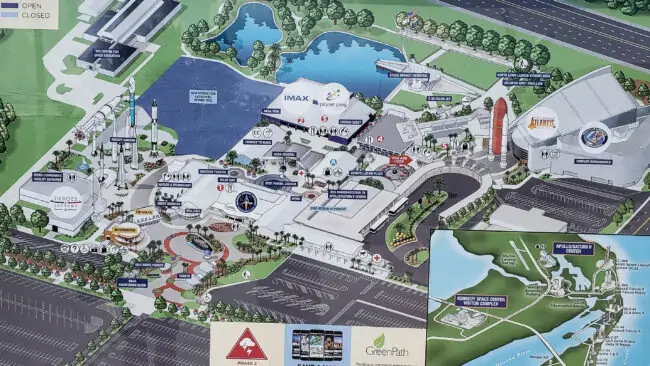
Rocket Garden
Just inside the entrance of the Visitor Complex stands the imposing Rocket Garden where you will find real versions of some of the most famous rockets in space flight.
The rockets are primarily from the early days of the space program but also feature some more modern ones, as well.
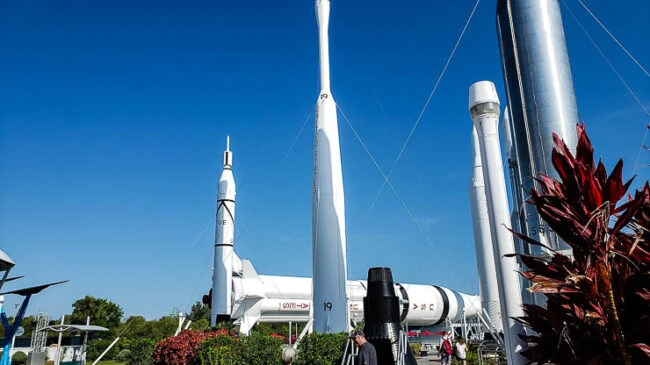
There are guided tours of the Rocket Garden at different times throughout the day, including one just after the park gates open. I would suggest hopping on this one!
The guided tour of the Kennedy Space Center Rocket Garden lasts about 15-minutes and will share with you some of the key developments and progress in manned space flight from the earliest days up through the Saturn IB rocket.
You will also find massive rocket motors and the (tiny) capsules of the various programs which you can crawl inside to experience.
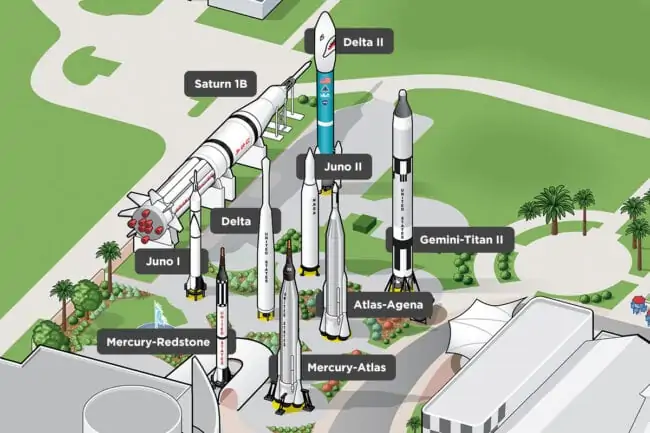
Doing the Rocket Garden first allows you to explore the earliest days of rockets (ballistic missiles) and manned spaceflight, plus it is all outdoors so it is best to do it before the Florida sun starts beating down on you.
Rocket Garden Time: 15-30 minutes
Heroes & Legends
Right beside the Rocket Garden, you should backtrack and head up the ramp to the relatively new Heroes & Legends building. This building explores some of the qualities needed by those early-day astronauts to strap into the top of a retrofitted missile and blast off into space.
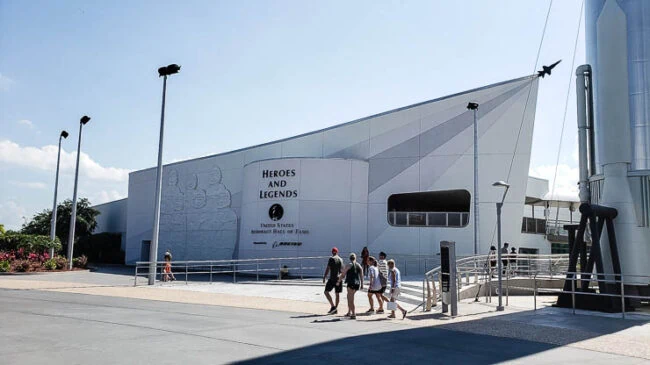
The Heroes & Legends exhibit is among the newest additions to Kennedy Space Center and includes many very well-done exhibits, including interactive displays and attractions. You will learn a lot here about the astronauts involved in Mercury and Gemini, including their personal lives and what lead them to be part of the space program.
Don’t miss the Mercury mission control room, the Redstone rocket hung overhead, and Mercury and Gemini capsules on display.
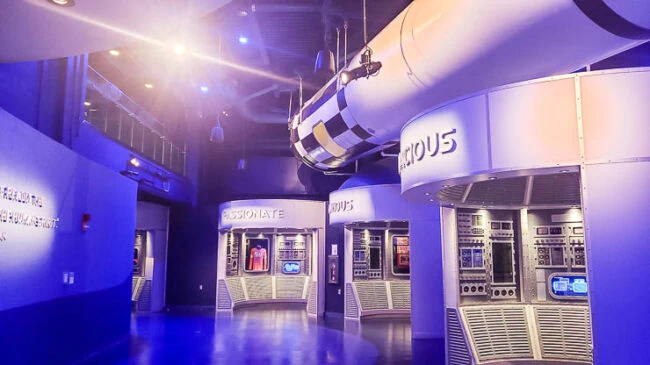
The Heroes & Legends exhibit highlights Mercury and Gemini in greater detail, using some of the rockets you just saw in the Rocket Garden like the Mercury-Redstone, Mercury-Atlas, and Gemini-Titan rockets.
The Mercury 7 program sent six astronauts (flying solo) into space intending to reach orbit. Gemini sent up two astronaut teams with various space travel goals in preparation for Apollo, including spacewalks, docking procedures, and more.
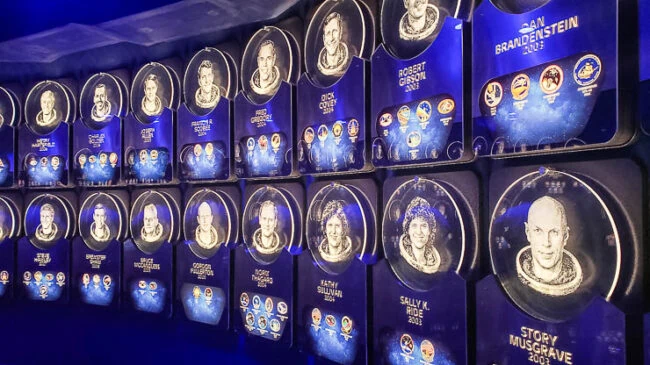
You can make a brief stop at the Astronaut Hall of Fame near the end of the exhibit, or save it for later in the day if time allows.
- Heroes & Legends: 1 hour
Apollo / Saturn V Exhibit
After learning all about Mercury and Gemini, let’s take the lessons learned and head to the Apollo program! The Apollo / Saturn V building at Kennedy Space Center is located in a separate area, accessible via a short bus ride.
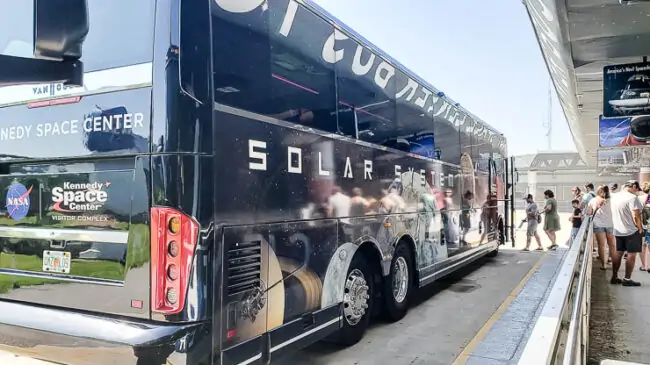
Head straight to the bus area and board for a short guided tour of Kennedy Space Center to otherwise inaccessible areas. On the bus route, keep your eyes open for the Mercury-Redstone rocket soon after leaving, the SpaceX operations area (more on them later), and the VAB (Vehicle Assembly Building) where projects like Artemis (to return to the moon) is being worked on.
You will arrive at the Saturn V exhibit and be guided through a multi-room video introduction that is quite impressive. This tour or entrance will eventually lead you directly under the massive engines of a Saturn V booster hanging the length of the building… A mind-blowing sight to see the size and scale of the rocket that took humans to the moon.
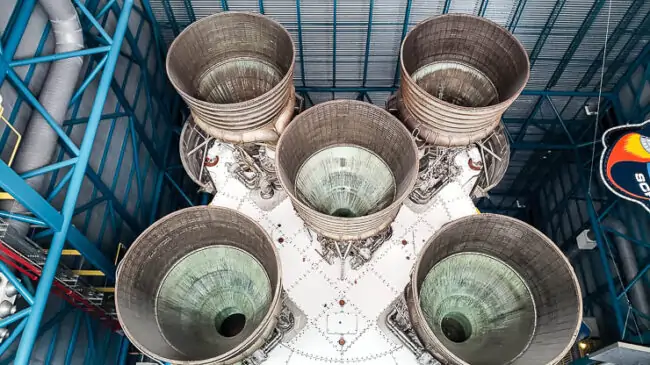
There are numerous exhibits and rooms around the perimeter of the building that explore more of the various Saturn V flights culminating in the landing on the moon with Apollo 11.
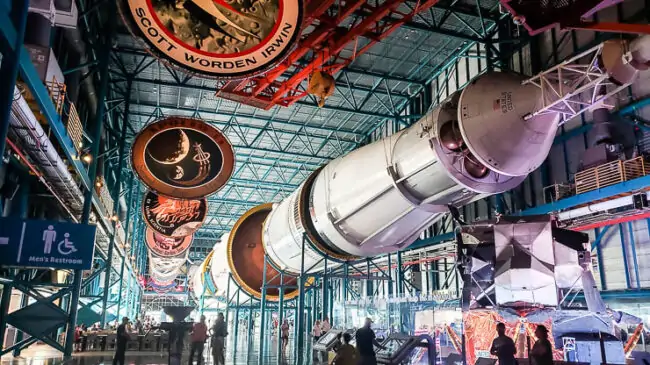
There are somber reminders of the dangers as well, at the exhibit of Ad Astra Per Aspera detailing the tragic deaths of three astronauts: Gus Grissom, Ed White, and Roger Chaffee, in a fire on the launchpad. The first Americans to die for space exploration, and not the last.
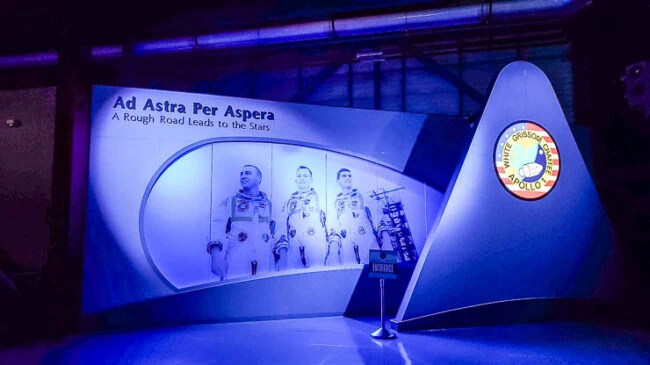
Be sure to step outside the building to see Launch Pad 39A and B, the launch pad of so many major milestones in space flight, with lots more to come in the future!
Adjacent to the building is also the Banana Creek viewing area where you can see rocket launches which are becoming increasingly frequent (about once per week). If you are visiting on a launch day, you might want to save the visit to Apollo / Saturn V to coincide with an hour or two before launch.
Click here to check out the Kennedy Space Center launch schedule.
If you’re following the suggested itinerary, you may want to grab lunch here at the Moon Rock Cafe or at the Orbit Cafe back in the main visitor complex area. Either way, you will want to grab the bus back.
Apollo /Saturn V exhibit time: 1-2 hours
Want to Travel More for Less Money ?

I will teach you the top methods I’ve used to save big money ??? during more than a decade of continuous travel in my best-selling book Big Travel, Small Budget. See for yourself, the book has nearly 200 unbiased opinions and 4.4 out of 5 stars on Amazon! ⭐⭐⭐⭐⭐
Space Shuttle Atlantis
After taking in the history of Mercury, Gemini, and Apollo, we are ready to embark on a new and exciting chapter of human space flight with the introduction of the Space Shuttle! The Space Shuttle Atlantis exhibit is located adjacent to the drop-off area for the Apollo bus.
The Space Shuttle marks the most lengthy period of space flight, with 30 years of service, over 100 missions, and more than 300 astronauts flown.
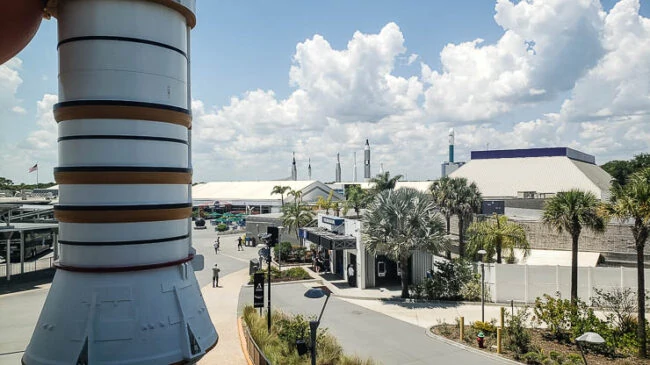
The ability to partially reuse a spacecraft (the shuttle is a glider that is reusable, but the rockets themselves were not) marked a huge turning point in space flight systems and set some of the groundwork for what we have today.
Inside the Space Shuttle Atlantis exhibit, you will find the actual Space Shuttle Atlantis after one of the most impressive reveals you will ever see. Seeing the scale of the Atlantis up close and personal is another mind-blowing experience.
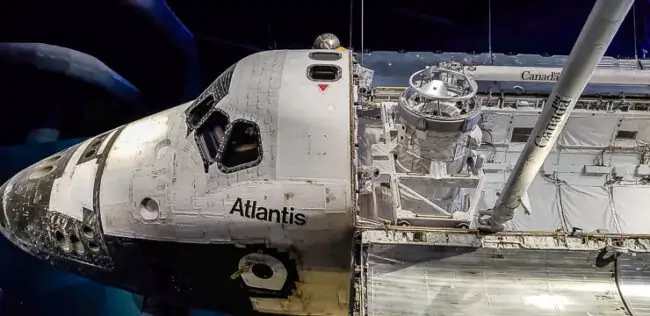
The age of the Space Shuttle is a whole new era that introduced the International Space Station (ISS) still flying overhead and was instrumental in the launch (and repair) of the Hubble Space Telescope which fundamentally changed our conception of the universe.
Don’t miss out on the Space Shuttle Launch Experience which gives you a bumpy ride to space and even the illusion of weightlessness upon arrival. There are numerous exhibits about the shuttle and related technologies throughout the building, and also be sure to check out the memorial to the 14 astronauts who died in the Challenger and Columbia accidents, along with some wreckage from both vessels. Another reminder of the dangers.
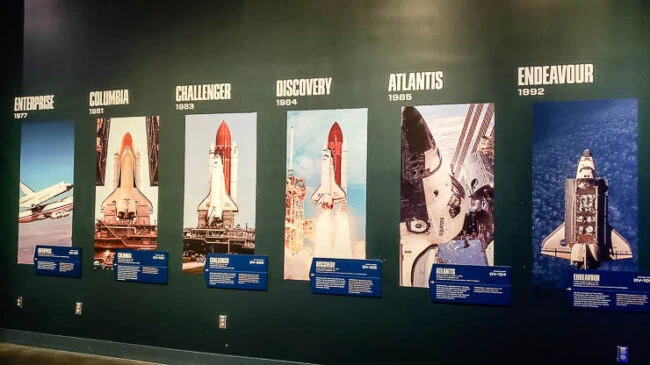
The space shuttle itself was retired in 2011 after 30 years of service, and the United States sat idle for nearly 10 years, unable to launch U.S. astronauts from U.S. soil, instead having to buy seats from the Russians to launch from Kazakhstan just to reach the International Space Station… But that was all about to change.
Space Shuttle Atlantis time: 1-2 hours
Gateway Launch Complex
Finally, back near the Rocket Garden at the entrance to Kennedy Space Center is the newest addition, the Gateway Launch Complex. This exhibit takes us into modern times and even explores some possibilities for the future…
Here you will find some space-flown hardware including a SpaceX Falcon 9 first-stage booster, a SpaceX Dragon Capsule, an Orion Capsule, and some other space hardware like the Boeing Starliner Capsule, Sierra Space Dream Chaser, and concepts for new space station elements.
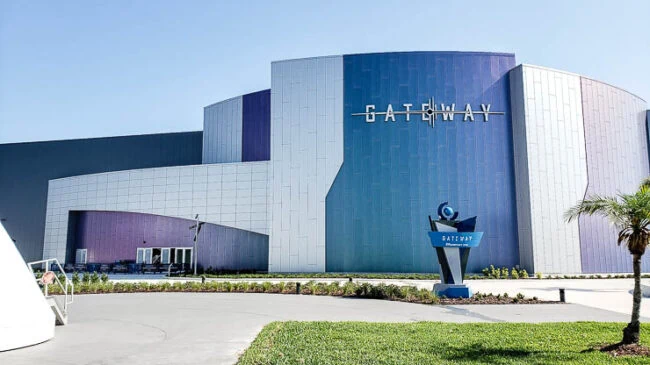
It was, of course, the SpaceX Falcon 9 that brought Americans back to the International Space Station from U.S. soil with their first manned flight in November 2020, more than 9 years after the last Space Shuttle flight, and certainly one of the few bright spots in the dark days of the pandemic.
These are the reusable boosters that return to earth, landing upright with engine ignition. It has happened so many times now (some individual boosters have more than 13 landings) but it still seems like CGI or magic every time, especially when they land out at sea on a giant barge. The Falcon 9 is still only partially reusable, and the next step is fully reusable rockets.
In terms of the future, there are some proposals for space station capsules and flight here, as mentioned, plus four different interactive experiences where you can take off to Mars, Trappist-1, and other destinations.
Who knows what the future holds for space flight? Well, after today, you’ll have a pretty good idea of our progress, how we got there, where we are today, and what the future could hold.
Gateway Launch Complex time: 1-2 hours
Tour of Kennedy Space Center Itinerary
- Rocket Garden: 15-30 minutes
- Apollo / Saturn V: 1-2 hours + 30 minutes for bus shuttle (15 minutes each direction)
- Lunch: 1 Hour
- Space Shuttle Atlantis: 1-2 hours
- Gateway Launch Complex: 1-2 hours
- Recommendations to fill any extra time below
These five exhibits on this tour and itinerary of the Kennedy Space Center will fill your entire day but there are still more things to see… These five destinations or exhibits are the most important, not only in terms of the history of space flight but also the most impressive and complete exhibits at Kennedy Space Center.
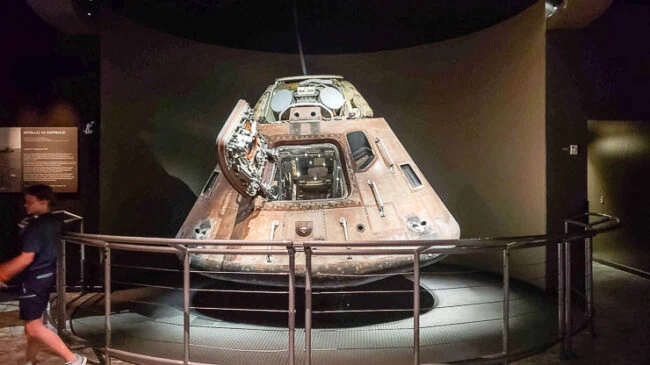
Visiting the exhibits in this order will take you on an in-depth tour of American spaceflight. Here is a recap of the programs along with some notable accomplishments and a timeline.
- Alan Shephard first American in space (1961)
- John Glenn first American to orbit the earth (1962)
- Gordon Cooper with 22 orbits (1963)
- Ed White with the first American spacewalk (1965)
- Neil Armstrong performed the first manned docking in space (1966)
- Neil Armstrong first man on the moon (1969)
- Apollo 17 the final voyage to the moon (1972)
- Bruce McCandless first untethered spacewalk (1984)
- Hubble Space Telescope launched into orbit (1990)
- Eileen Marie Collins was the first woman to command a Space Shuttle mission (1995)
- First crew abroad at the International Space Station (2000)
- SpaceX Dragon capsule docks with ISS, the first private spacecraft (2012)
- SpaceX Falcon 9 lands the first stage of an orbital booster for the first time (2015)
- U.S. Astronauts travel from U.S. soil again to the ISS on a SpaceX Falcon 9 (2020)
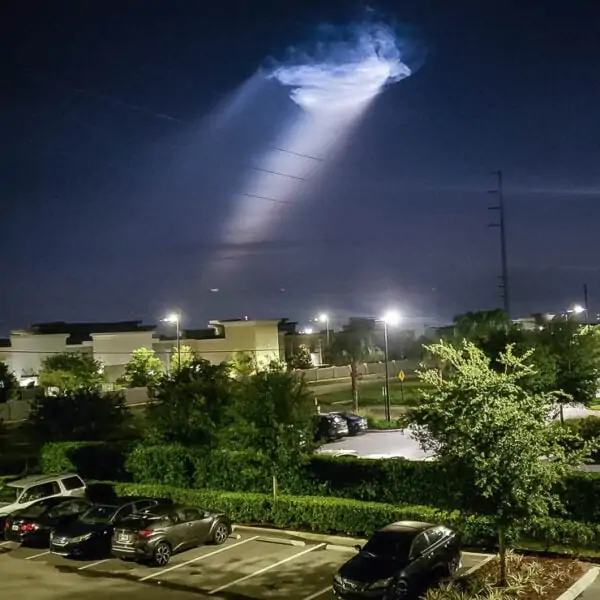
Tip: Read the book Into That Silent Sea & In the Shadow of the Moon before you go to gain better insight into the early days of the space program and a better appreciation for everything you will see here.
If you have more time that you want to utilize, I’d suggest budgeting a little more time on the period of most interest to you, whether that is the Space Shuttle, Apollo, or early Mercury/Gemini programs.
If you want a break, I’d suggest working in an IMAX movie after lunch or in the afternoon — check out the app or pamphlets at the entrance for a schedule. There are also massive gift shops if you want a NASA or SpaceX t-shirt (the best one is at the main plaza).
You can also finish out the day by visiting Journey to Mars, the Space Memorial Mirror, the Nature & Technology exhibit, or the U.S. Astronaut Hall of Fame if you bypassed it earlier while visiting Heroes & Legends. These are all secondary exhibits, in my opinion, and should be left for the end of the day or included in future visits.
I hope that this suggested itinerary and schedule of Kennedy Space Center prepare you for an incredible day at one of my favorite places in Florida. I’m adamant that Kennedy Space Center is not just a stopover to include on an Orlando family vacation, but an incredible destination in its own right.
The experience is even more incredible if you can time it with a scheduled rocket launch from Kennedy Space Center. Unmanned launches are a pretty regular occurrence these days, so your odds are good! But even if you can’t make a launch, the visit to Kennedy Space Center is 100% worth it and I try to return periodically to absorb even more details and insights about space exploration and to explore new additions to Kennedy Space Center.
Be sure not to miss my guide on things to do at the Kennedy Space Center with more details about each exhibit and the highlights you can’t miss at each spot, plus thoughts on where to stay in Titusville and other necessary trip planning help.
Tips to Book Your Trip Now & Save Money
Book Your Flight Book a cheap flight with Momondo , they’re my favorite search engine. Or better yet, start travel hacking so you can fly for free. Another great search engine is Skyscanner .
Book Your Accommodation Book cheap accommodation in advance. For hostels I recommend HostelWorld , for hotels I use Booking.com or Hotels.com , and for apartments or longer stays, I use Airbnb . I like to check reviews on TripAdvisor prior to reserving.
Don’t Forget Travel Insurance This is easy to overlook but SO important. It will help protect yourself from illness, injury, and theft while traveling. VERY important. And be sure to read my article about international travel insurance for more details
- SafetyWing (best for digital nomads)
- World Nomads (most comprehensive)
Looking for the Best Companies to Save Money With? Check out my budget travel resources page for the best companies to use when traveling. I list all the ones I use and recommend to save money when I’m on the road.
Did you enjoy this self-guided tour of the Kennedy Space Center? Take a second to share it on Twitter, Facebook, or Pinterest. Thanks!
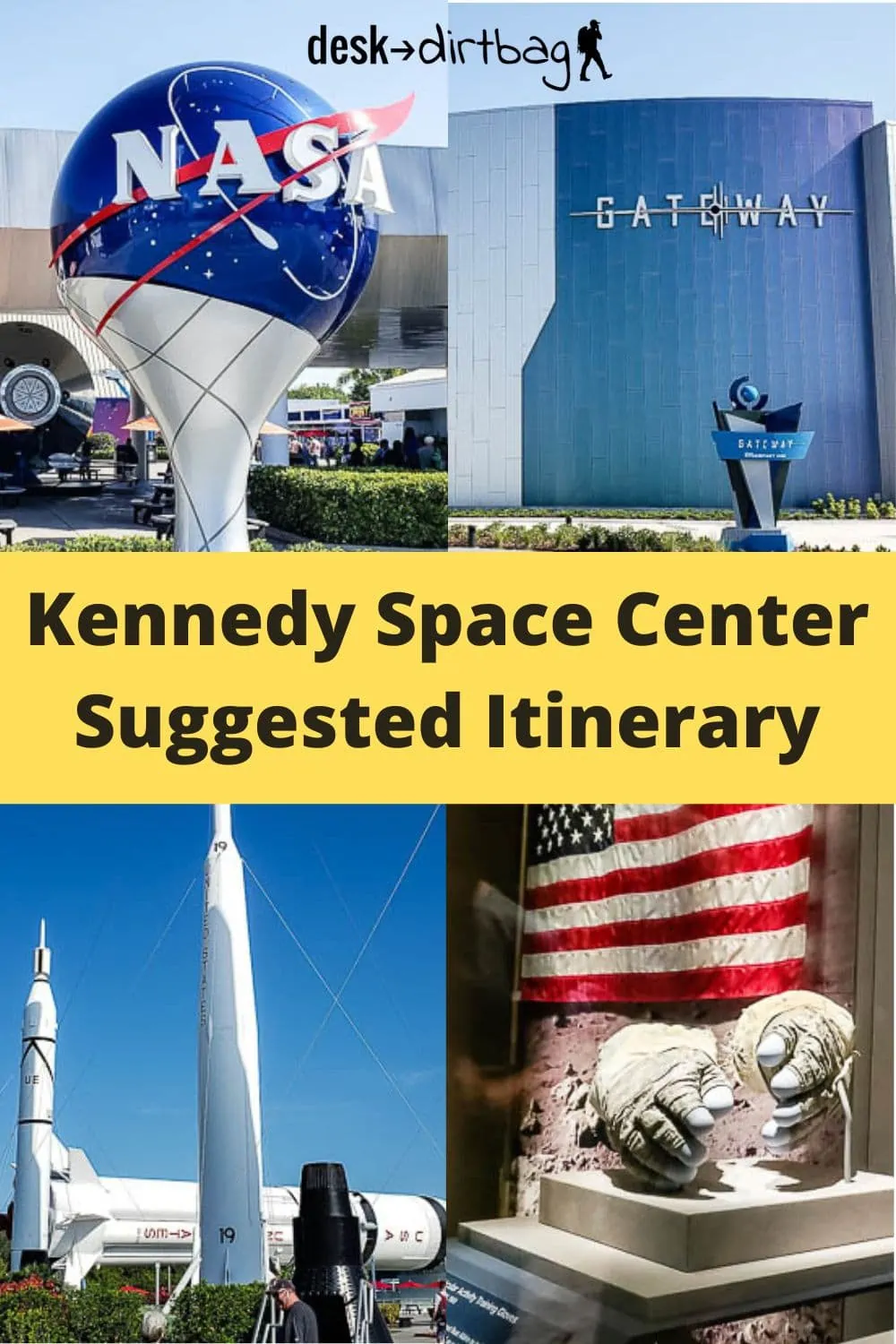
- Latest Posts
Latest posts by Ryan ( see all )
- Kazakhstan Food: Exploring Some of its Most Delicious Dishes - August 7, 2023
- A Self-Guided Tour of Kennedy Space Center: 1-Day Itinerary - August 2, 2022
- Fairfield by Marriott Medellin Sabaneta: Affordable and Upscale - July 25, 2022
- One of the Coolest Places to Stay in Clarksdale MS: Travelers Hotel - June 14, 2022
- Space 220 Restaurant: Out-of-This-World Dining at Disney’s EPCOT - May 31, 2022

Thank you SO much for this itinerary! Just visited, and this helped a ton 🙂
Leave a Reply Cancel reply
Your email address will not be published. Required fields are marked *

7 Must-Know Tips for Visiting Kennedy Space Center
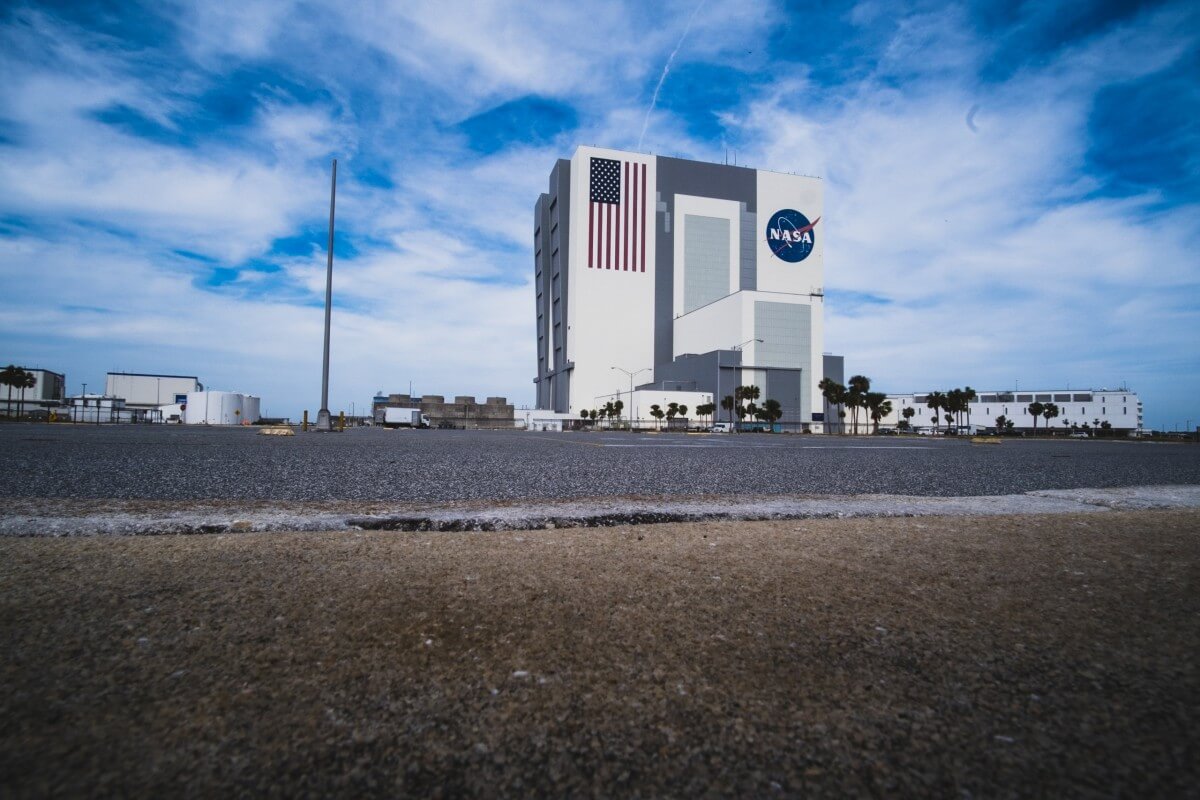
Visiting Kennedy Space Center (KSC) isn’t supposed to be rocket science. But I guess, in a way, it is.
I mean, before my first visit to Kennedy Space Center, I had a million and one questions.
Is the bus tour included in admission? How long is the tour? Can I purchase tickets online? Can I skip the line ( because patience and I don’t get along like we used to )? Why is the location listed as Orlando when it’s actually in Cape Canaveral? And is KSC even on Cape Canaveral or is it on Merritt Island?

So by the time I got to the wide concrete path leading up to KSC’s iconic tall white building, I was more than confused.
Until I wasn’t.
Just a few seconds before I entered, one simple word blocked over the KSC entrance, in clear sky blue, brought clarity: EXPLORE.
So that’s just what I did – explore. And during that time, I learned a few things to do (and not to do) whilst visiting Kennedy Space Center.
Here are 7 tips you need to know before visiting Kennedy Space Center.
Table of Contents
Know Where To Purchase Your Ticket
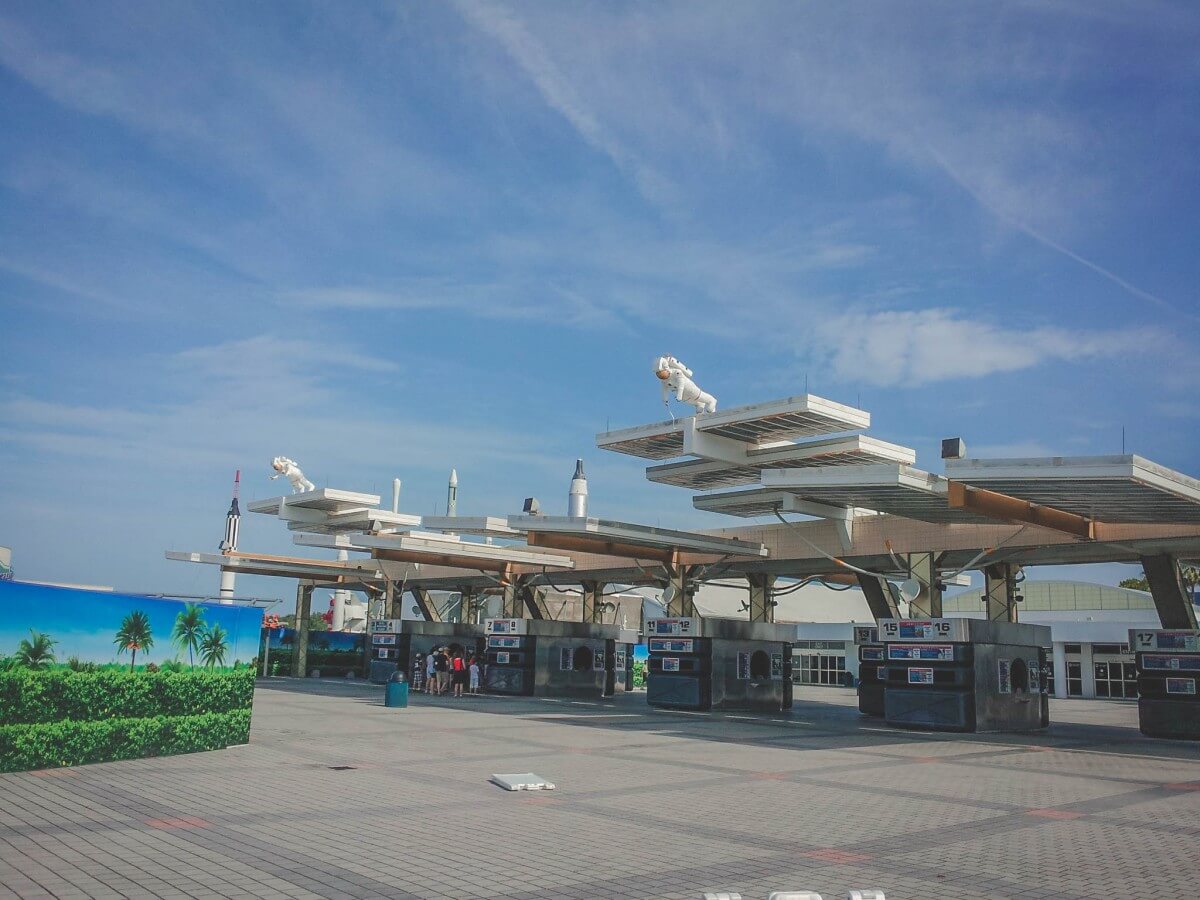
There are a lot of places that “sell” Kennedy Space Center tickets. Most of the websites you see online offering KSC tours are either a) just general admission tickets ( not a personal guided tour as they’d have you believe – how rude ) or b) a scam.
If you want to purchase your ticket online before visiting Kennedy Space Center, you can do so here (on Kennedy Space Center’s official website).
Kennedy Space Center Tip: If you purchase your ticket online, make sure you print out your ticket before arriving! You need to have printed tickets to enter KSC.
Several companies also offer skip the line tickets, which is exactly what I crave at the Chicago O’Hare Airport ( yikes ), but out here – on Merrit Island – not so much.
I purchased my tickets in-person while visiting Kennedy Space Center and I don’t regret that decision one bit!
Your ticket ($75 per adult) includes admission to:
- Kennedy Space Center Bus Tour ( this is how you visit the Apollo/Saturn V Center )
- Rocket Launch Viewing ( if available )
- The Exhibits
- Astronaut Encounter
- Rocket Garden
When you purchase in-person, you get a map and a list of showtimes ( the map is kind of clunky, but the list of showtimes is incredibly helpful ).
P.S. Your ticket does not include parking. If you’re planning on visiting Kennedy Space Center by car, parking will set you back an extra $10.
Know That You Should Avoid Visiting Kennedy Space Center On The Busiest Days
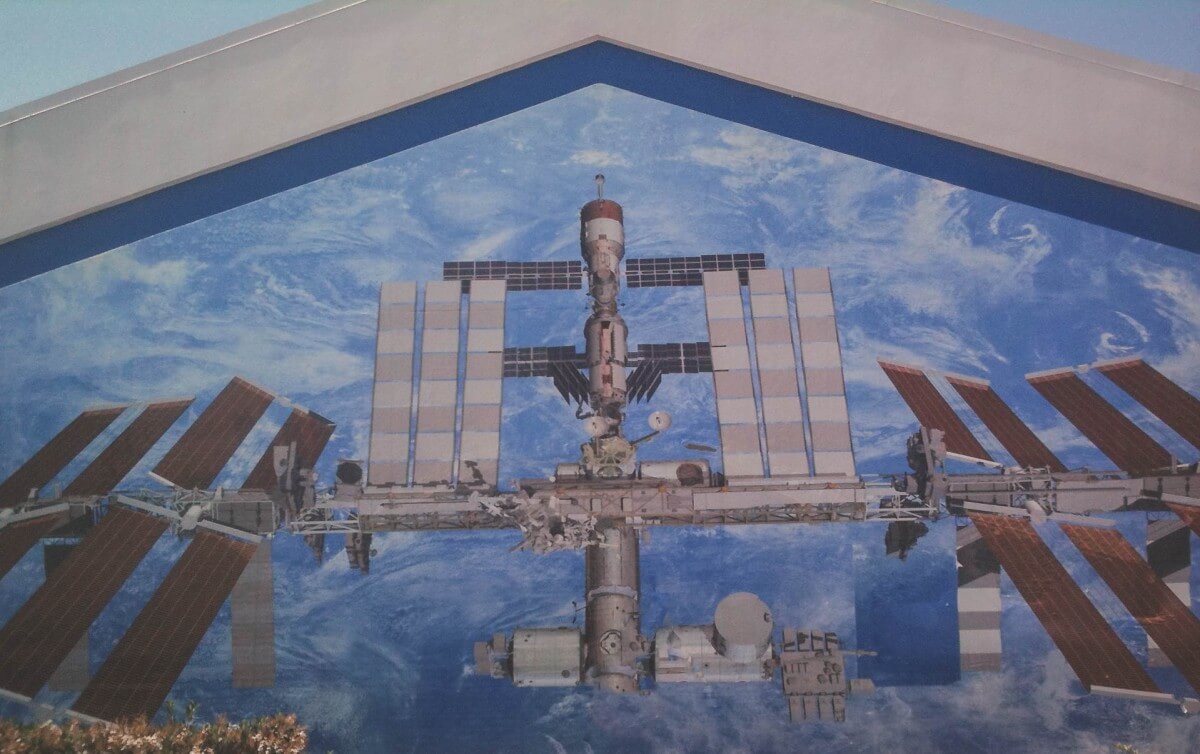
Visiting Kennedy Space Center during the holiday season (between Christmas and New Year) can be overwhelming.
To be honest, KSC isn’t usually a crowded attraction ( I’ve always been able to get in and out of lines in roughly 20 minutes ).
But in the wintertime and summertime (when school is out), the waits border on hectic.
Try to visit Kennedy Space Center on a weekday morning if you can. Go early. KSC opens at 9 AM ( you can park at 8:30 ) and closes at 6PM.
The big bucket list items are the Bus Tour and Space Shuttle Atlantis. Head to those attractions first!
And if you have the time, opt for an early or late lunch outside ( there’s always a rush in the parking lot at noon ).
Kennedy Space Center Tip: Most restaurants and eateries at KSC close at 2 PM. If you’re planning on eating there, try to pick up a bite as early as possible (to guarantee seating).
My first time visiting Kennedy Space Center, I ate at Moon Rock Cafe .
I got to dine under the Apollo 5 Rocket ( which at first, made my nerdy heart sing for joy ). But to be honest, the menu is limited and crazy expensive. I just ate there because I didn’t know you could leave KSC and re-enter later on in the day ( if you plan on doing this, remember to get your hand stamped ).
Know That There’s A Bus Tour
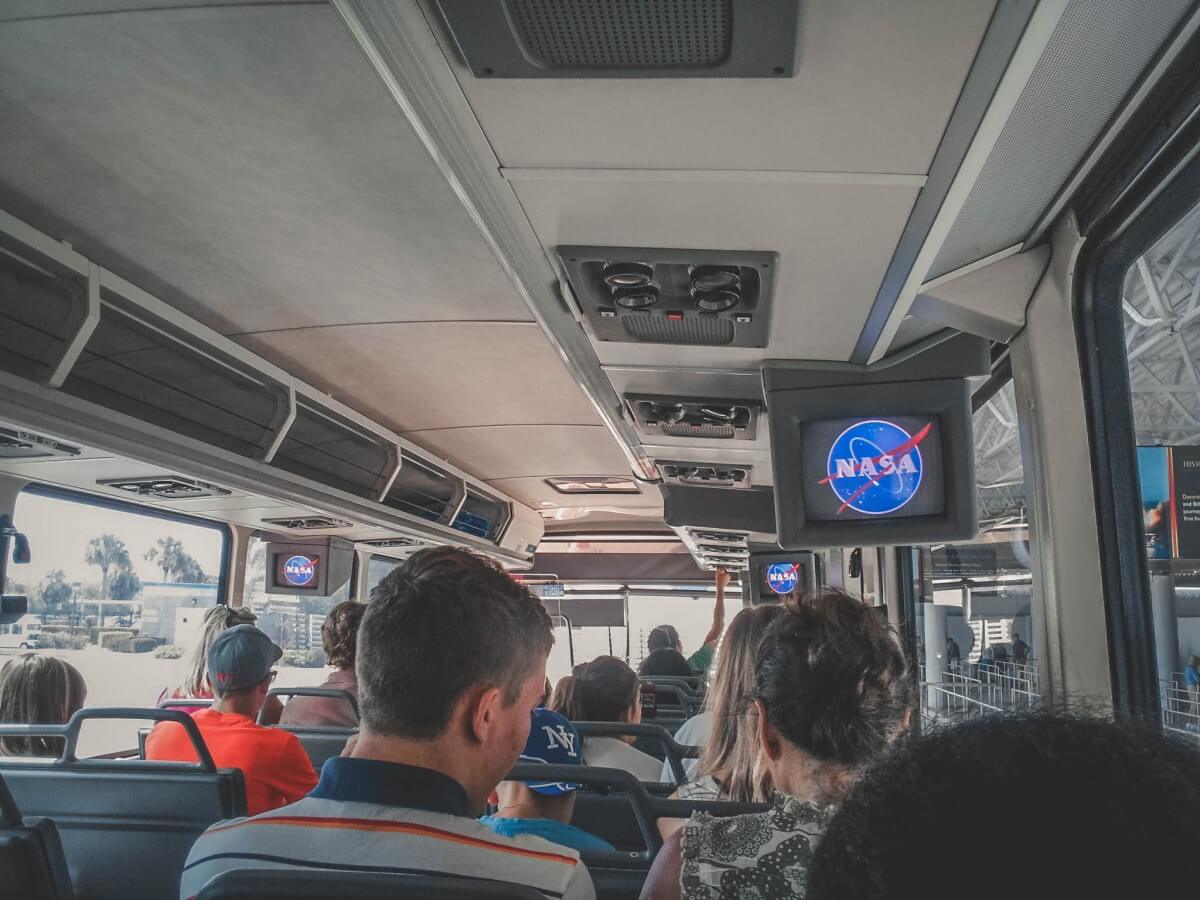
The bus tour was hands-down my favorite part of visiting Kennedy Space Center.
The bus departs every fifteen minutes from the Visitor Complex and transports you to the Apollo/Saturn V Center.
The marshy Florida landscape skates by.
Kennedy Space Center Tip: The last bus tour (which lasts 45 minutes) departs 2.5 hours before closing. Don’t miss this attraction!
At the Firing Room Theater, the scene is set. You enter the Space Era. The race to launch a rocket is on. Sputnik threatens USA’s Superpower status. Worry brews.
This virtual tour is guided by a former launch controller so the experience is surreal. You feel like you’re listening to a memoir instead of a traditional guide. I loved every second of it!
Right outside is the Saturn V moon rocket. I still can’t believe this monstrosity is the size of a football field! Ridiculous, huh?
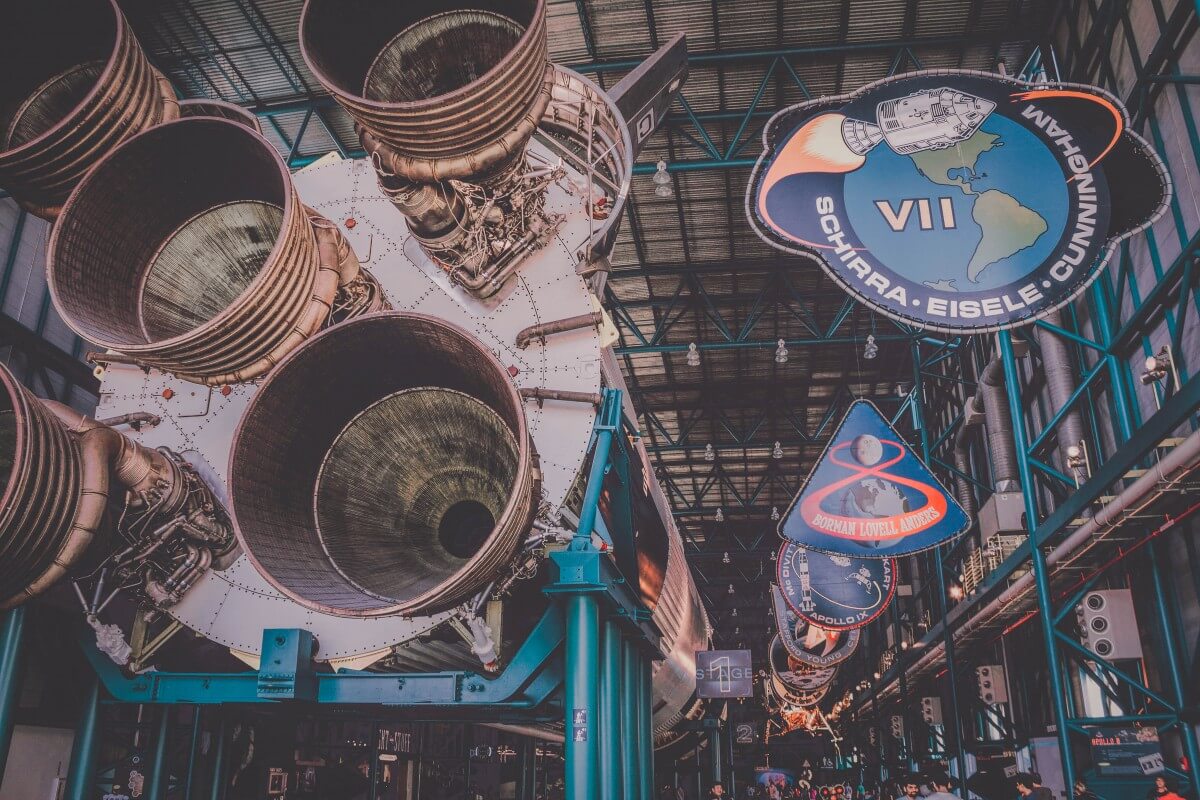
For Apollo 13 fans ( I’ve seen that movie way too times ), you can even see James Lovell’s spacesuit. Ah, fangirl moments.
After stopping by the Lunar Theater, exit towards Apollo Treasure Gallery, where Alan Shepard’s spacesuit and a bit of his lunar module, the Kitty Hawk, reside.
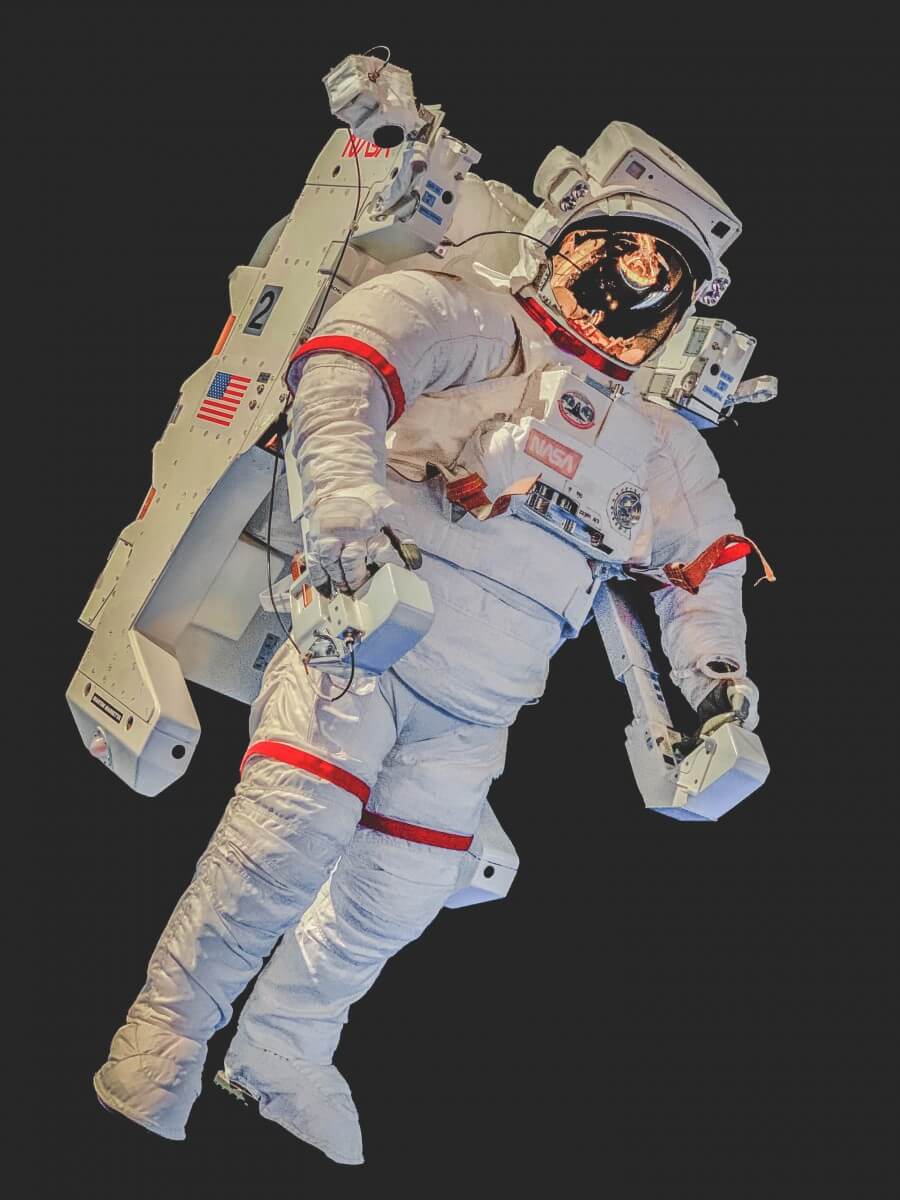
Apollo Treasure Gallery
Alan Shepard is the most underrated astronaut in the Apollo 11 Mission. I can’t begin to describe how excited I was to see a commemoration to him.
Exploring space is like taking part in a stage performance. Just because we know the names of the lead actors (Neil Armstrong and Buzz Aldrin) doesn’t mean that the makeup artists and costume designers aren’t essential.
Kennedy Space Center captures that idea perfectly via the Apollo Treasure Gallery!
Know The Bag Policy Before Visiting Kennedy Space Center
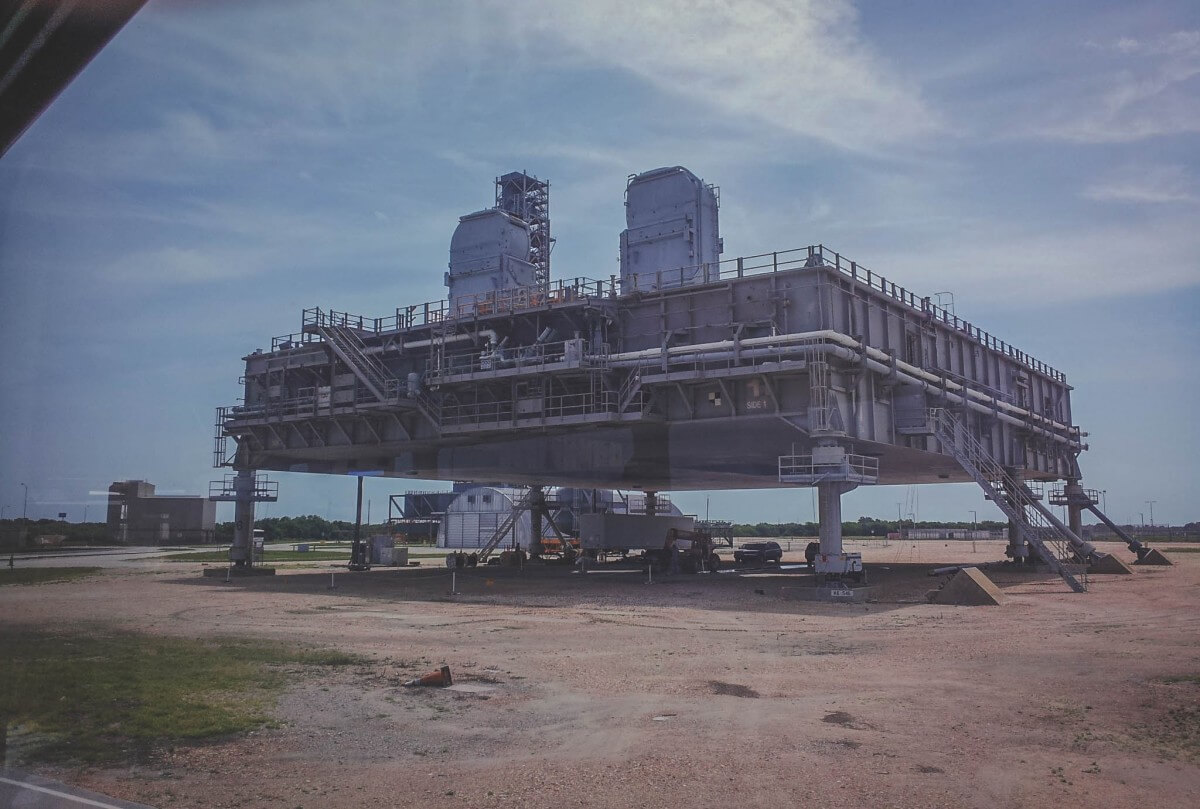
I huff and slide my bag over my shoulder.
Having my belongings screened while visiting Kennedy Space Center isn’t unexpected, but the process is tiresome and slow ( think Flash from Zootopia ).
Here’s what you can and can not bring during your Kennedy Space Center visit:
Know What To Do In The Rain
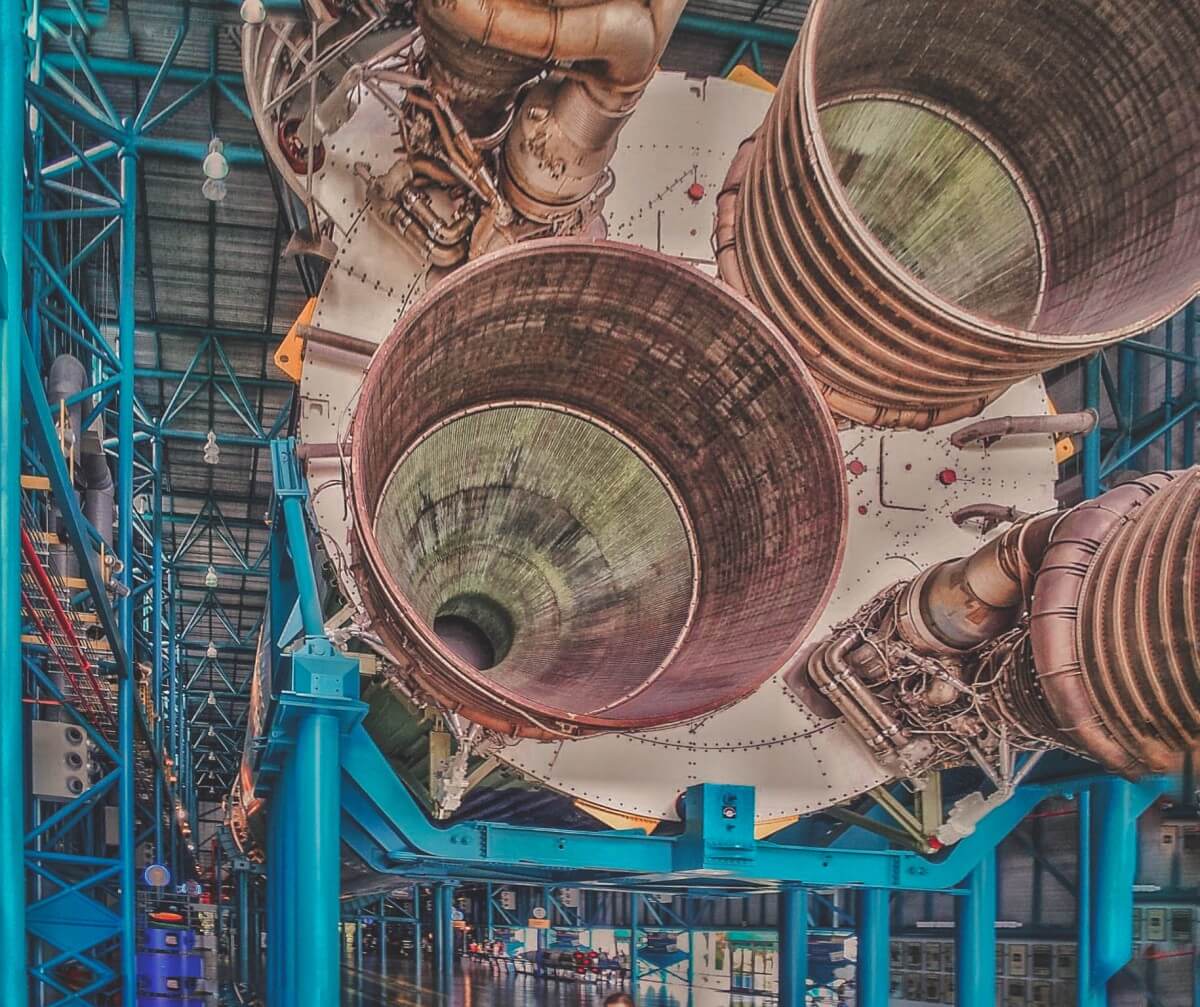
The sky is overcast, weighed down by a deep, broody gray. Rain begins to fall to the ground in heavy plops.
I duck inside. Afternoon showers in Florida are common.
And after spending two days visiting Kennedy Space Center, I was incredibly grateful for the wealth of indoor attractions ( considering it was raining 90% of my Florida trip ).
- Journey to Mars: This is a theater presentation followed by some multimedia exhibits that really get into the logistics of running a mission to the red planet. You can see prototypes of food that might grow on Martian soil. Unfortunately, the whole lab wasn’t filled with potatoes, but I’m okay with a non-potato diet ( Martian reference – I highly recommend picking Andy Weir’s book for the plane ).
- The Atlantis Zone: The Atlantis, a mammoth space shuttle rotated 43.21 degrees, is held in The Atlantis Zone. If you’re visiting Kennedy Space Center with kids, note that there are lots of interactive exhibits here.
- Imax Theatre: There are three different shows available daily. Since I had a two-day pass, I opted to see all three. Arrive early if you want to catch a glimpse of the 3D IMAX movie in particular ( this one gets filled fast ).
Know These 5 Kennedy Space Center Tips
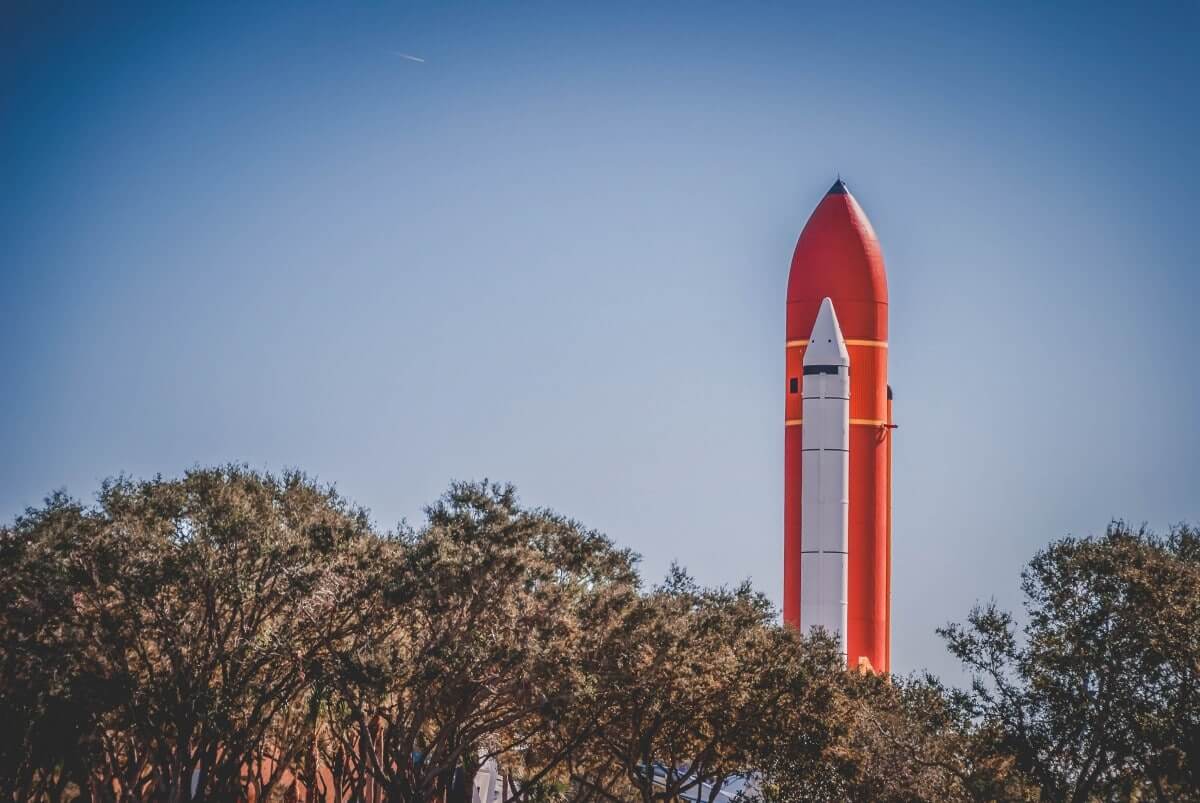
It’s getting late. The sun has dipped. Blank white canvases of rockets penetrate a flaming sky.
- The Rocket Garden is best seen in the afternoon . Walking among some of NASA’s early rockets feels surreal. The garden is located by the front entrance, near the Heroes & Legends exhibit, and it’s one of those places that leaves a big impression.
- High-tail your way to Atlantis . Atlantis is the most popular attraction at KSC. The exhibit takes a full hour to see. It’s engaging and immersive and all-around fun.
- After enjoying the Atlantis Exhibit, get in line for the 10 AM bus tour.
- There’s a ride. Just one. The Shuttle Launch Experience. And I’ve heard it’s good. I didn’t really have the stomach for this since I was a little nervous (I’m not really one for rides).
- Watching a shuttle launch is included with admission ! I’m so mad I didn’t know about this before visiting Kennedy Space Center. I’ll link the launch calendar here .
Know That Kennedy Space Center Is Worth A Visit
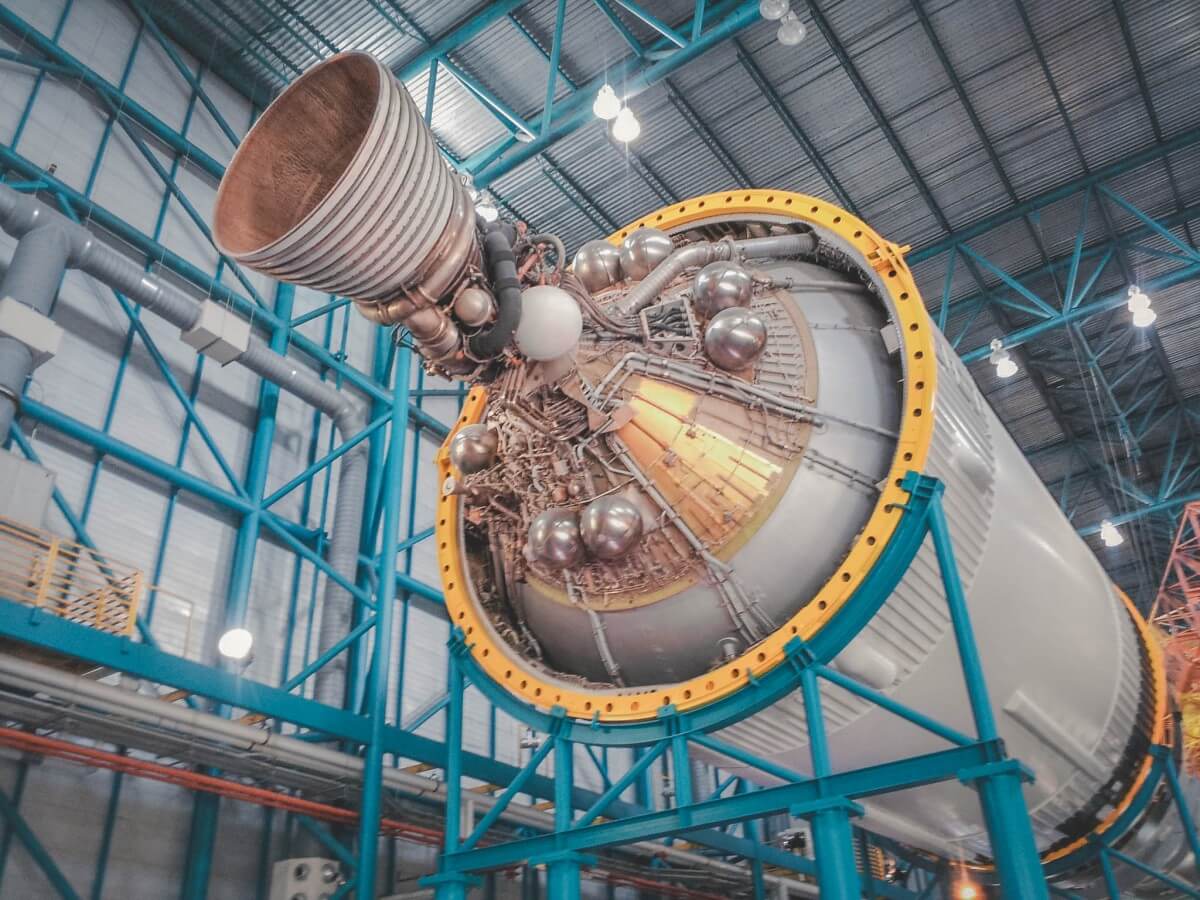
Because the admission price is so steep, it’s hard to determine whether visiting Kennedy Space Center is worth it.
But after wandering through the Atlantis Exhibit, relaxing on a quiet bus tour, and standing amongst the larger than life rockets, I’m certain of one thing: KSC is magical.
It’s not magical in the same way Disney is. This is a place with real-life magic – a magic twisted from science and engineering.
And I guess that’s what makes it the perfect day trip from Orlando.
Did you enjoy this guide to visiting Kennedy Space Center? Do you have any Kennedy Space Center travel tips? Let me know in the comments below!
Editor-In-Chief
Anshula grew up with a love of stories and places. Thirty-five states and 100 bookstores later, she's made her hobbit home in Middle Tennessee. Her Tookish side still takes over and leaves her chasing window seats, literary destinations, adventure books, sunrise coffee, and indie bookshops. She's appeared as a travel source on HuffPost, Reader's Digest, and MSN.
Related Posts
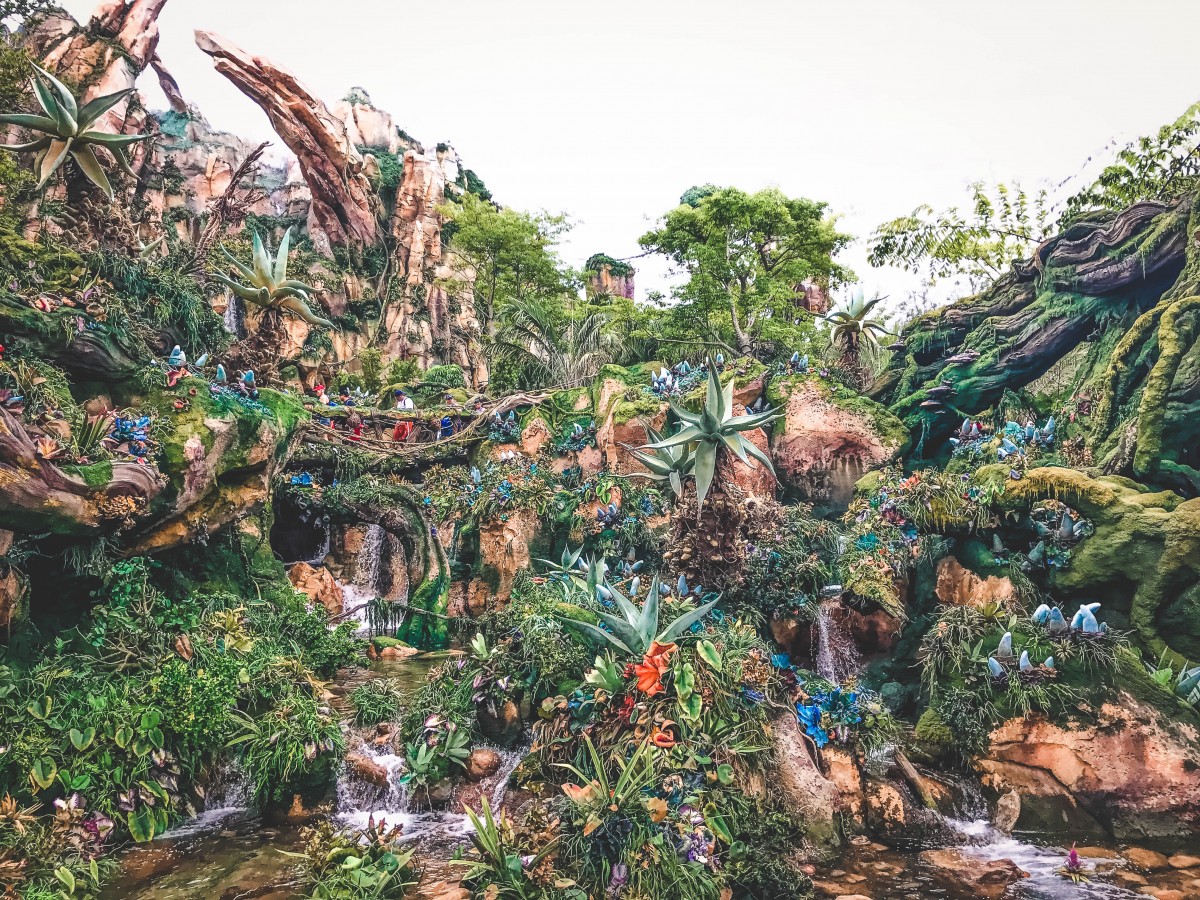
One Day In Animal Kingdom Itinerary
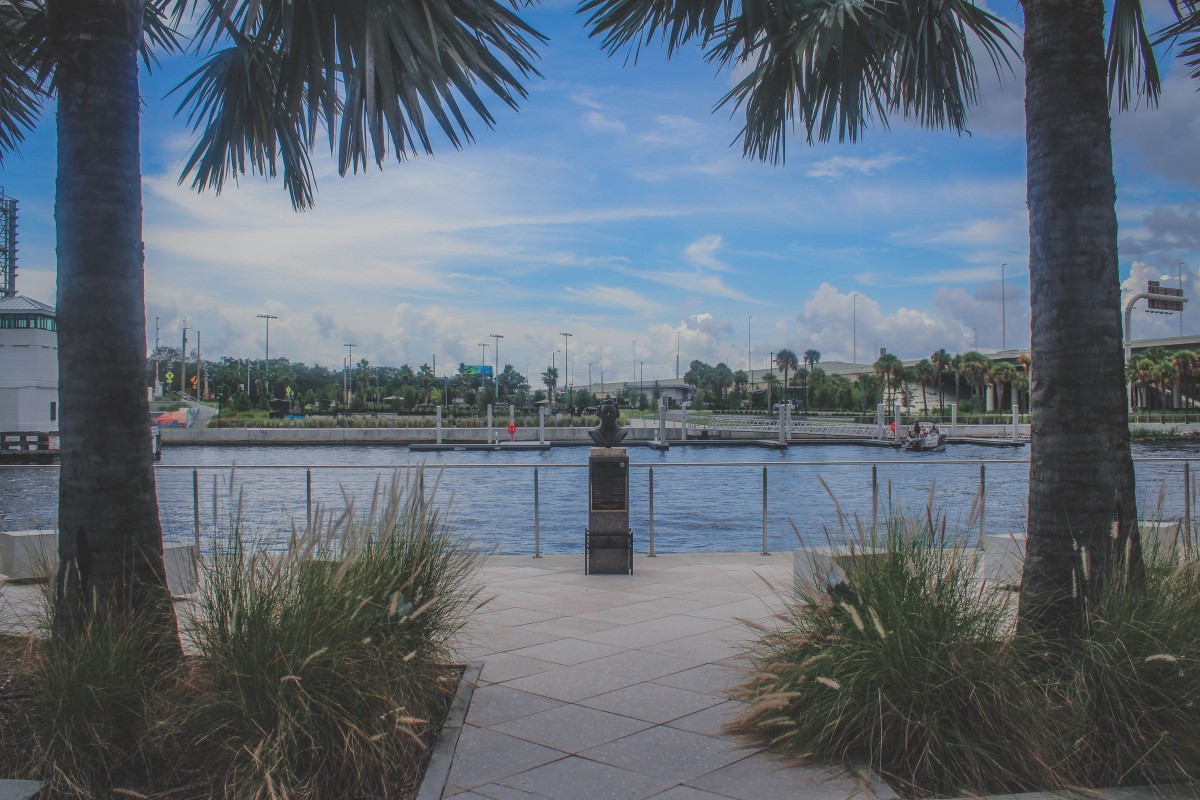
One Day In Tampa Itinerary
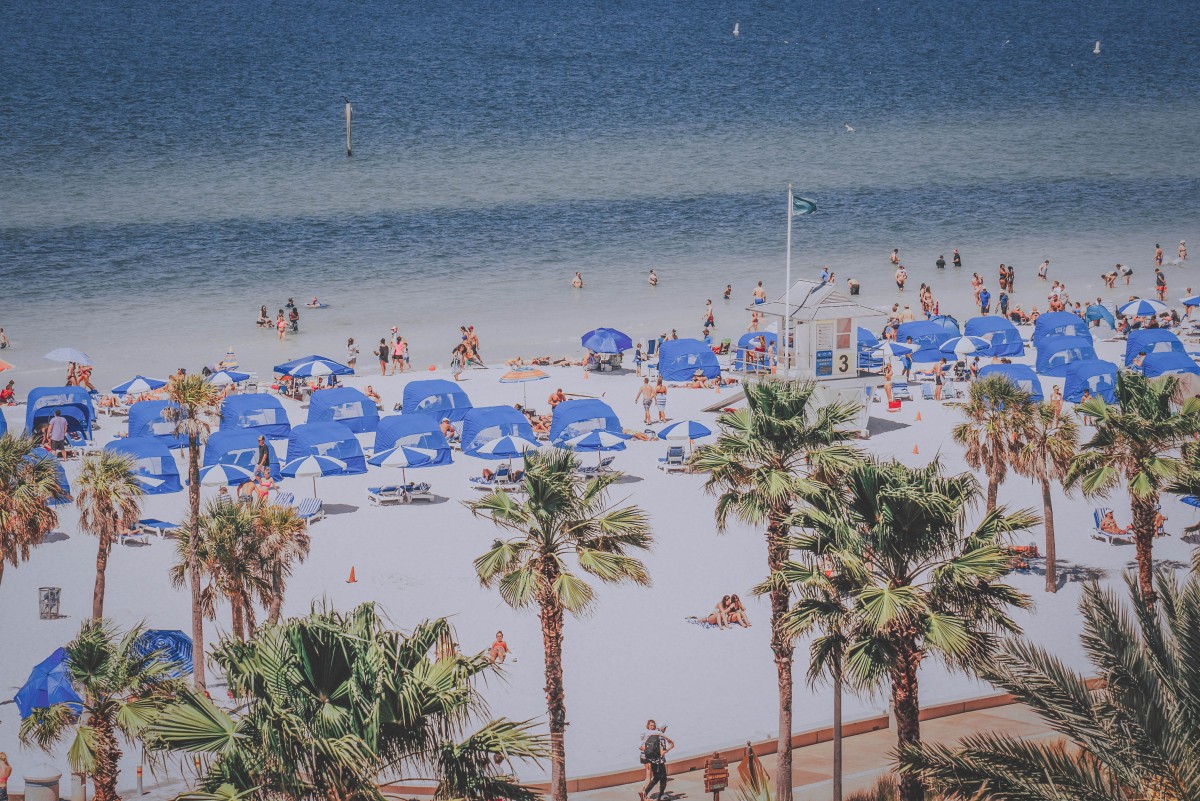
10 Things To Do On A Day Trip To Clearwater Beach
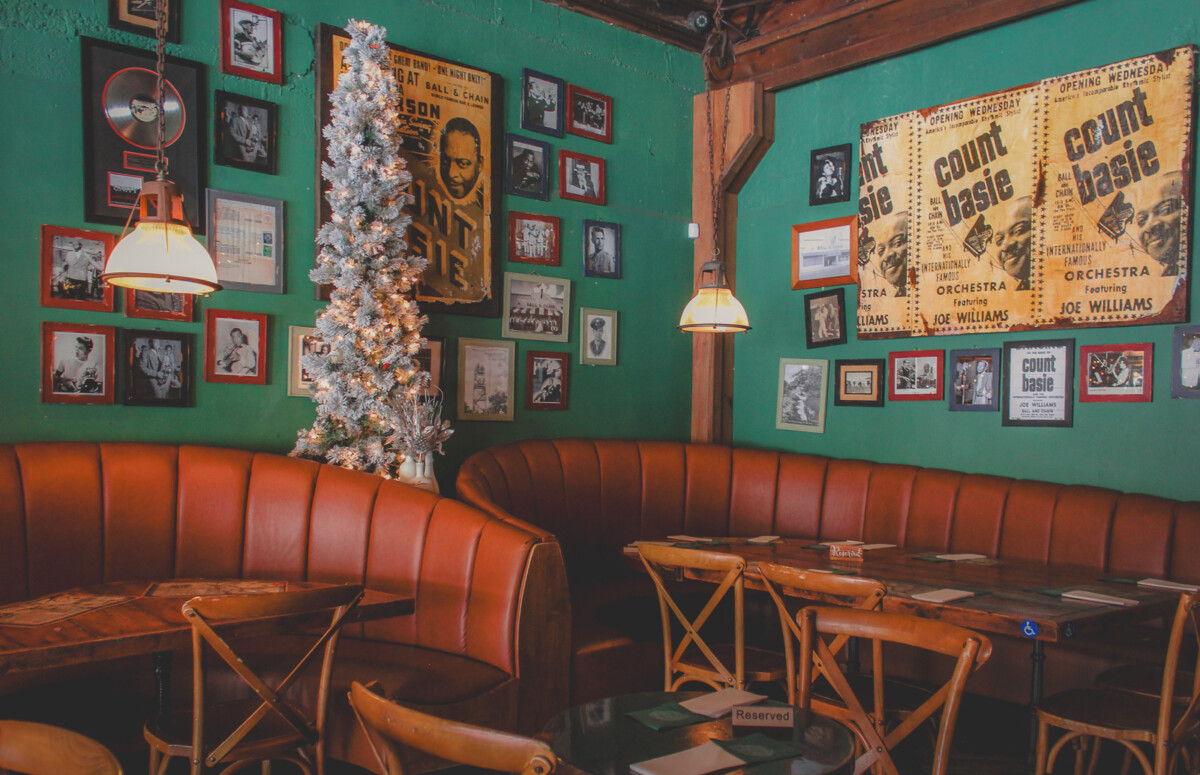
12 Calle Ocho Little Havana Restaurants In Miami To Know About
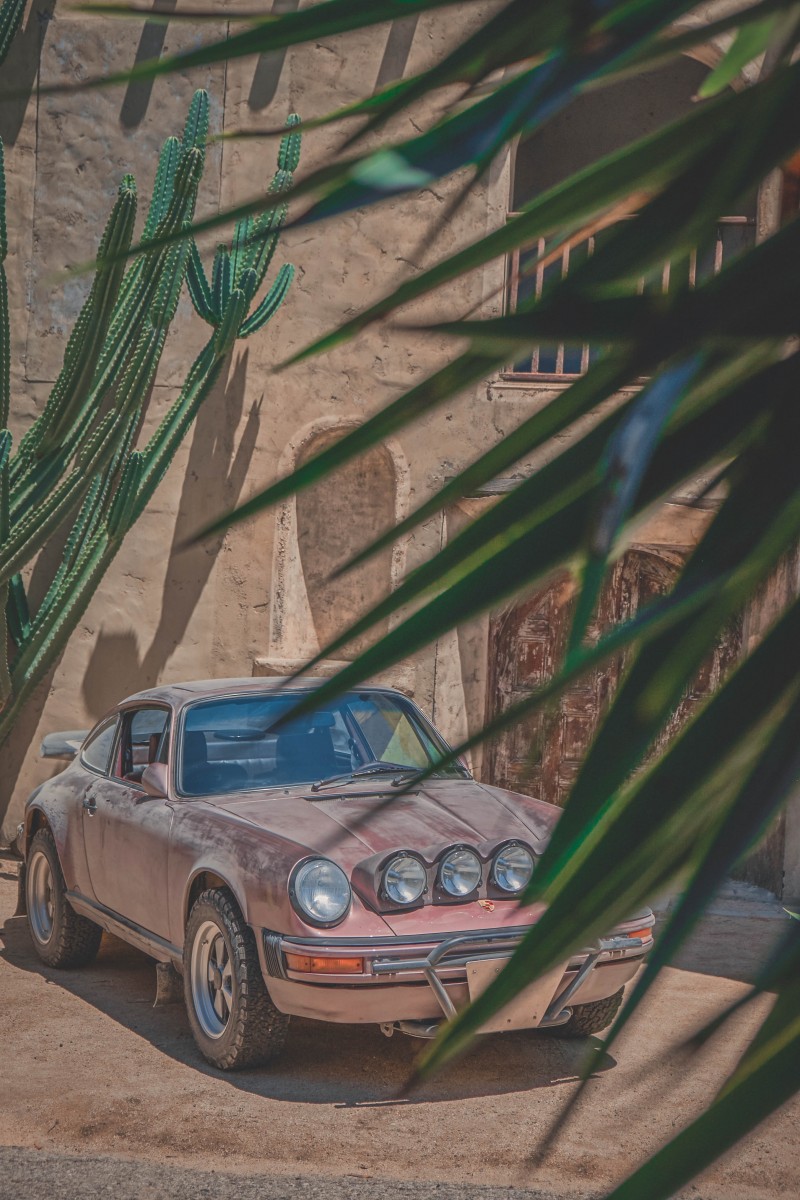
How To Visit Universal Studios On A Budget
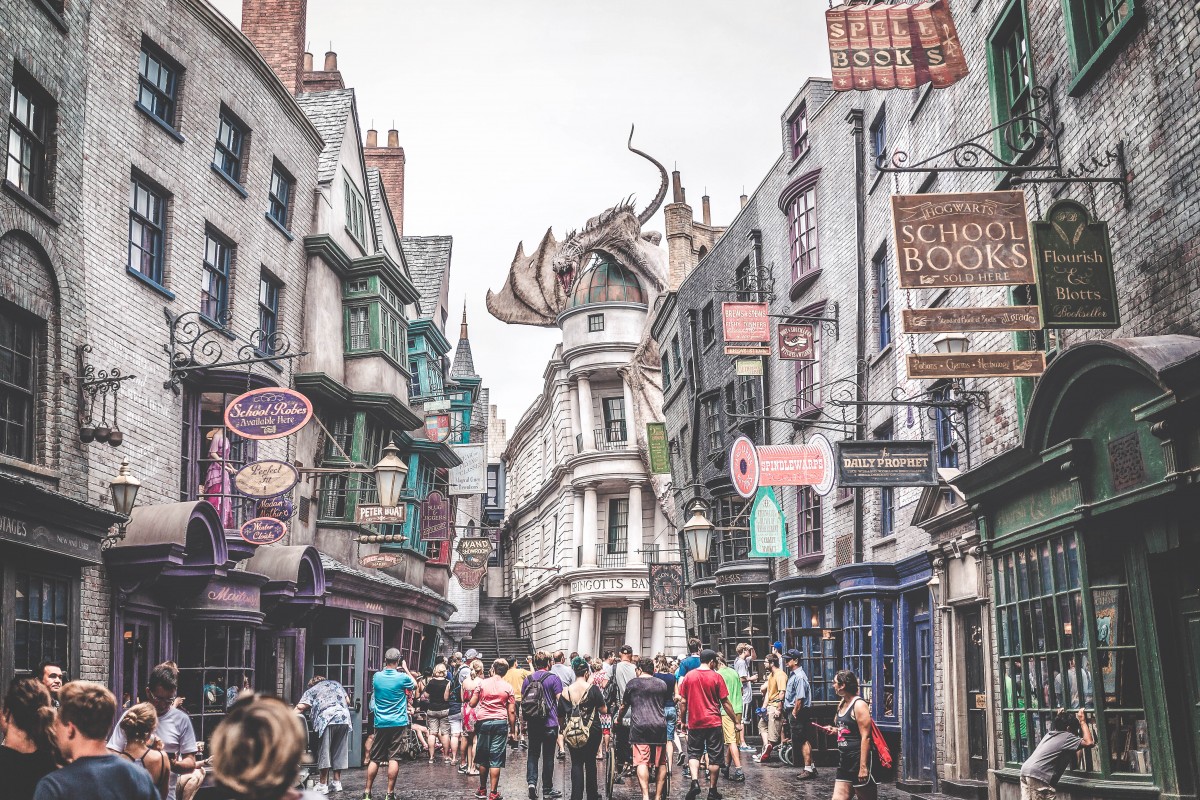
20 Wizarding World Of Harry Potter Tips For Non-Muggles
14 comments.
I went here when I was a kid and fully intended to take my kids for a visit when we went to Florida last February. We had just had a new baby, and I completely underestimated how difficult traveling with a little one can be. We ended up nixing the space center. We go to Florida fairly often because we have family there; so hopefully we will do this on our next visit. Thanks for sharing
Yes, you should totally head up there the next time you visit! It can tough to travel with small children, but fortunately the KSC doesn’t have many long lines, unlike theme parks, which is great when you have kids in tow.
This is the best write up on the KSC I’ve read. I grew up in Orlando and just took my English fiance there last year (who has never been exposed to the space program like I had) and he cannot stop talking about it to this day. Also gorgeous pictures. 🙂
Awww…thanks! That is so sweet of you! I didn’t even think of going until I found out that it was only a day trip from Orlando! I’m so glad I did, though. KSC is an amazing example of how large a part of American culture the space program was!
what an awesome blog. I definitely want to travel more. Your website is very inspiring 🙂
Thank you so much for the lovely comment! Comments like yours motivate me to keep my website going! If you ever need any recommendations of where to go on a certain budget, you can always contact me! I would be happy to help!
Great post! I went there when I was younger and I’ve been thinking of going back because it is such a neat place!
Thanks! You should definately go back! The first time I went, I was around eight, so I my mind was pretty much tuned to the track of “awesome space-stuff” but now that I’m older, I see the Kennedy Space Center with a new perspective!
stupendous post! loved every bit of it. already waiting for your next post. 🙂
Thank you so much! I’m glad you liked it! I should have a new post coming out tomorrow (fingers crossed)!
YAY SCIENCE! Really enjoyed your post <3 It's nice to see people/bloggers promoting experiences that actually enrich a person. (Not that I'm one to throw stones, since my life revolves around cute dogs and beach cocktails…But still…)
An an aeronautical engineer, I thank thee for making a trip to see spaceships and things.
Awww…I’m glad you appreciate it. I’m a huge tech nerd, so I love all things engineering related 🙂
FANTASTIC photos! Great article, too. I come from a NASA family so it’s nice to see people taking an interest in the history of the space program. Two thumbs up, lady!
Leave a Reply Cancel reply
Your email address will not be published. Required fields are marked *
Notify me of new posts by email.
What are you looking for?

Complete Guide to Visiting Kennedy Space Center: Tips & Tricks
This post contains affiliate links, for which I may earn a commission if you make a qualifying purchase.
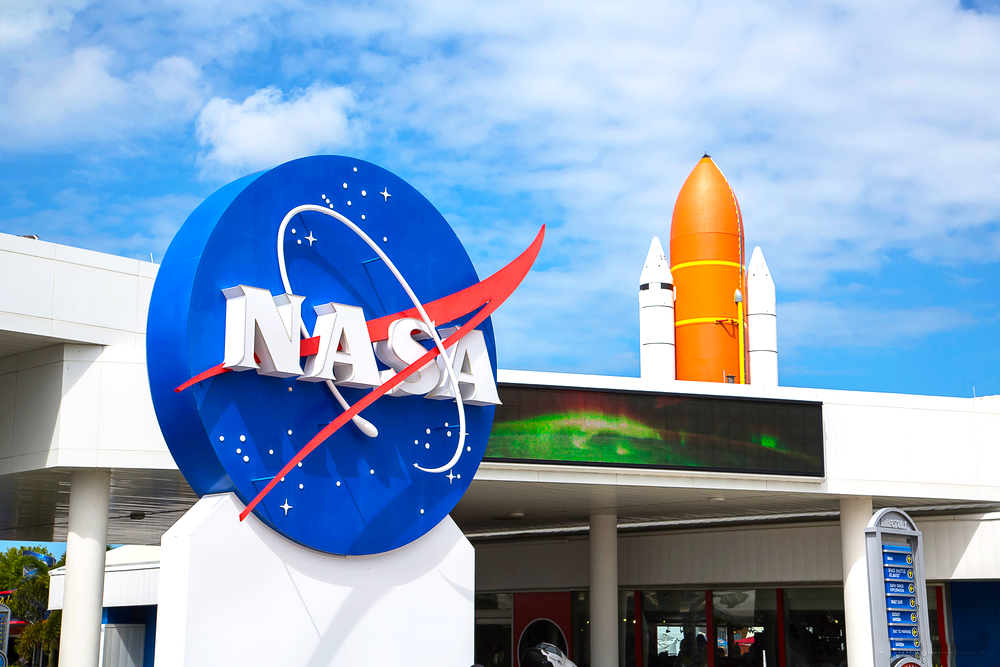
Sharing is caring!
The Kennedy Space Center is likely already on your list if you have an interest in all things space, especially if you’re traveling to Orlando with kids and seeking a hands-on experience.
For Florida travelers with a more passing interest, it can still be a great visit. It can help you develop a greater appreciation for what it takes to run a successful space shuttle program and the bravery and ingenuity involved with planning for a safe, effective space launch.
Our family had an amazing time checking out the Kennedy Space Center, which was the perfect way to mix things up in between Walt Disney World and Universal Studios .
Pro tip: Get your discounted Kennedy Space Center tickets here and bundle them with your rental car for huge savings!
In this guest post, space enthusiast Brian of Travel on the Reg will share his best tips for Kennedy Space Center to make the most of your visit! He’ll share the best things to do at the Kennedy Space Center and how to plan your next trip there with this complete guide to the Florida space site. I took lots of fun photos on our family trip to Kennedy Space Center, and you’ll see those throughout this article since I haven’t gotten to use them elsewhere!
And now over to Brian…
Where is the Kennedy Space Center?
The Kennedy Space Center is on Merritt Island in central Florida. It’s not really a city but an unincorporated area. The area is most well-known for being a NASA launch site as home to the Launch and Landing Facility (LLF), previously known as the Shuttle Landing Facility (SLF).
Merritt Island is also home to the Merritt Island National Wildlife Refuge. That means you may be able to spot some bald eagles on your way to the entrance, and if you opt to stay nearby you’ll want to build in time for a visit on a different day.
NASA actually works with the refuge to make sure any decisions they make about shuttle launches, expansions, and changes to the existing footprint keep the wildlife habitat in mind.
Why was the Kennedy Space Center built in Florida?
The Kennedy Space Center was built in Florida for a few reasons:
- Florida is closer to the equator than most other U.S. states, so rockets and shuttles launched from here use less energy to get out to where they’re going. In this case, where they’re likely going is outer space.
- Florida is on the East Coast. Anything launched from here gets a boost from the Earth’s eastward spin vs. similar efforts out of the West Coast.
- It’s close to the Atlantic Ocean. Any debris coming off the shuttles and rockets will fall into the water rather than in developed areas. Potential explosions, while rare, are also safer over the water.
One of the virtual astronauts you’ll meet while checking out the exhibits at the Kennedy Space Center will give you more details about the benefits of KSC’s location!
The complex is one of 10 NASA field centers around the United States, but it’s arguably the most well-known whether you’re a nerd for space exploration or a more casual observer. That’s what makes it such a popular stop on Florida trips or bigger road trips through the South .
How close is the Kennedy Space Center to Orlando?
The Kennedy Space Center is 44 miles from Orlando. Drive time on that depends on where you’re coming from in Orlando, but expect it to take about an hour with light traffic. You’ll definitely want to rent a car for the trip!
Orlando is pretty notorious for heavy traffic as it’s Florida’s hub for all the fun, so it’s always best to give yourself extra time, especially if you have any timed activities while you’re here.
Is Cape Canaveral the same as the Kennedy Space Center?
Cape Canaveral is adjacent to the Kennedy Space Center, but it’s not the same thing. Both are part of what’s known as the Space Coast. That’s not a reference to alien activity , but a nod to the spaceports located here.
The confusion may be related to the Cape Canaveral Space Force Station, a facility that also serves as a missile and rocket launch site for the U.S. Space Force.
To confuse you further, the Cape Canaveral program has also been known as the Cape Kennedy Air Force Station and the Cape Canaveral Air Force Station. It’s all the same.
Tips for Visiting the Kennedy Space Center
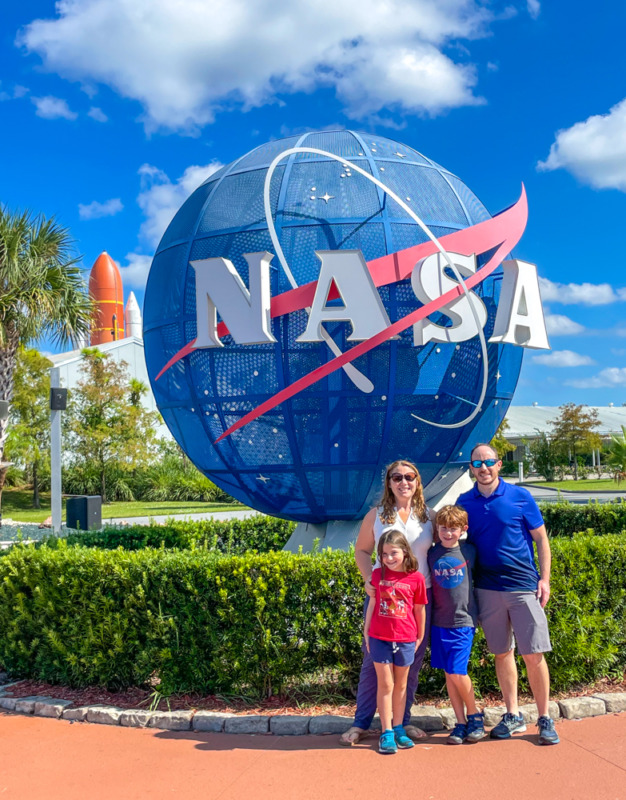
Here are a few things you need to know before visiting the Kennedy Space Center:
- Tickets for Kennedy Space Center are available online. Buy them ahead of time to save a lot of money!
- If you’re only buying general admission tickets, the cheapest discount Kennedy Space Center tickets are available through aRes Travel . Alternatively, you can pay just a few dollars more per ticket but score a huge discount on your rental car through Undercover Tourist when you bundle them together – that can save you hundreds of dollars.
- Ticket enhancements sell out. Book well ahead of time if you know when you’re visiting if you want to do any of the more immersive activities while you’re there.
- Parking is plentiful, but expect to pay a fee of $10 upon arrival.
- You can bring food and bottled drinks (just avoid glass) into the space center. Snacks are encouraged. The pricing inside is what you’d expect out of a theme park-style experience.
- If you don’t bring in food, there are quite a few options once you’re inside. Just expect the upsell. We spent about $25 on lunch that included a serving of fries, a veggie burger, chicken fingers, and two drinks.
How much time do you need at the Kennedy Space Center? You need at least 5-6 hours of time at the Kennedy Space Center to see the highlights. Add more time if you’ve purchased any enhancements.
I highly recommend you get there as early as possible. The center opens at 9am but the gates open at 8:30am. We arrived around 9:30am and met a long line of cars at the entrance. We were parked, past security, and in line for the bus tour just before 10am.
What is the best way to visit the Kennedy Space Center? The best way to visit the Kennedy Space Center is to download the app before you go and plot out your day.
This is basically the Disney World of space. You don’t want to go into this blind, as that may mean you run out of time to do the things that you really wanted to do.
The app allows you to favorite things you need to see and view highlights by location on their Kennedy Space Center map.
There are two locations you’ll be exploring on your visit, by the way, and one is only accessible by the Kennedy Space Center bus.
Best Things to Do at the Kennedy Space Center
We spent a full day at the Kennedy Space Center and still didn’t get to every nook and cranny while we were there. I do think we explored the complex quite well, though, so I’m going to share everything with you in the order we did it.
What should you do first at Kennedy Space Center? The first thing you should do at the Kennedy Space Center is explore the Apollo/Saturn V Center. You’ll get there on a bus tour from the main visitor complex.
Kennedy Space Center Bus Tour
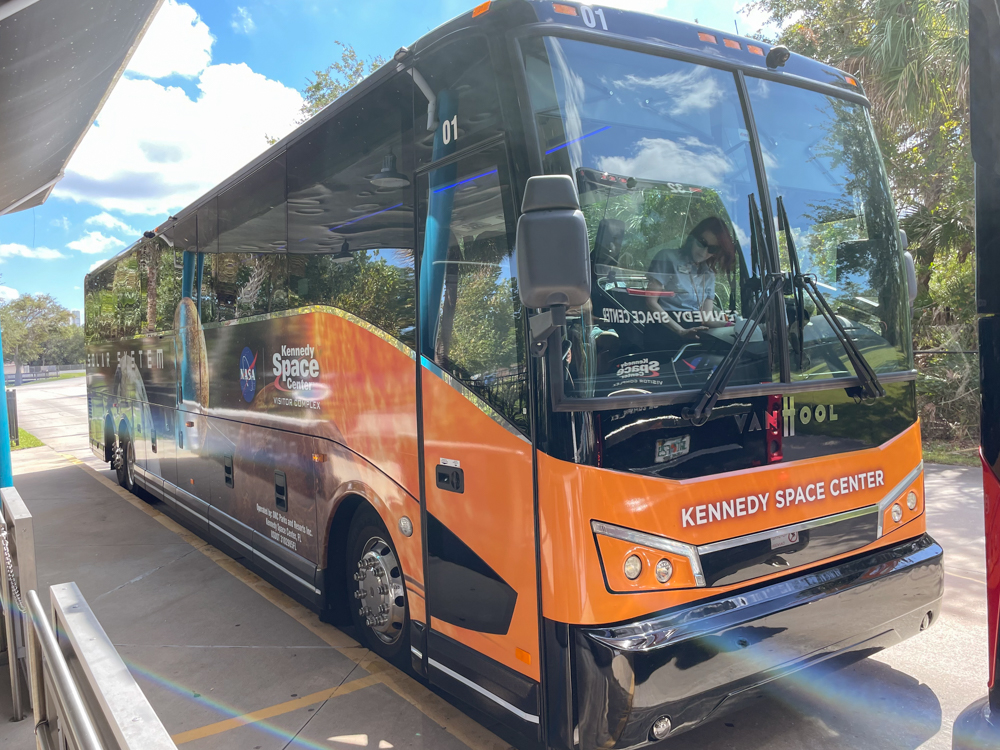
The Apollo/Saturn V Center isn’t accessible on foot. To get there, you’ll need to take the bus tour, which is included in your regular admission ticket.
Access the bus tour at the main visitor complex from NASA Central. (Check out the map on your app or follow signage throughout the park.) If you hit the IMAX theater you’ve gone too far.
You don’t need to pre-book anything, but the park only got more crowded as the day went on. This is why I’m telling you to start with the bus tour.
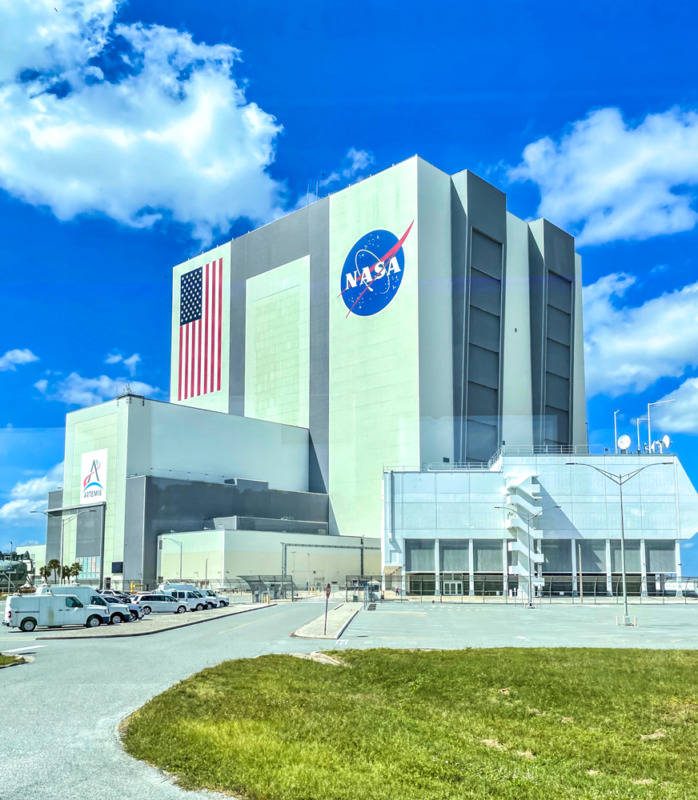
On your bus tour, you’ll drive by the Vehicle Assembly Building, or VAB. You can’t enter the building, but it’s impressive nonetheless. It’s over 500+ feed in every dimension and looks like a massive cube of concrete!
This is where the largest components of NASA’s space program are assembled, including space shuttles and the Saturn V. You’ll learn all about it on your bus tour, so take the earbuds out and listen up.
Apollo/Saturn V Center

Upon arrival at the Apollo/Saturn V Center, you’ll be ushered into a room as a whole bus group for an informative video, then to a second room to watch the Apollo 8 launch.
The simulation comes complete with vibrating seats, and the spectacle was one of my favorite bits from the day.
After this, you’ll be dumped out into the main room, dominated by the Saturn V. The powerful rocket was an essential piece of the success of the Apollo program.
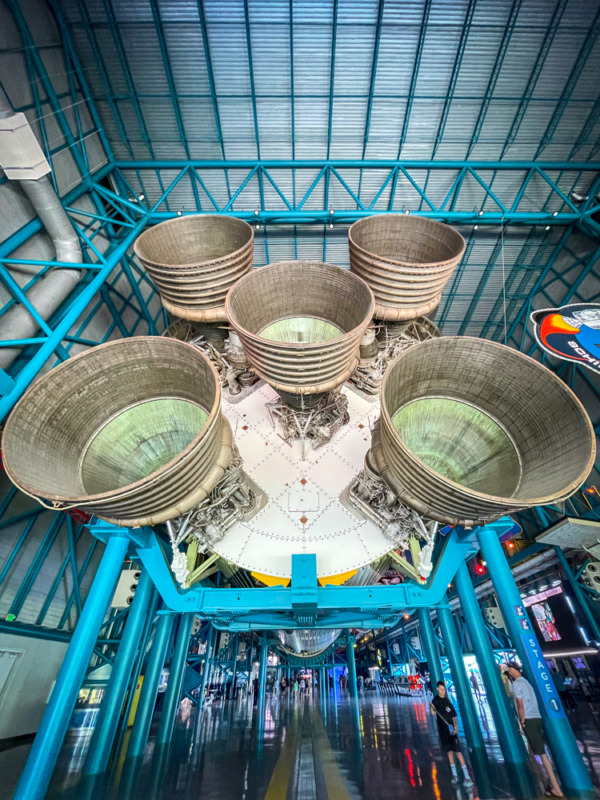
If you’re new to all of this, the Apollo program was the space program responsible for the first moon landing and subsequent missions to the moon. The last flight through the program was Apollo 17 on December 19, 1972.
The Treasure Gallery is on one side and where you’ll find expected treasures, in this case, artifacts of the Apollo program. You’ll also see an exhibit on the Hubble Space Telescope while you’re here. Seriously, there’s a lot to see, so take your time.
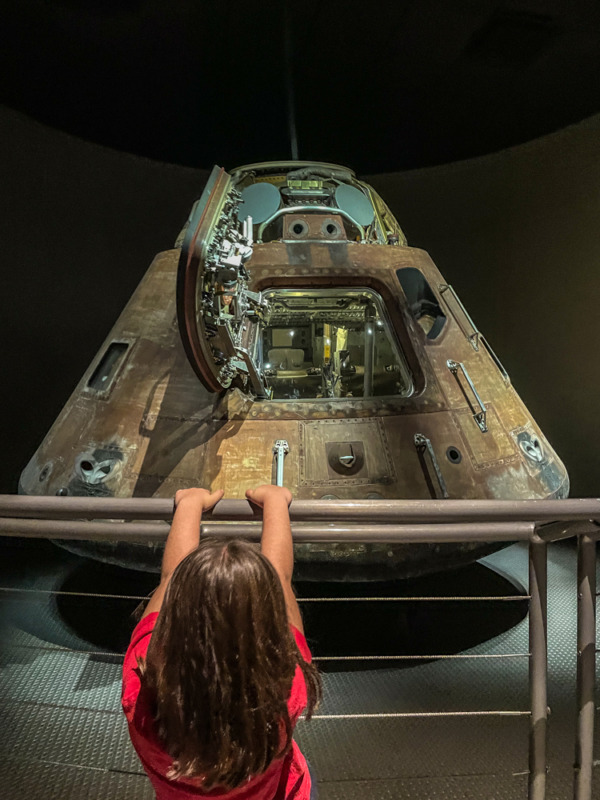
While you explore the exhibits, you’ll hear a call to head to the Lunar Theater. Follow the call. You can always return to the exhibit spaces later, as those aren’t timed. The theater is where you’ll get to see the dramatics unfold around the Apollo 11 launch.
The last exhibit at the Apollo/Saturn V Center is Ad Astra Per Aspera, a memorial to the astronauts who lost their lives on a test rehearsal of the first expected moon launch on Apollo 1. Three crew members lost their lives that day: Gus Grissom, Ed White, and Roger Chaffee.
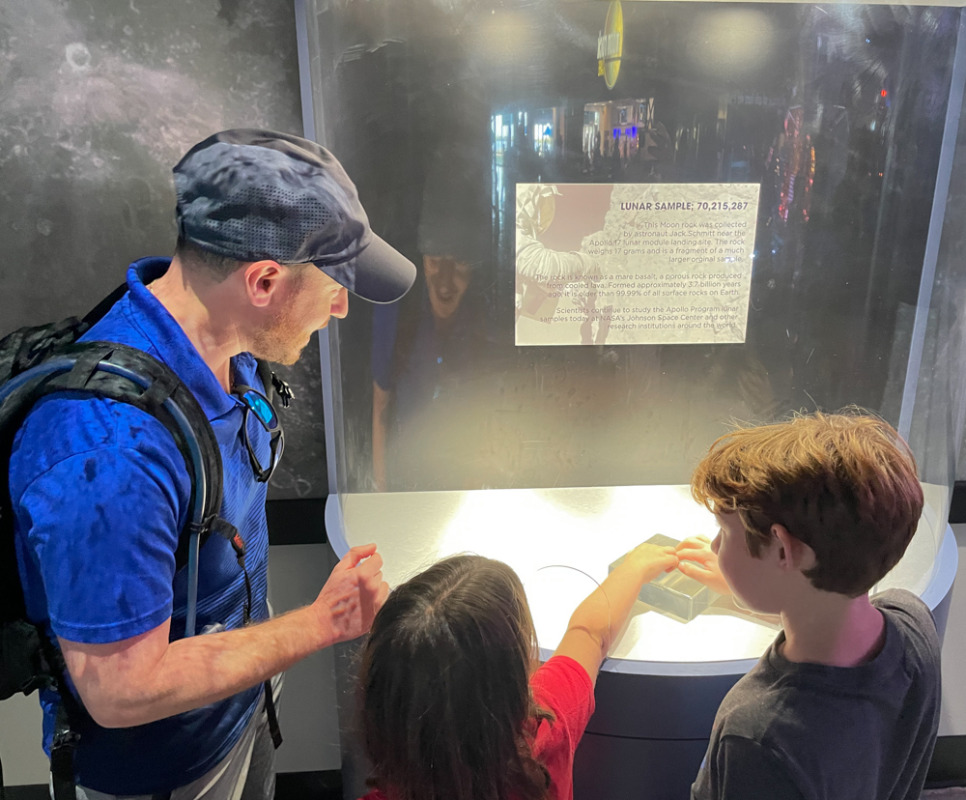
We spent about two hours at the Apollo/Saturn V Center before reboarding the bus. You can check out the launching pads outside before you go. If you’re hungry, stop into Moon Rock Cafe for a snack or lunch.
To get back to the boarding station, exit through the main gift shop. Don’t miss the Moon Tree Garden on your way out. You’ll see a statue there of the Apollo 11 astronauts in a lovely green space of trees that are direct descendants of seeds that were taken to the moon.
Read that last bit again to get blown away once more.
Space Shuttle Atlantis
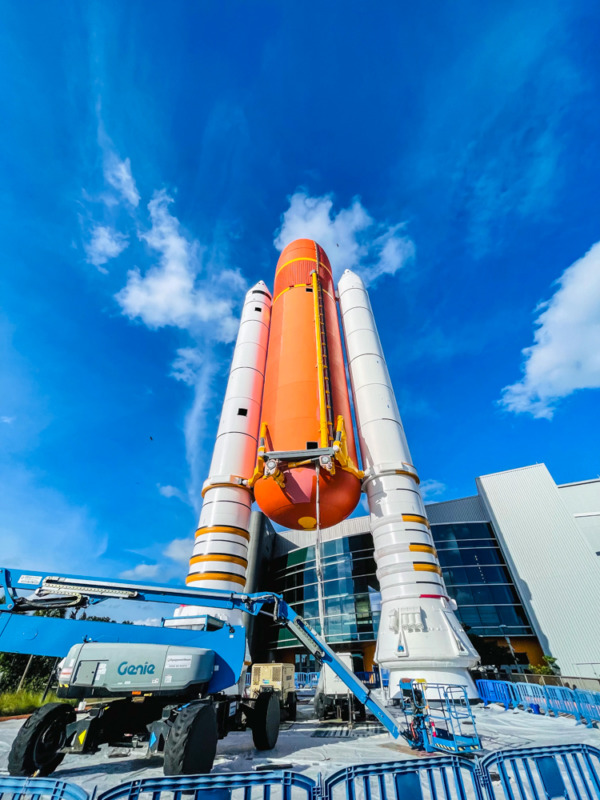
As you leave the bus back at the main visitor center complex, you’ll be close to the entrance of the exhibits dedicated to the Space Shuttle Atlantis. Your visit there will start with video clips about the Atlantis program.
You’ll likely need to wait for a few minutes for the first round of visuals, but we only stood in line for about 10 minutes.
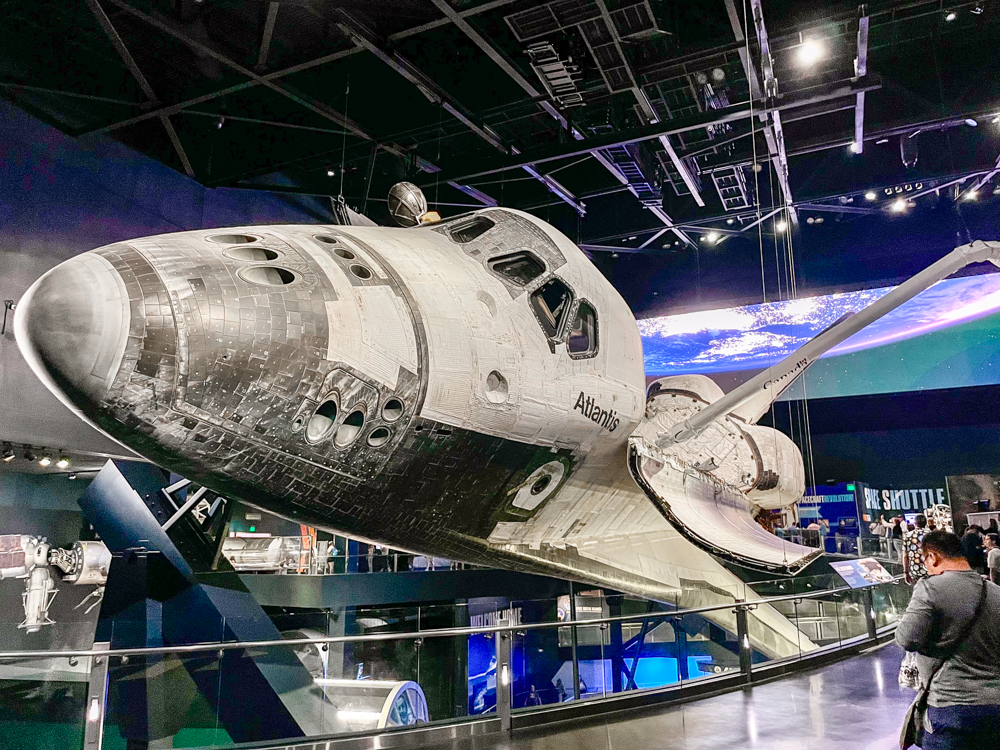
For a more in-depth education on the space shuttle once you’ve made it past the video clips, timed tours run by a center guide are included with your ticket.
One of the more sobering exhibits in the main exhibit space is Forever Remembered, a tribute to the crews of the Challenger and Columbia disasters. That exhibit includes personal items from the crew members and pieces from both shuttles.
The main exhibit space is where you’ll access the Shuttle Launch Experience, a simulation of the shuttle’s ascent into orbit. This is also included with your admission, but expect a wait to get inside. You can’t bring bags with you, but there are locked cubbies available for storage right next to the experience.
If you’re traveling with young children who don’t make the height requirement — you have to be 44” tall for the simulator — there are additional astronaut training simulators on the same level. It’s fun even watching kids try to achieve their mission objective on the simulators.
Journey to Mars: Explorers Wanted
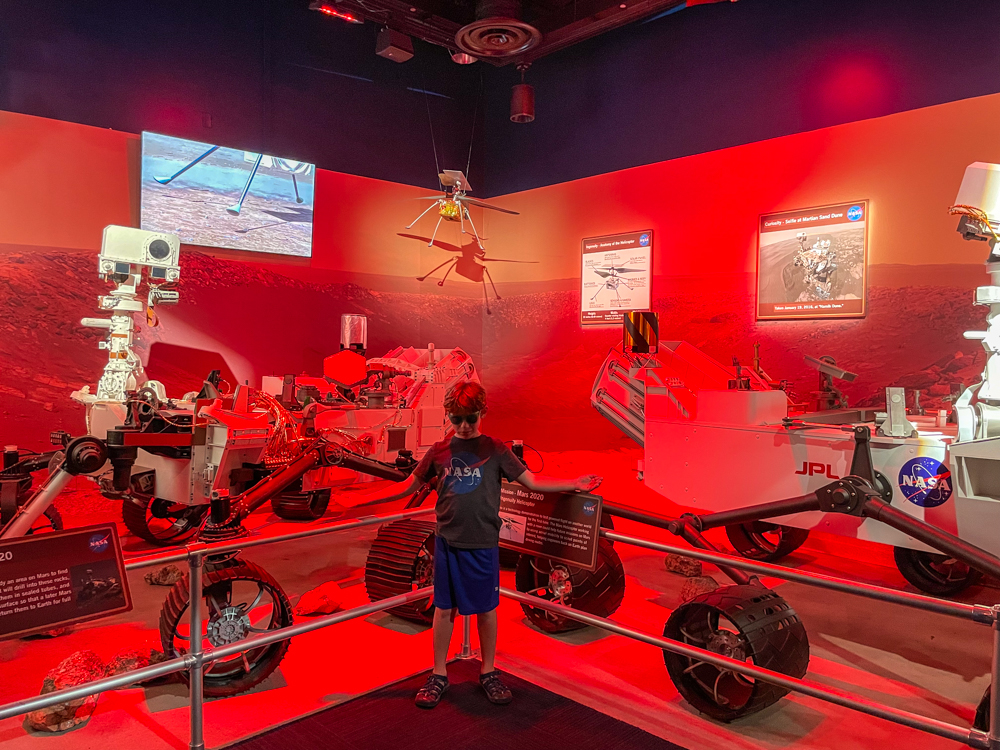
Explore attractions like NASA’s plans for Mars and how to get yourself into the next round of NASA hires in this building dedicated to deep space exploration.
Sit in on the “Explorers Wanted” talk led by a very enthusiastic staffer before checking out the different rovers in the exhibit space. High-five the spaceman walking around the building. Don’t miss the Mars Rover Vehicle Navigator outside the building.
Astronaut of the Day

Every day, veteran NASA astronauts make themselves available for autographs and question-and-answer sessions at the Kennedy Space Center.
We upgraded our ticket to include Chat With an Astronaut, and I highly recommend you do the same. It’s pricey at $50/person, but if you’re at all interested in a more personal experience at the Kennedy Space Center, this is a great way to do that.
Our Astronaut of the Day was Don Thomas. I got to ask him who his favorite astronaut was — it’s Neil Armstrong, by the way — over a selection of wine, cheese, and other snacks that blew the rest of the park’s food options out of the water.
Yes, you can drink at this event, but there are sodas and water available if you’re not indulging.
The Q&A is open to kids, too, and I must say that the kids at our session asked some very intelligent questions.
Seriously, it was a great time. You also take home a NASA patch and autographed photo to remember the day, on top of any to-go snacks you want for the rest of the afternoon.
Book this ticket enhancement ahead of your visit. There are two sessions per day at 10am and 2pm, but the 10am was sold out during our visit. There is limited seating for the chats. We probably only had around 20 participants during our booked time, which made for a very intimate experience.
Note: The daily astronaut guests also make themselves available for big presentations in the larger theater space.
Gateway: Deep Space Launch Complex
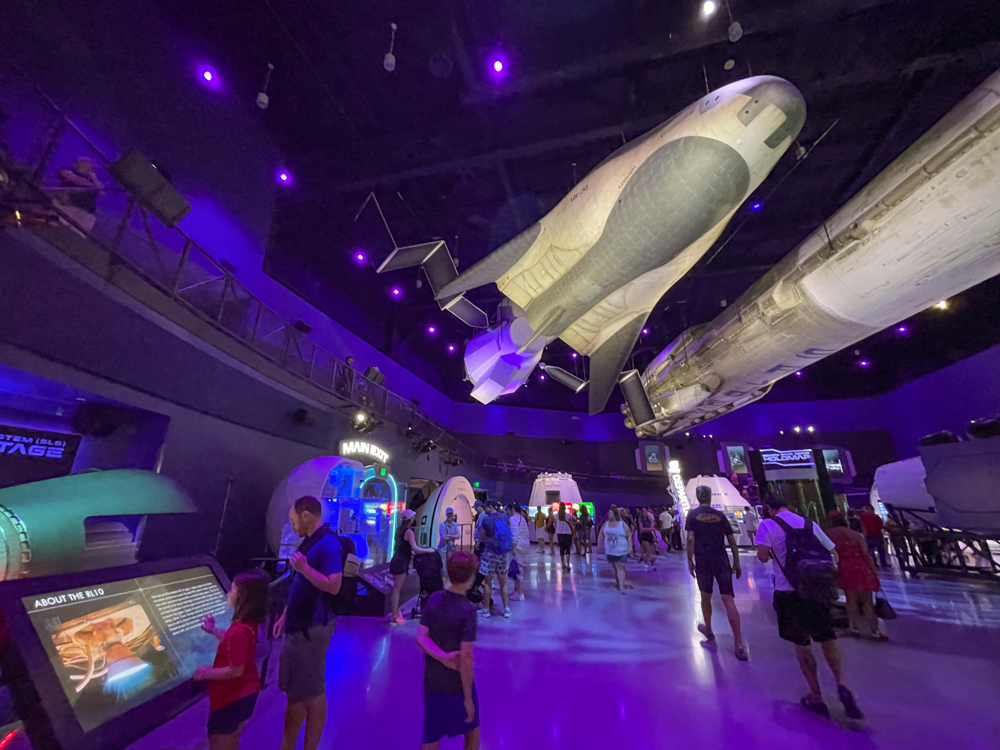
One of the newest exhibits at Kennedy Space Center is the huge Gateway: Deep Space Launch Complex. This area highlights (far) future innovations in space travel and exploration and includes recent commercial ventures. There are plenty of interactive stations downstairs and four simulator “rides” upstairs offering different journeys into deep space – the lines can be long for these since they’re really popular and keep in mind the 39″ minimum height.
Space Mirror Memorial
This memorial from the Astronauts Memorial Foundation is worth a quick visit to pay your respects to NASA’s fallen heroes. It’s beautifully done on polished black granite.
You can also see much of the park from here, including the tips of the rockets within the Rocket Garden, our next stop.
Rocket Garden
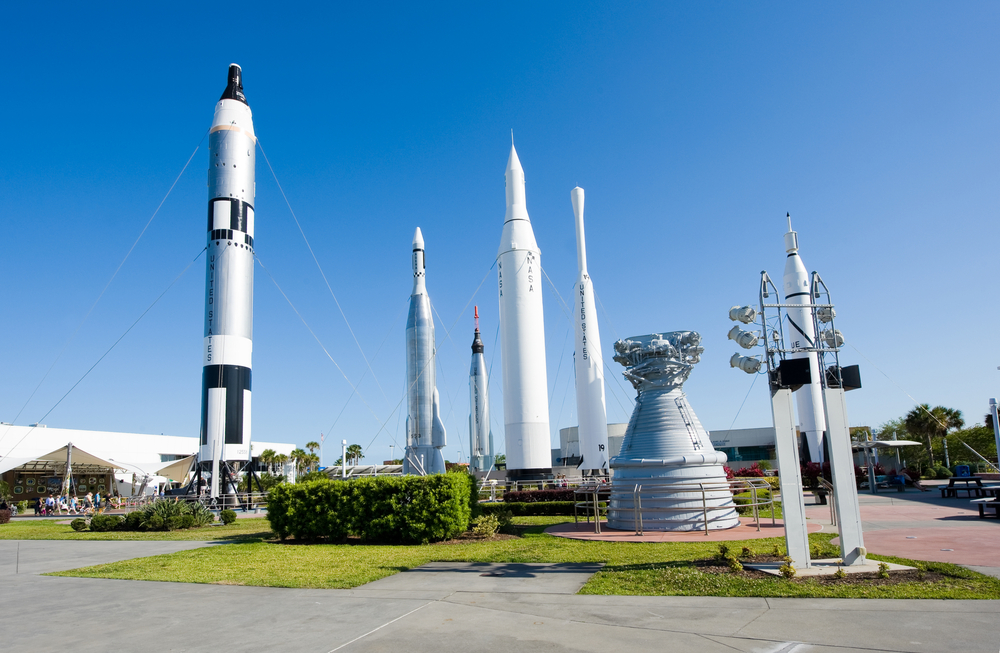
The Rocket Garden is an outdoor exhibit of, you guessed it, giant rockets. Tours are available throughout the day as part of your general admission, but you can also just read the signage available if you haven’t timed things right.
The Delta II is my personal favorite because of those shark teeth.
This is likely the most photographed section of the park, so I hope you get a sunny day to capture all of the rocket magic.
Heroes & Legends
The Heroes & Legends is dedicated to big names in space travel and what it takes to make a hero. Your entrance is timed to this one, but it’s all included in your general admission.
You’ll watch two short videos once you’re inside. One was a little disorienting, as it was one of those that include lots of moving visuals happening all around you.
You’ll then be dropped into the main exhibit space that details the heroic qualities required of astronauts and more clips from former astronauts on their personal NASA experiences. The last exhibit is the U.S. Astronaut Hall of Fame.
Additional Activities at the Kennedy Space Center
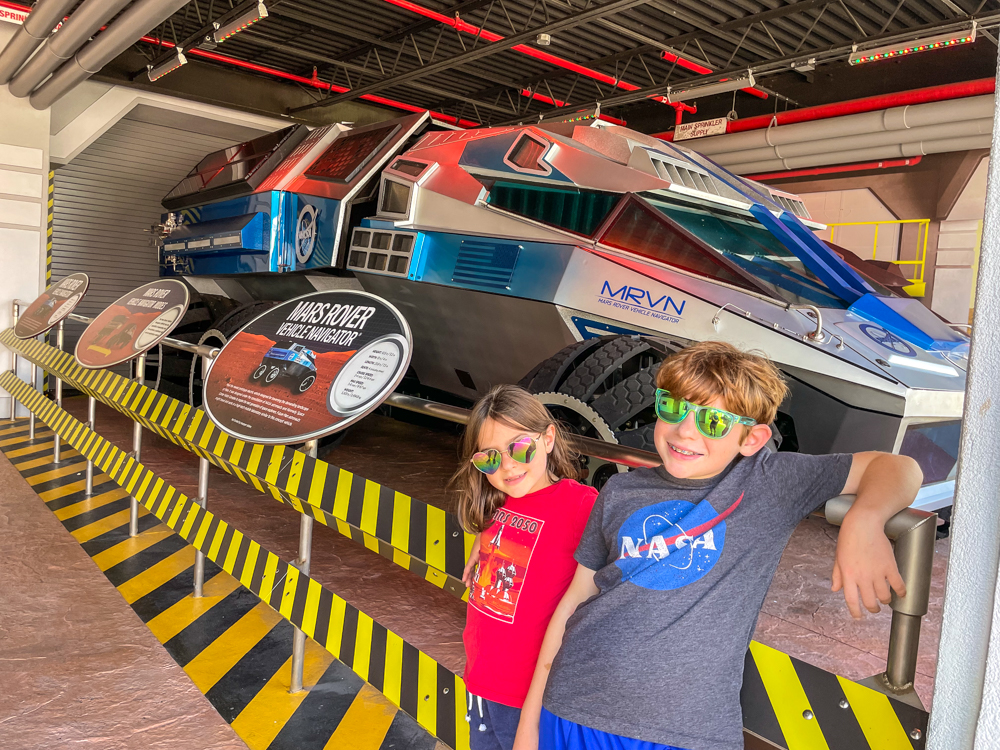
If you only have one day at Kennedy Space Center, the highlights above with the optional enhancement of an astronaut chat will make for an excellent day. With more time, you can add more enhancements to your ticket or explore more attractions at the Kennedy Space Center.
Families with kids can easily fill up full two days here if they truly take their time. Here are a few additional ideas for making that happen.
IMAX Building Space Movies
IMAX movies at the Kennedy Space Center are included with your regular admission. You’ll need to pay extra for the obligatory snacks and drinks before you have yourself a seat.
Films run about 40 minutes and are typically narrated by some cool cats, like Sir Patrick Stewart’s Journey to Space .
Planet Play
Planet Play is a kiddie playground with space-themed educational opportunities for the little ones. Kids can climb a wormhole and slide through an asteroid field…under the supervision of parents, of course.
Astronaut Training Experience (ATX)
Treat the space lover in your life to this immersive experience where they’ll learn more about what it takes to live and work on Mars. The full program takes up to five hours to complete, so this is truly for someone with several days dedicated to the Kennedy Space Center.
If you just want a taste of the simulations involved, you can also book ATX Training Stages, a piecemeal approach. None of these were available during our visit, but we were eyeing the Microgravity Simulator.
Mars Base 1
Mars Base 1 is another immersive NASA experience that will set you up for success if you ever find yourself on the Red Planet. This one requires even more time. Expect to spend up to seven hours managing the Base Operations Center on Mars with other rookie astronauts.
Where to Stay Near Kennedy Space Center
There are a few area hotels in Titusville and Merritt Island, the closest towns to the Kennedy Space Center. Hotels on Cape Canaveral are another option – it’ll take you about 20 minutes to drive around the cape to the visitor’s center. Be mindful not to book a hotel too close to Port Canaveral on the day of a major cruise ship departure, as morning traffic can be intense in that area.
Cocoa Beach is about half an hour away, and driving from Orlando will take about an hour. If you’re planning to visit theme parks and spend only one day at Kennedy Space Center, you may as well just base yourself in Orlando the entire time – be sure to check out the Hyatt Regency Grand Cypress review .
Need specific recommendations? Here are a few hotels with easy access to the Kennedy Space Center:
- Hyatt Place Titusville/ Kennedy Space Center ~10 minutes from KSC *This top-rated Kennedy Space Center hotel starts at just 6500 points per night when you transfer from a Chase Sapphire credit card
- Cape Crossing Resort & Marina ~15 minutes to KSC, located on Merritt Island
- Hampton Inn Titusville/I-95 Kennedy Space Center ~20 minute drive to KSC
- Hampton Inn Cocoa Beach/Cape Canaveral ~30 minutes to KSC but walking distance to the beach
Is the Kennedy Space Center worth going to?
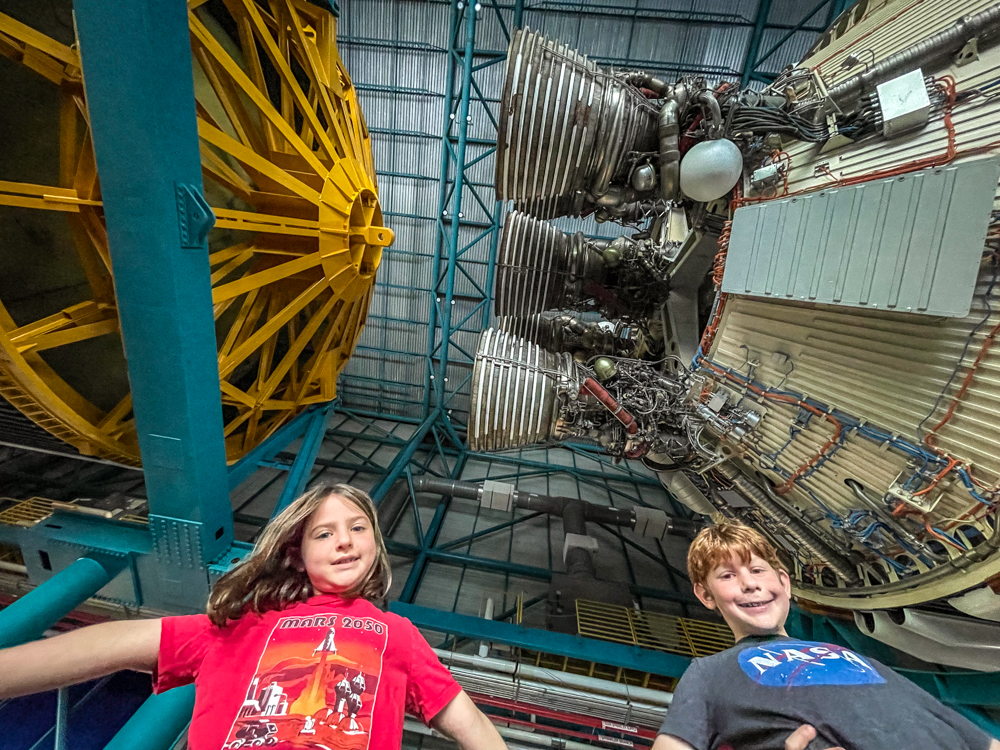
The Kennedy Space Center is worth going to for a primer on space exploration history and its many interactive experiences. If you time things right, you even have an opportunity to meet real astronauts.
I was certainly impressed and wouldn’t mind a return to check out The Deep Space Launch Complex is, a new planned exhibit there. I’d even plan a visit around a space launch, especially if it was run by NASA’s Artemis program.
This one is a must for even casual fans of all things outer space.
Check these reputable sources for discounted tickets:
Planning your trip to Florida
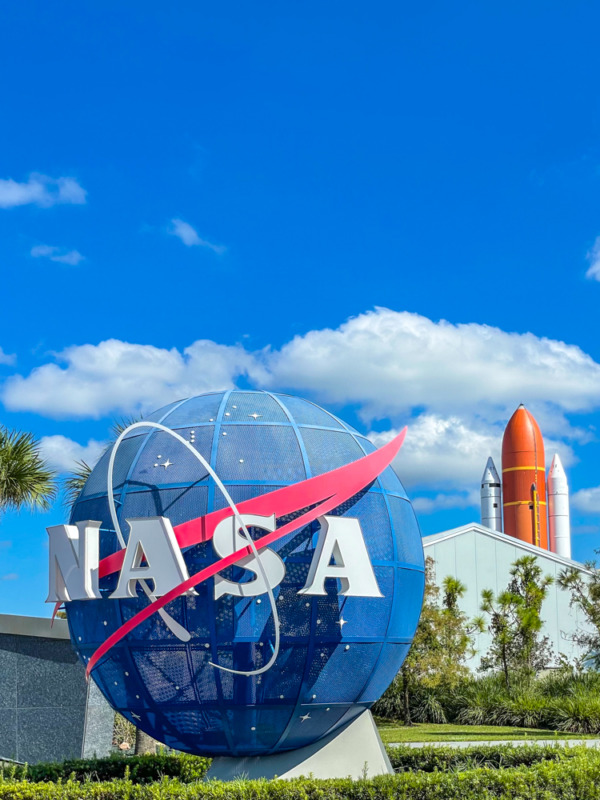
Check out more awesome places to explore on your trip to Florida:
- Transportation From MCO to Port Canaveral
- Fantastic Things to do in Orlando With Tweens
- Disney All-Star Music Resort Reviews: A Repeat Visitor’s Inside Scoop
- Hyatt Regency Grand Cypress Review: Is It As Good As You’ve Heard?
- 25 Essential Tips for Universal Studios Orlando
- 25 Tips for Disney World That Won’t Make You Crazy
- Hyatt Regency Sarasota Review: Family-Friendly Fun
- Fun Things to do in Sarasota with Kids: A Delightful Weekend Getaway
- 15 Wonderful Things to do in Clearwater with Kids (and Their Parents!)
- Attainable Bucket List Item: Swim With Manatees in Crystal River, Florida
- Hyatt Regency Coconut Point Review: A Weekend Getaway Wrapped in a Bow
- Things To Do In Miami With Kids
What to read next
Leave a comment cancel reply.
Save my name, email, and website in this browser for the next time I comment.
This site uses Akismet to reduce spam. Learn how your comment data is processed .

Polaris Dawn | Falcon 9
- Prelaunch Preview
Maiden Flight | Ariane 6
- Arianespace
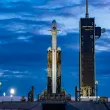
GOES-U | Falcon Heavy

Starship/Super Heavy | Flight #4
- Zhuque-2 | Maiden Flight
- Zhuque-2 | Flight 3
- Zhuque-2 | Flight 2
- Zhongke-1A | Maiden Flight
- Yaogan-30-08
- Why don't they just?
- Where to watch rocket launches in Florida
- Vulcan VC2S | Peregrine lunar lander (Maiden flight)
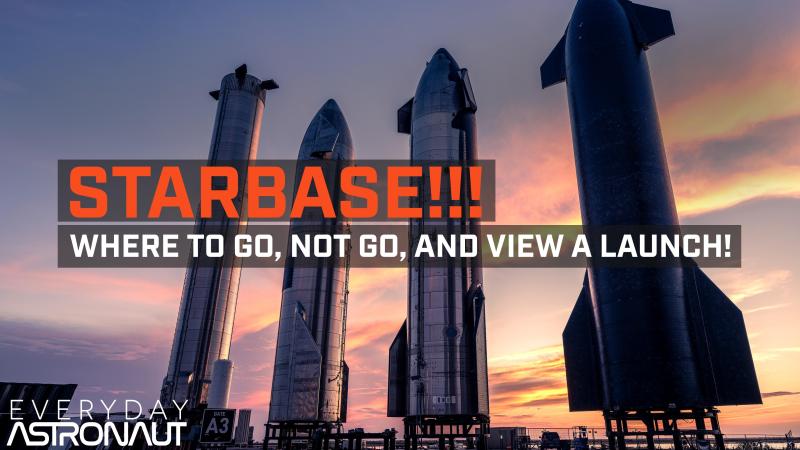
How To Visit Starbase
Perhaps the most watched place in the space industry, Starbase, is the home of SpaceX’s Starship development and testing. Ten of thousands have made the trek to the southern tip of Texas with one goal: seeing SpaceX’s massive Starship rocket in person from just a few feet away. However, even more have spent hours and days watching live-streams and looking at photos of Starbase dreaming of what it may be like there.
The purpose of this article, in companion to Everyday Astronaut’s video on YouTube, is to provide the most comprehensive rundown of Starbase; the “dos and don’ts”, the things that must be done, and tips and tricks on how to navigate Starbase safely and effectively. Here you will find all the information, but for those who prefer to read. It can also act as a quick reference when you arrive at Starbase one day.
Where And What Is Starbase?
Starbase, located very near to Boca Chica, can be found in the southern most part of the state of Texas, United States. Texas, which borders Mexico, is also home to NASA’s Johnson Space Center in Houston, but that is much further north.
Starbase is where SpaceX has done the development, testing, tweaking, and blowing up of their next rocket, Starship, the worlds largest and most powerful rocket. The town where Starbase is located was originally called Kennedy Shores. After a hurricane it was renamed Kopernik Shores, and most recently known as Boca Chica. Brownsville is the nearest city to Starbase at about 32 km (20 miles). Compared to the 187,000 people in Brownsville, only a few homes remain in Boca Chica on the barren wildlife refuge.
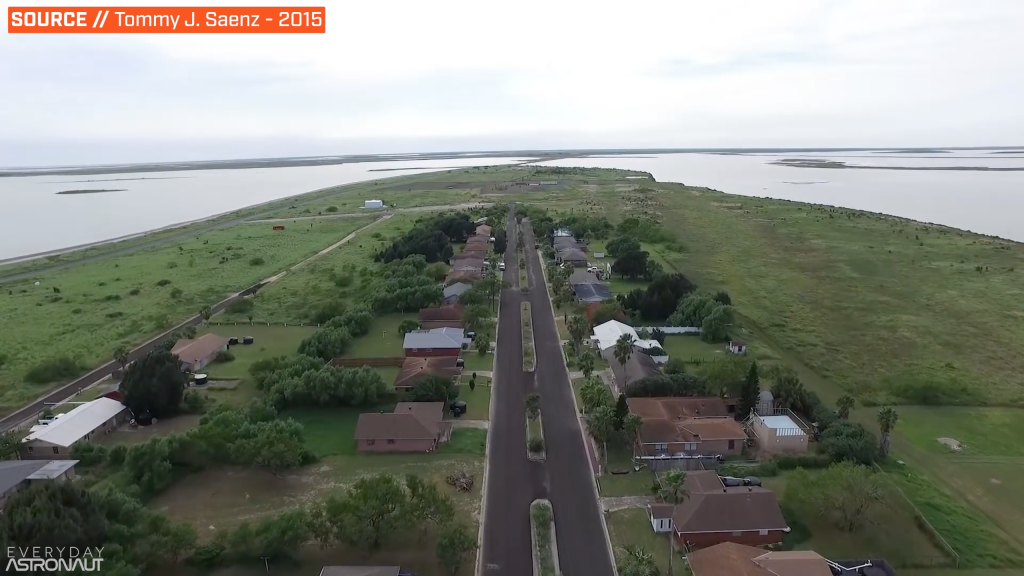
South Padre Island and Port Isabel are the closest inhabitable areas, but it would take nearly twice as long to get there than to Brownsville. This is because they are on barrier islands with limited access.
In 2014, SpaceX began purchasing land in the area for what was originally Falcon 9 and Falcon Heavy testing. Despite some ground work, the next four years remained fairly uneventful. In 2018, a stainless steel water tower, or so people thought, emerged on the flat landscape. This water tower came to be Starhopper, a Raptor engine testing vehicle.
Since the first high altitude flights in late-2020 to mid-2021 which began with SN8, SpaceX has put an increased focus on booster and orbital ship development. Because of the increased cadence, more infrastructure such as bays and tents have seen the site grow exponentially.
The location and ease of access to the Starbase surrounding area has enabled close watch of nearly every move SpaceX makes as they develop Starship. While SpaceX does not want to block access to Boca Chica Beach, there’s no guarantee how long the largely open and public access will last in light of safety concerns related to launches and landings. It’s safe to say that waiting might not be the best option.
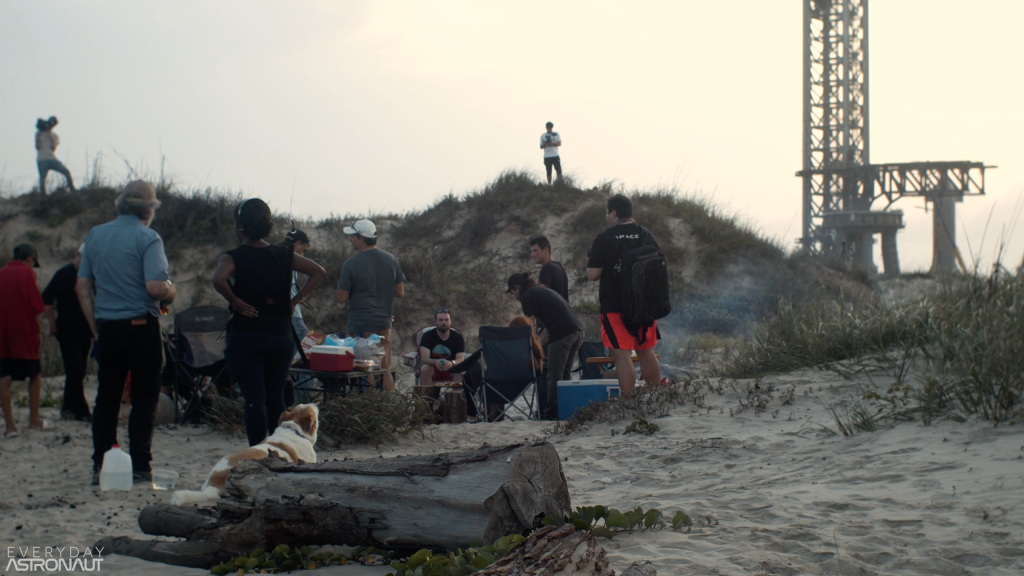
Tour Of Starbase
There are three main locations around Starbase where the activity happens; the production site, the launch site, and the structural test site (formerly Massey’s Gun Range). The production site is where both the ship and booster are manufactured and produced. The launch site, as the name implies, is where rockets are launched in addition to where engine tests and some other tests are performed. The structural test site is where other testing occurs, however there is not much to see at the structural test site from the available viewing areas.
Production Site
As of publication, the production site has three distinguishable buildings that rise high above the rest. The Midbay, High Bay, and Mega Bay (Wide Bay), act as rocket houses. The High and Mega Bays both have cranes on the top that allow large pieces of the rockets to be lifted into place and stacked on top of one another. A new building is currently being built called “Starfactory”, which will replace the three temporary production tents.
Near to the Mega Bay is a group of rockets, either used and retired, or never flown. This area is commonly referred to as the “Rocket Garden”. The vehicles in the Rocket Garden change very frequently as they are retired, scrapped, or held until testing.
Also located in that area is an Air Separator Unit (ASU) that can generate oxygen, nitrogen, and argon. This is also where some large shipments are received and where some heavy lifting equipment lies. In front of all of this is the gigantic and iconic “S T A R B A S E” sign.
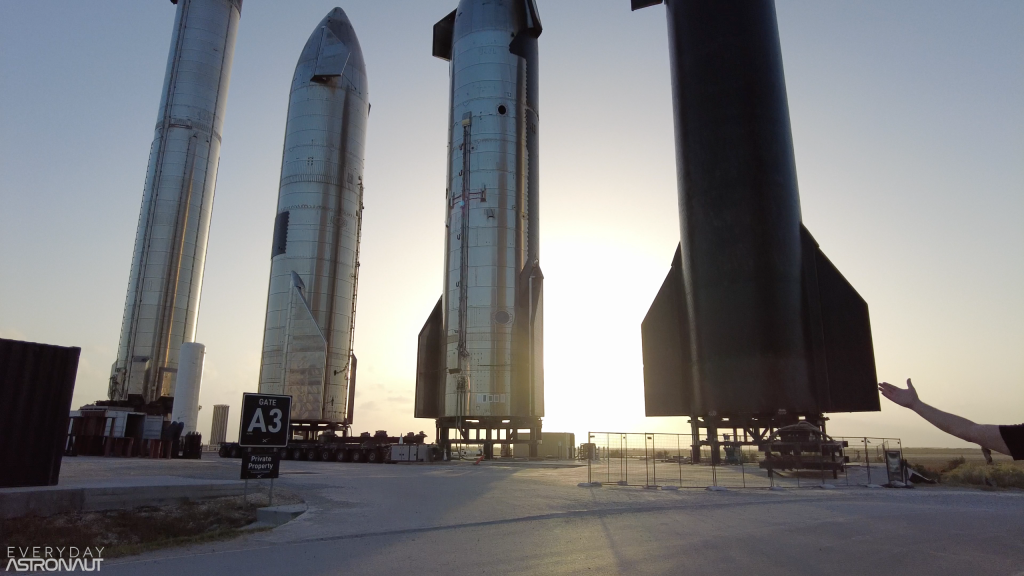
These approximately 2.5 m (8 ft) tall illuminated letters are the first thing visible from the side of the road. It is a very popular space to stop and take photos, especially at night when the sign is illuminated. You can easily park on the rocks in front of the sign to hop out and take a photo.
In addition to these are the buildings that have been there since the beginning. Originally built by the University of Texas Rio Grande Valley, Stargate, is now owned by SpaceX and acts as their launch control. The building is an office building with space for desks and computers, meeting rooms, and other spaces where an old Merlin and Raptor engine can be found.
Further down the road toward the ocean is the solar farm. Next to the solar farm are two tracking dishes that were purchased from NASA. Behind that is Boca Chica Village, which mostly includes houses owned by SpaceX to house employees.
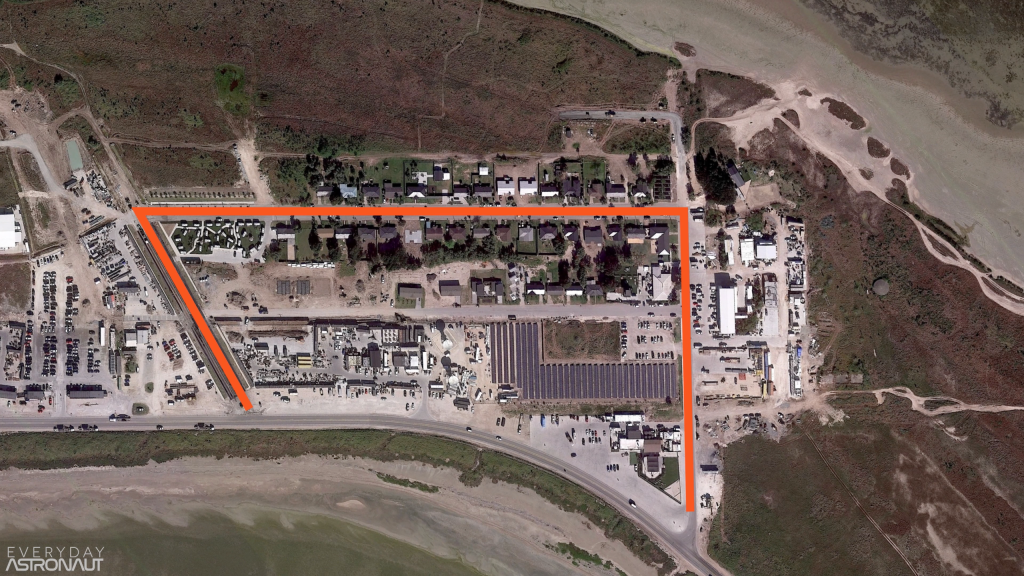
On the corner, before the long road to the launch pad, is a private restaurant. The outside seating area is covered in flaps from the Mk 1 Starship prototype. Only employees are able to eat here and at the adjacent food trucks. Across the street is a large building known as the payload processing facility, which is currently used for Starlink, but could be used for other payloads in the future.
Launch Site
After traveling down the nearly three kilometer (two miles) barren stretch of road, the launch site quickly fills the landscape. The launch site consists of three launch pads, two suborbital pads and one orbital pad.
Before arriving at the launch site, pulling off the road before it curves gives the unique view of Suborbital Pad A, on the right, and Suborbital Pad B, on the left. The black and white tanks are the Suborbital Tank Farm and house the propellants for both pads.
Traveling further down the road leads to an up close view of Starhopper, the first vehicle to take flight in south Texas. It has now been repurposed to host radar equipment, cameras, and speakers to provide announcements at the pad. The main gate is shortly after that and provides a sometimes unobstructed view of the Orbital Launch Table. This is where nearly everything goes in and out of the launch site.
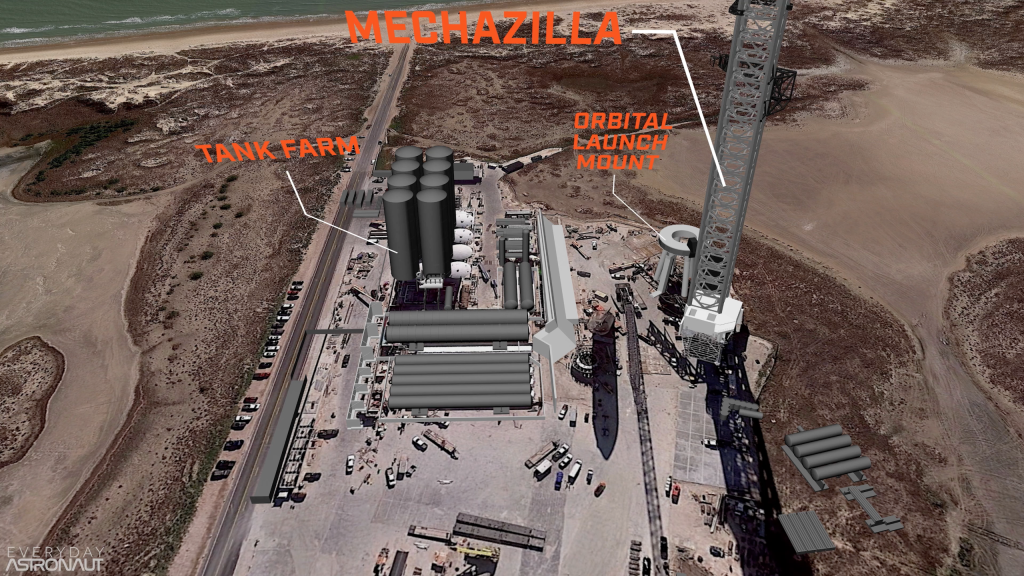
The Orbital Launch Pad is the table and the very large 120 m (400 ft) tall tower with chopstick arms on it. This is where fully assembled and stacked Starship/SuperHeavy rockets will launch from. Next to the Orbital Launch Pad are eight cylinders which together make the Orbital Tank Farm. Some of these house water, while others house the propellants, oxygen and methane.
Where And Where NOT To Go At Starbase
The number one rule comes as an obvious one: wherever there is a sign indicating SpaceX property, don’t go past it. Roads are public and the land just off the road is generally public too. SpaceX property is almost always clearly indicated.
To play it safe, anytime you’re stopping to look, always park on the opposite side of the road from SpaceX property. For example, at the production site, park on the south side of the road and do not cross the road by foot. It’s important to remember that Highway 4 is a highway and has fast moving cars, so be careful pulling off, merging, and navigating the side of the roadway.
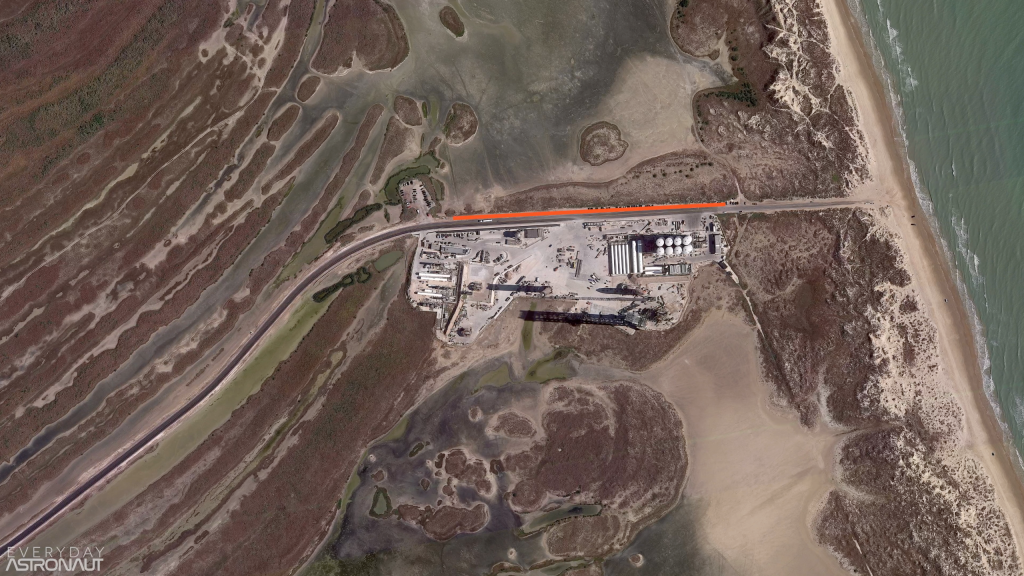
Remedios Ave gives the closest access to any rockets. By parking on Highway 4 and walking down to the Rocket Garden, you can get very close to whatever rockets may be there. As of publication, Remedios is still a public road. However, this may not last long, so be sure to check any signs before proceeding.
Any parking on SpaceX property and around the restaurant are not for public parking and reserved for employees. At the launch site, there is also a parking lot, but again for employees only. Pulling off on the side of the road opposite SpaceX property (the north side) is allowed.
However, areas near the beach can become hazardous very quickly. The sand level and depth can change daily leaving dozens of cars stuck. Only drive down the beach if your vehicle has all-wheel drive and tires that can handle deep sand. Another option is to park on the side of the road before the beach and walk up and down the beach to get new angles of the launch site.
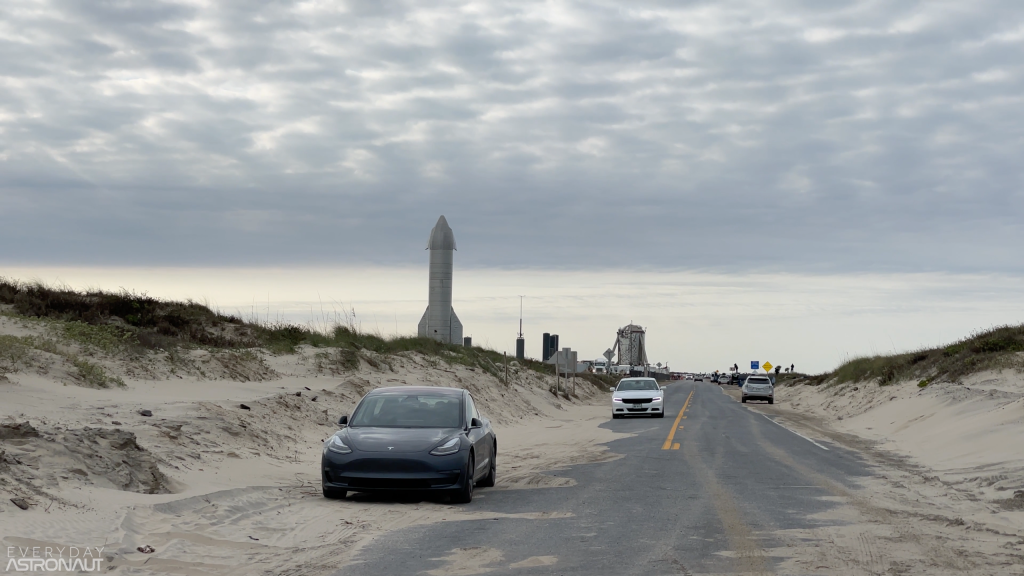
On launch day, there is a large area around the entirety of Boca Chica Beach, Starbase, and Highway 4 called the exclusion zone or “keep out zone”. Nobody from the general public is allowed in this area during alunch preparations and activities. There are also designated spots on the water in the channel for mariners to watch the launch from.
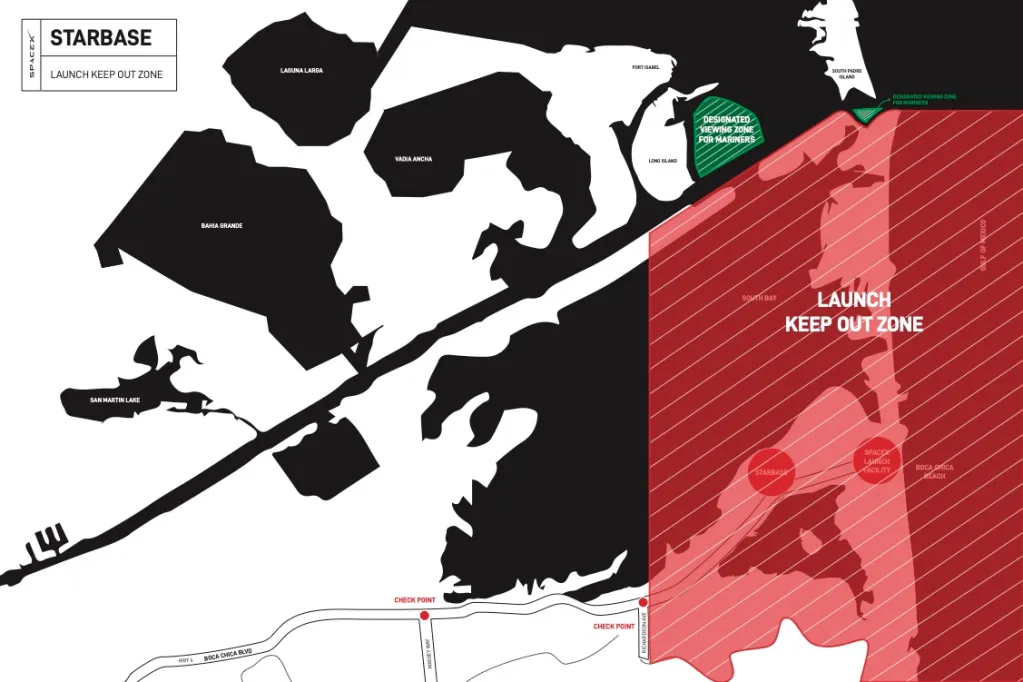
Rules, Tips, And What To Bring
In this case, it could be helpful to think of Starbase as a desert with very little to no amenities around. There are no public restrooms or gas stations to fill up on snacks and water. Before leaving for Starbase, take the time to stop at a gas station and get everything listed below.
- Lots of water and food
- Hat, Sunglasses
Hydration is key, but that does not mean just drinking water while at Starbase. Before heading out the day before, ensure you drink plenty of water to maintain hydration.
General Rules
While some rules may sound like common sense, others may come as a surprise. It’s important to follow these rules closely to stay out of trouble and make it so others can get this close to the worlds biggest and most powerful rocket too.
- Don’t litter
- No crossing the river into Mexico. Matamoros is dangerous.
Overall a simple list to follow, but serious consequences can result otherwise. Starbase can be a fun place when safety and health are put first. The rockets do not need sunscreen.
Watching A Launch
Unlike Kennedy Space Center and Cape Canaveral Space Force Station, Starbase has only been around in recent history and has never seen an orbital launch. This means that the infrastructure for the public to watch launches from Starbase is largely non-existent. An important note is that Highway 4 is completely closed on the day of a launch, so no members of the public will be able to travel down on launch day.
The only exception to this is Rocket Ranch . Rocket Ranch has a ranch where guests can stay in little Airstreams or their own RVs. They have an outpost further down Highway 4 that provides the closest viewing possible, however they are currently sold out of these tickets for the first Orbital Flight Test.

The next closest place is Isla Blanca Park on the southern tip of South Padre Island. To enter, they charge $12 cash, exact change not necessary. This can and will get very crowded on launch day, so it’s best to arrive a little early. Only a certain number of cars are allowed per day, but there is public parking at the Visitors Center and other spots further north.
Port Isabel is another spot to watch from. It is located before crossing the bridge on South Padre Island. The bridge itself is NOT a viewing location. There are very few direct views of the pad from Port Isabel due to the private residences in gated communities.
However, on Highway 48, which is the road to Port Isabel/South Padre Island, there are a few pull off spots like the Jamie J Zapata boat ramp. A reminder, Mexico is not an option due to the dangerous nature of Matamoros.
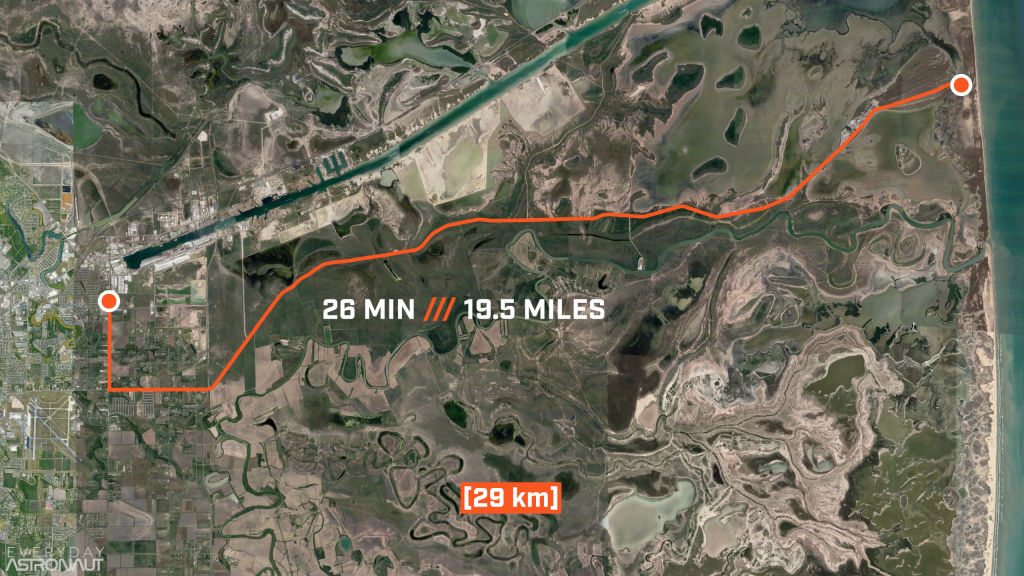
What To Bring
In general, it’s smart to envision any of these viewing locations just like Starbase. It will be just as hot and humid and the same precautions still exist. Sunscreen is a must and an umbrella may be beneficial to provide shade will be beneficial. Bathrooms will generally be closer, but due to the number of people trying to see a launch, the lines can be long and you may be at risk of losing your viewing spot.
A camera with a telephoto lens or binoculars are also good items to help with viewing. Starship/SuperHeavy will not leave a contrail, so it will mainly be visible as a large silver tube flying through the sky. While binoculars are not necessary, they could help enhance your viewing experiance.
How To Get To Starbase
This section will discuss how to get to Starbase by ground. Flying is covered in the next section and can be more complicated than driving. The best, and nearly only, way to get to Starbase is in a personal vehicle, either a rental car or your own car. Utilization of a GPS would be helpful here; just typing in “Starbase”, “Boca Chica Beach”, or “Boca Chica” should result in the same path as there is only one way to get there.
A specific address would be 1 LBJ Blvd, Brownsville, TX 78521, which is the restaurant. Although it’s not open to the public, it is an address to navigate to. It is possible to use a rideshare option like Uber or Lyft, but drivers are scarce and, once out there, getting between the launch site and production site is difficult. Additionally, the cost of the long drive might end up costing more than renting a car.
Border Checkpoint
While trekking out to Starbase, shortly after leaving Brownsville city limits, is a border check point. Although there is no border crossing at the checkpoint, due to the proximity to the border and the shallow depth of the Rio Grande near the beach, the United States Border Patrol keeps a station there.
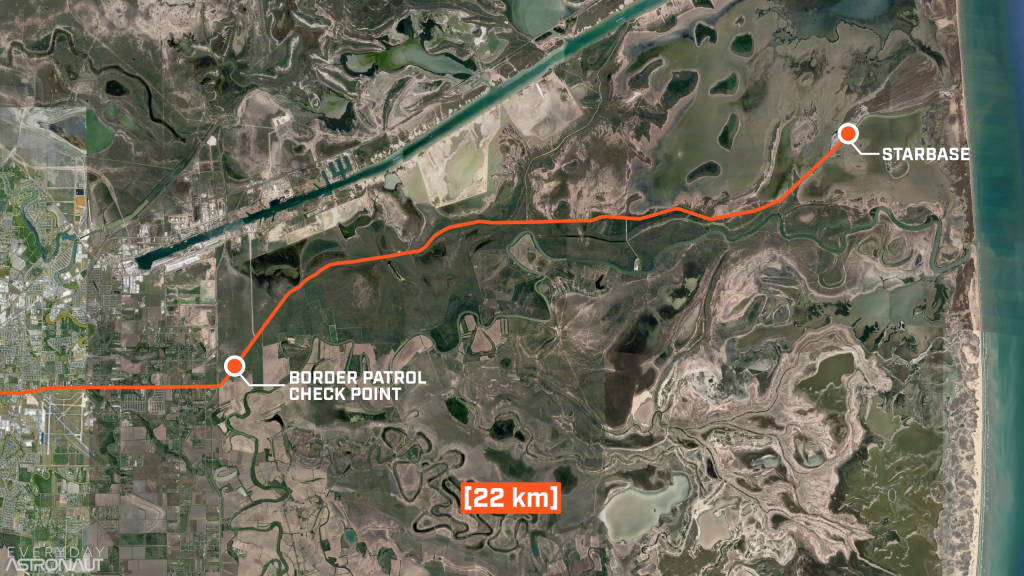
Going out to Starbase, a stop will not be necessary. However, when returning to Brownsville from Starbase every vehicle will be stopped and questioned. The questions are generally very simple, “Are you a U.S. citizen?” and “Is there anyone else in the vehicle?” Answer these honestly and you will be sent on your way without problem. If there is a shift change at Starbase, the line will get very backed up. So in the morning and afternoon, keep this in mind.
For U.S. citizens, a drivers license will act as a form of ID. International travelers should have travel documents and their passport. The border patrol officers do not always ask for documentation, but will on occasion.
Flying To Starbase
There are three main airports that all provide good options for flying into south Texas and then driving to Brownsville. Some are easier and cheaper to get to than others, but may be further away.
BRO, or Brownsville, is the closest option and is relatively near to Starbase given it’s location on the outskirts of Brownsville. As of publication, you must either first fly to Dallas or Houston and get a connecting flight to Brownsville. In May of 2023, Avelo Airlines will offer direct flights to Brownsville from Orlando and Los Angeles.
HRL, or Valley International Airport in Harlingen, Texas, is also a good option, but requires a bit more of a drive, about an hour to Starbase. Depending on demand, HRL can be cheaper and have more rental car options.
MFE, or McAllen International Airport in McAllen, Texas, is about to an hour and a half from Starbase. Generally, MFE shares similar options and availability to HRL, but it’s an option nonetheless.
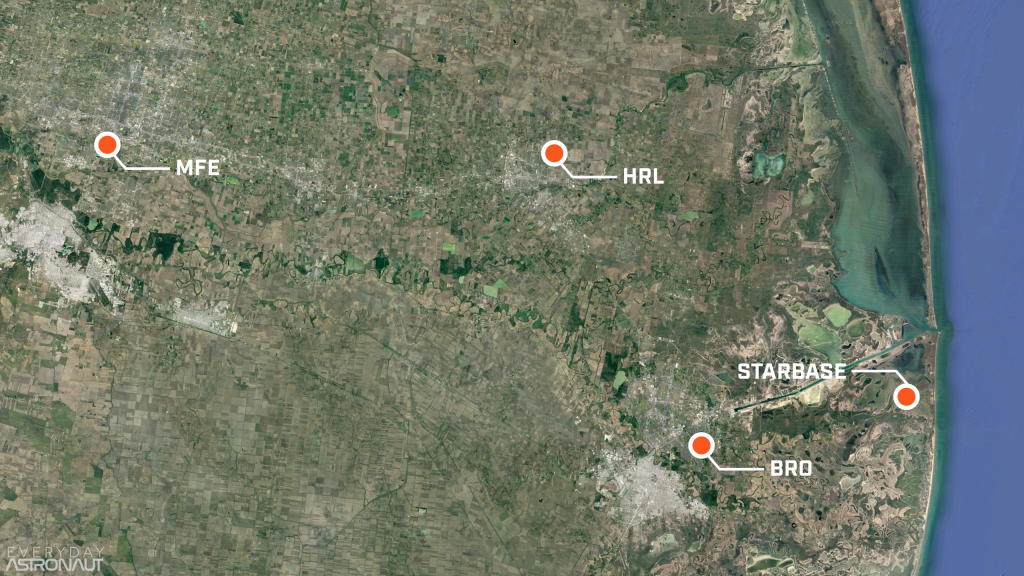
Flying from oversees might mean spending more time in Texas. In this case, it may be possible to save money and drive from a city like Austin, San Antonio, or Houston. Houston, of course, is where Johnson Space Center is located. Visitors can spend a day at Space Center Houston, which has interactive activities and a great museum.
Do not rely on rental cars being available at Brownsville or some of the airports in the Rio Grande Valley, so check carefully, especially around times of peak travel.
Where To Stay
There are numerous options for places to stay depending on the type of traveler you are. Some types include campers, luxury, adventure seekers, budget, and families. During times of peak travel and lots of activity, some options may be more available than others.
South Padre Island/Port Isabel
South Padre Island, or SPI, has a host of good options for those who want to see rockets, but also make a vacation in south Texas. SPI is host to a variety of restaurants, hotel options, and adventure experiences like dolphin tours. The dolphin tours are a good way to see the launch site from a unique perspective.
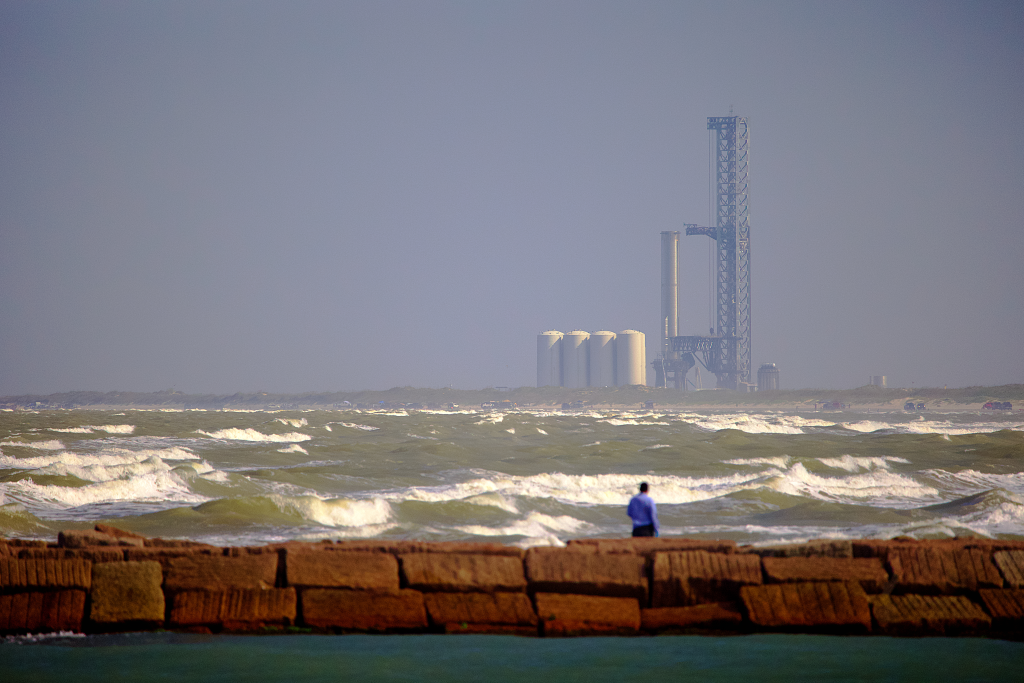
Margaritaville, formerly known as “The Pearl”, is a good option to have a pool, beach access, and a potential view of the rocket. The rooms are spacious and can accommodate a family easily. In order to have a good view of launch, getting a room on the south side about five floors up or higher is best. This is where Tim Dodd, the Everyday Astronaut, livestreamed SN8 and SN9 from!
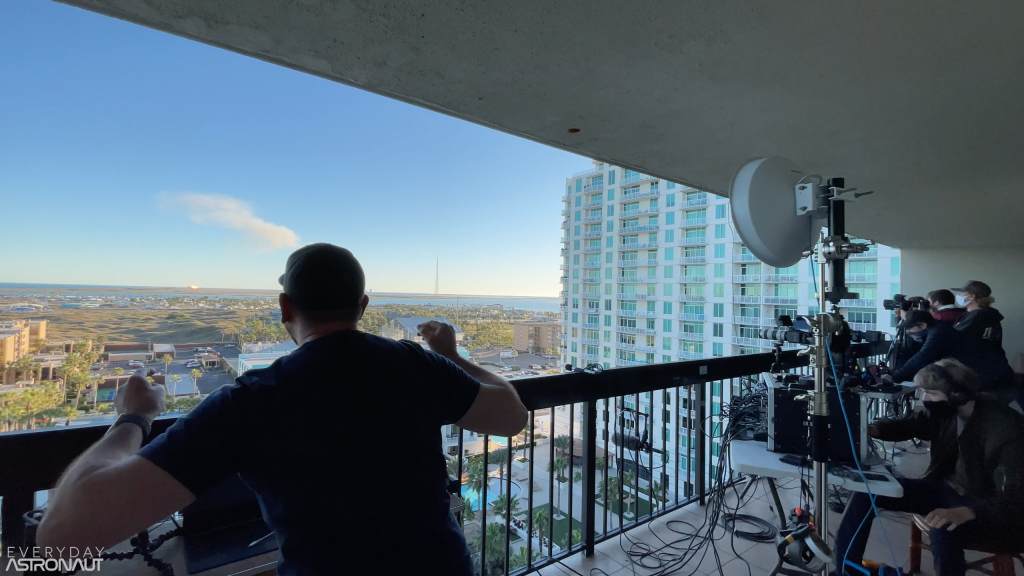
Holiday Inn is a similar option to Margaritaville in terms of rooms and amenities, but does not offer balconies to view the pad from. Its proximity to the bridge enables easy access to the mainland and avoids a lot of the northern island congestion.
Hilton Garden Inn is located much further up north on the island and also does not have a good view of the launch pad. However, it offers great amenities and was recently renovated.
Lighthouse Cafe and Hotel in downtown Port Isabel is also a good option. It avoids the bridge, which means less traffic. The hotel also offers gelato and snacks and is within good walking distance from local and chain restaurants.
Casa Rosa Inn is another option in the Port Isabel area. Alternatives to this are AirBnBs and other spots for rent, so keep looking if these hotel options don’t suit you perfectly.
Those who enjoy camping can try and secure a spot at Isla Blanca Park on the southern tip of SPI.
Brownsville
Brownsville is home to most major hotel brands, but a lot of them are located on the highway and too far to walk to restaurants. They are, however, closer to Starbase by about 20 to 30 minutes. Generally, these hotels are cheaper than what can be found on SPI.
Rocket Ranch
Rocket Ranch is about as close as possible for anyone from the public to stay. There are small campers for individuals and they also offer spots for people with RVs to park and stay. Above all, the community at Rocket Ranch is full of more rocket loving people and will be a great welcome to south Texas. So far, they have hosted thousands of people and even more have booked stays.
In addition to a place to stay, they also offer bus tours to Starbase. These tours have been operating for a while, and will provide rich knowledge and history of Starbase.
When To Book Your Trip
Timing is everything and timing with a rocket test program is nearly impossible. Even SpaceX sometimes does not know when they will launch until just a week before. Generally, trying to book as close to a launch as possible is best.
Sometimes, booking less than five days in advance will yield the best results, but sometimes that is not possible. Oftentimes these launches will see many delays before actually flying, so it might be best to book for a week and be prepared to stay longer if that’s possible.
There is no exact answer for when to book, but it’s best to wait until as late as possible and be prepared to change dates. Read hotel and flight cancellation policies closely before booking.
Indicators of a launch could be FAA and FCC Licensing, road closures, beach closures, Temporary Flight Restrictions (TFRs), maritime notices, and of course, an official statement from SpaceX. All of the latest can be found in Everyday Astronaut’s live updates article .
Where To Eat
South Padre Island and Port Isable have a variety of eating options from fresh sea food, to vegetarian, to acai, and even Starbase themed resturants. Each recommendation below is linked to their site which has more information.
- Ceviche Ceviche
- Russo’s Pizza
- Berry Divine on SPI and Beach Bowls on Port Isabel
- Hopper Haus
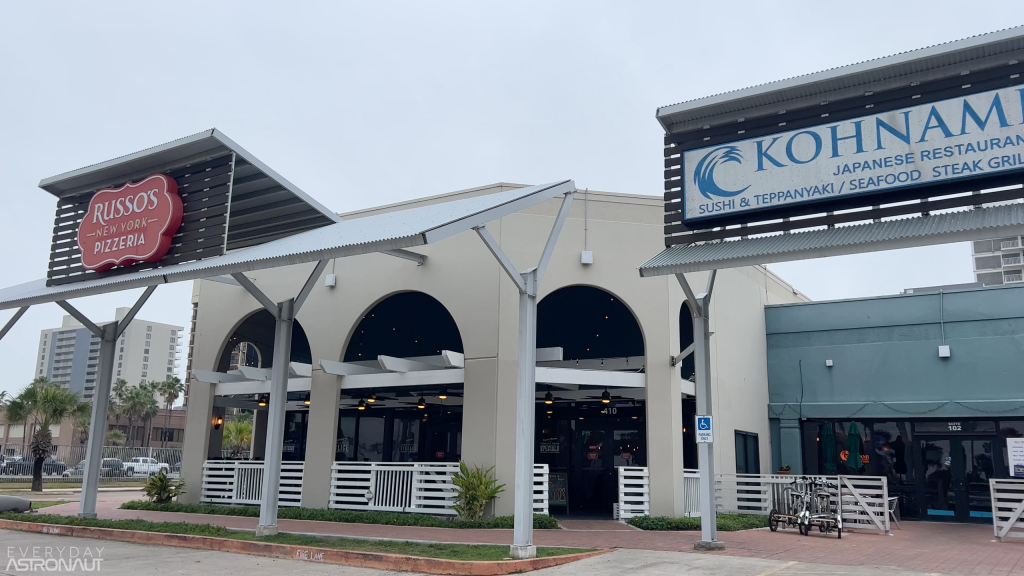
The proximity to Mexico means that there is an abundance of tacos. There are many local restaurants in Brownsville that sell local taco styles, like street tacos. Additionally, like SPI, there are nmerous types of resturants with different price points. There are also typical fast food chains on every corner, so if you are looking for something familiar, it is there.
- Ultima Taco
- La Villa Taqueria y Yogufrut
- Veggie Del Sol
- Terra’s Urban Kitchen
- Dodici Pizza
What Else Besides Starbase?
Before Starbase, South Padre Island was a popular vacation spot. The beach that runs along the island is great for typical beach activities, especially surfing. For surfing lessons, South Padre Surf Company has a local staff that are great instructors. Different parts of the island have different severity of waves, which makes it appealing to all skill levels.
Additionally, there are dolphin tours on both SPI and Port Isabel that will venture out into the channel and ocean to see dolphins leap from the water.
Also on the island is Gravity Park , an amusement part that features Go-Karts and other rides. Fishing and bird watch tours and boats are very common and leave from Port Isabel/SPI.
STARSociety hosts many stargazing events and STEM events for kids.
The Art Lounge on SPI has space themed art including a piece from Inspiration 4 Astronaut Dr. Sian Proctor .
Located in Brownsville is Gladys Porter Zoo , which has bike trails and coffee.
Overall, this article gives the most comprehensive overview of Starbase, how to visit, how to get there, and what to do there. Bookmark this tab so you can reference it when you make it down there! If you have any questions, leave them in the comments or email the author.
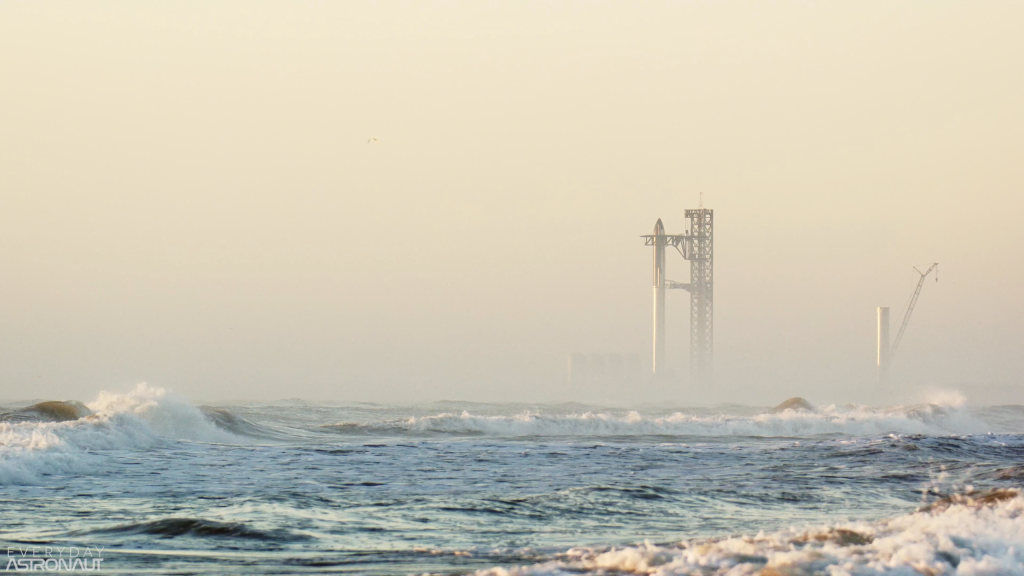
10 comments
Great content, thanks Tim!
Boca Chica Starbase looks rather haphazardly designed, without much forethought of master planning. Thats sad and very inefficient, since poor design always has much higher costs and greater redundancy. Even the Starship design looks overly simplistic and wastes on functionality minimalist design approach. Maybe this is just prioritized stuff to get the buzz lighted.
Great job perfect timing thank you!
do u like taylor swift?
Thanks Tim. You provide a valuable service to both novice and expert alike. Good luck on your upcoming adventure.
Awesome overview Tim! I called Rocket Ranch, and they have 11 acres for camping, so that seems to be always available if you bring your own tent. And they have beer and restrooms 🙂
Hay Tim, you didn’t mention phone or internet coverage about Starbase and SPI, how is that??
A great topic for a deep dive would be safety of SH/ST launch to the public. You mentioned some viewing zones at about 5 miles from the launch pad, the size of the exclusion zone radius. Interview someone not from from SpaceX with expertise on rocket launch exclusion zones on the safety of the SH/ST launch. Five miles is likely not to be adequate if there is an explosion.
Also, the Mexican border is inside this safety zone. If Mexican citizens are injured by a SH/ST explosion SpaceX could create an international incident.
Robert Clark
Please remove if not allowed, but my husband and I rent a condo on SPI -> https://www.vrbo.com/1406811 It’s centrally located close to restaurants, bars and fun activities. It’s a 10 minute drive to Channel View Rd to see the launchpad from the bottom of SPI!
Hey Tim, big fan. What about all those charter boats I saw in the vid. I’m thinking they would provide a great unobstructed view and a chance to get just a wee bit closer. Would love to know where the boats can go on a launch day.
Leave a Reply Cancel reply
This site uses Akismet to reduce spam. Learn how your comment data is processed .
Discover more from Everyday Astronaut
Subscribe now to keep reading and get access to the full archive.
Type your email…
Continue reading
- Things to do
- Orlando Attractions
- Kennedy Space Center
- Chat with an Astronaut
- Launches & Events
- SpaceX Launch
- Visitor Complex
- Cape Canaveral
- SpaceX Crew-7 Mission
- Mission Zones
- Women in Space
- Kennedy Under the Stars
- Plan Your Visit
- Guided Tours
- Restaurants
- Orlando to KSC
- Transportation
NASA Now + Next
Saturn v rocket, shuttle: a ship like no other, behind the gates, space shuttle atlantis, race to the moon, rocket garden, heroes & legends.
- Launch Tickets
- WonderWorks Orlando
- Orlando ICON Park
- Madame Tussauds Orlando
- SEA LIFE Orlando
- Clearwater Beach
- Titanic: The Artifact Exhibition
- Buy Go City Orlando Passes
- Festivals and Events
Everything You Need to Know About the Kennedy Space Center Attractions
From interactive exhibits and 3D simulators to up-close views of spacecrafts and simulations of real-life space missions, the Kennedy Space Center has something for everyone. You can learn about past and present aerospace programs and experience virtual reality simulations of space travel, as well as plenty of other hands-on activities. Whether you’re a history buff or just looking to have some fun, there’s plenty to explore at Kennedy Space Center.
Here's a detailed look at all the Kennedy Space Center attractions!
Mission Zones at the Kennedy Space Center
The Visitor Complex at the Kennedy Space Center is divided into 5 Mission Zones, with attractions and tours grouped by historical era. Get a close look at the journey of humans in space, from the beginnings of space exploration to recent and ongoing operations.
Witness the joys and perils of America's first space flights and embark on an awe-inspiring adventure that will inspire you to consider what it means to be a hero. Actual artifacts such as a Redstone rocket dangling overhead, the Sigma 7 capsule, and an unprecedented close-up look at the Gemini 9 spacecraft will transport you to the birth of the space age with astronaut pioneers.
Approximate Duration: 45 minutes

U.S. Astronaut Hall of Fame

Space Mirror Memorial

Astronaut Encounter

John F. Kennedy Fountain

Historical Countdown Clock

NASA Insignia
The Kennedy Space Center Bus Tour, also known as the Behind the Gates experience, gives you unparalleled access to historic launch locations and operational spaceflight facilities. Before stopping at the Apollo/Saturn V Center, the trip takes you behind NASA's gates to explore the past, present, and future of America's multi-user spaceport. This experience is included with your daily entrance ticket.
Approximate Duration: 1 to 3 hours

KSC Bus Tour


KSC Explore Tour

Fly With an Astronaut
.jpg?auto=format&w=340.58181818181816&h=267.59999999999997&q=90&fit=crop&ar=14%3A11&crop=faces)
Vehicle Assembly Building

Launch Complex 39a

Launch Complex 39b
There have been times in American history when the country has come together and its culture has transformed. One of these watershed moments was the Apollo Moon landings. The Apollo/Saturn V Center honors the people and machines who made the impossible appear attainable and the future seems bigger than we ever imagined. Stand awestruck before the massive Saturn V, the world's largest rocket. Relive the wonder and excitement of the Apollo era via new interactive and entertaining exhibits.
Approximate Duration: 2 hours

Apollo 8 and the Firing Room

Path to the Moon

Exploring the Moon

Ad Astra Per Aspera

Lunar Theater

Apollo Treasures Gallery

Moon Tree Garden

Astrovan & Umbilical Tower

Fisher Space Pen

The People's Moon
Marvel at the American icon that is the Space Shuttle Atlantis. Examine the shuttle missions that ensured the Hubble Space Telescope's and the International Space Station's continued existence. With training simulators, you may learn how to dock and land the spacecraft. View Atlantis, the only space shuttle currently in flight, up close. Space Shuttle Atlantis also has more than 60 interactive displays honoring NASA's Space Shuttle Program's history, technology, and influence.
Approximate Duration: 2.5 hours

Hubble Space Telescope Theater

Astronaut Training Simulators

Launch Director Tour of Space Shuttle Atlantis

Forever Remembered

ISS Triumph of Technology

Shuttle Launch Experience

Constellation Sphere

Join Us On Orbit

Fiery Ride Home

People Made the Difference
Immerse yourself in the science of current and planned missions to the International Space Station (ISS) and deep space exploration in NASA Now + Next . Journey to Mars: Explorers Wanted takes you to the Red Planet. View the spacecraft that astronauts will use to fly to low Earth orbit and beyond in the future. Meet the Mars Rover Vehicle Navigator®, the newest concept vehicle designed to navigate the challenging landscape of Mars. Travel across time and space to the farthest reaches of the universe to see the universe through the eyes of NASA's space telescopes in three dimensions.

Gateway: The Deep Space Launch Complex

Spaceport KSC

Journey to Mars | Launched by United Lauch Alliance

LEGO® Build to Launch

Mars Rover Vehicle Navigator®

IMAX Theater

Mission Status Briefing
Must-see attractions at the kennedy space center.
The Kennedy Space Center is known for the numerous attractions that are available for space enthusiasts. If you happen to be one, these are the attractions that you simply cannot miss.
This garden of giants represents NASA's Mercury, Gemini, and Apollo missions, not just as amazing feats of technology, but also as a monument to the scientists and engineers that made spaceflight a reality. During daily guided tours, a space expert will take you through the history of early rocket technology. A visit around the Rocket Garden is like taking a stroll among titans. Learn more about the items that make up this legendary attraction, as well as what is new and on the way.

Get up close and personal with the Saturn V rocket, a marvel of human innovation and space flight. Walk beneath an actual Saturn V rocket at the Apollo/Saturn V Center, the sort of rocket that launched humans to the Moon. Take a walk beneath this show-stopping monster to properly comprehend the scale and complexity of the world's largest rocket. It is 60 feet/18 meters taller than the Statue of Liberty, with a length of 363 feet/111 meters. Only three Saturn V rockets survive in the United States, even though 13 were launched between 1967 and 1972.

View Atlantis, the only space shuttle currently in flight, up close. Space Shuttle Atlantis also has more than 60 interactive displays honoring NASA's Space Shuttle Program's history, technology, and influence. The entrance to the home of space shuttle Atlantis is a massive full-scale space shuttle stack comprising two solid rocket boosters and an orange exterior tank that is impossible to miss. Inside, Atlantis is turned 43.21 degrees with the payload doors open and the Canadarm extended, as only astronauts have seen her in space.

Journey To Mars: Explorers Wanted
In Journey To Mars: Explorers Wanted, get up close and personal with life-size Mars rover reproductions while putting your talents to the test as a recruit. Learn about NASA's intentions to explore deep space, including Mars, asteroids, and the Moon once more. This multimedia show illustrates what is currently going on at NASA. Explore models of Mars rovers and put your deep space knowledge to the test with interactive games and simulators.
All the Attractions at the Kennedy Space Center

U.S. Astronaut Hall Of Fame®
Mission Zone: Heroes & Legends
Visitors can learn about the lives of American astronauts through captivating displays, which were envisioned as a site where they would be remembered and cherished. The U.S. Astronaut Hall of Fame® honorees are chosen by a special committee of the Astronaut Scholarship Foundation, which was founded by the Mercury Seven astronauts.

Mission Control: The Unsung Heroes Of Apollo
The Mission Control team was at the heart of the Apollo space program and a tremendous decade of achievement. Visit the Universe Theater, provided by Northrop Grumman, at the Kennedy Space Center Visitor Complex to see Mission Control: The Unsung Heroes of Apollo, the newest film about the people behind Project Apollo. Hear their testimonies, as well as those of Apollo astronauts and present NASA flight directors, to learn more about the narrative.

Kennedy Space Center Bus Tour
Mission Zone: Behind the Gates
Take a tour of the home of American spaceflight. Guests can tour restricted areas of Kennedy Space Center, the working spaceflight facility where America launched to the Moon, and where NASA aims to send astronauts into outer space, from the comfort of an air-conditioned motorcoach. The Kennedy Space Center Bus Tour has been redesigned to take you behind NASA's gates like never before.

Apollo 8 And The Firing Room
Mission Zone: Race to the Moon
At the Firing Room Theater, relive the launch of the first manned NASA mission to orbit the Moon onboard the huge Saturn V rocket in 1968. As you watch and feel the massive Saturn V Moon rocket lift off from the launch pad and blast into space, experience the count for Apollo 8 on the real consoles used during the Apollo missions.

Path To The Moon
Admire the achievements of Apollo missions 7-10 and the equipment that kept all Apollo crew safe while traveling the average of 239,000 miles/384,600 kilometers to the Moon in this collection of exhibitions and relics. Examine an actual command service module, interact with a timeline depicting the stages taken to reach the Moon, and see relics from the Apollo missions' early missions.

Among the most intriguing new displays at the Apollo/Saturn V Center is Moonscape. The image from Apollo 11 when Buzz Aldrin and Neil Armstrong planted the American flag on the surface of the moon is depicted in Moonscape. Lunar Module 9 (LM-9), an original lunar module built for the Apollo Program, is the most eye-catching relic.

Exploring The Moon
The Apollo Moon Landings are brought to life through interactive exhibits and artifacts. Only a handful of the ways you can explore the Moon is seeing a real lunar module and touching a real Moon rock at this exhilarating exhibit at the Kennedy Space Center.

Mission Zone: Race to the Moon The Apollo 1 Tribute, Ad Astra Per Aspera - A Rough Road Leads to the Stars, honors the lives of Gus Grissom, Ed White, and Roger Chaffee. This memorial showcases mementos from the Apollo 1 astronauts' lives and serves as a reminder of their sacrifice. Generations of people can learn about these brave astronauts and how their legacies live on through the Apollo missions and beyond.

The Lunar Theater reconstructs the occurrences of the momentous day in July 1969 when the first-ever moon landing took place by using 3D theatrical elements combined with genuine NASA video footage and mission control records. Take a seat in the 1960s living room and bar setting while you wait for the next play to start and believe you are back in 1969, waiting for those historic moments.

Mission Zone: Race to the Moon The rare and valuable artifacts in this exhibition are nothing short of a treasure. In this Smithsonian-affiliated show, medals, prototypes, and training equipment depict the journey of astronauts on their way to the Moon. See actual items from the Apollo Moon missions, including Alan Shepard's Moon dust-covered spacesuit and the Apollo 14 crew capsule.

In the Moon Tree Garden, take a moment to rest and ponder on humanity's incredible achievements. These second-generation trees are descendants of Moon seeds. A one-of-a-kind bronze statue of Apollo 11 astronauts Neil Armstrong, Buzz Aldrin, and Michael Collins stands in the center of the garden.

Mission Zone: Shuttle: A Ship Like No Other
The Hubble Space Telescope (HST), which was launched in 1990 and orbits 340 miles above the Earth's surface, was delayed when the optic mirror failed. Over the course of five arduous service flights, determined astronauts worked to save the telescope.

Mission Zone: Shuttle: A Ship Like No Other You will learn to control the space shuttle just like an astronaut, including docking with the International Space Station and landing at the Shuttle Landing Facility at Kennedy Space Center. Space Shuttle Atlantis® has high-tech simulators that bring the complex systems and components of the space shuttle orbiter's engineering to life.

Mission Zone: Shuttle: A Ship Like No Other Forever Remembered honors the 14 brave heroes who passed in the Challenger and Columbia disasters. This dedicated exhibit features personal artifacts from each astronaut as well as recovered gear from both orbiters, including a part of Challenger's left fuselage with an American flag and the cockpit window framework from Columbia.

ISS Triumph Of Technology
At ISS Triumph Of Technology, learn about life in space, including how to sleep, eat, exercise, and act like an astronaut. Take off your shoes and travel between the Destiny and Unity modules before visiting the Microgravity Theater and participating in space research experiments.

Shuttle Launch Experience®
Mission Zone: Shuttle: A Ship Like No Other Take part in an eight-and-a-half-minute simulation of the space shuttle's climb into orbit. For a prelaunch briefing by veteran space shuttle commander Charles Bolden, enter the heart of space shuttle operations. Once onboard, you will get a taste of what former NASA astronauts describe as "the next best thing to flying on the space shuttle."

Mission Zone: NASA Now + Next
The Mars Rover Vehicle Navigator is the newest prototype vehicle designed to navigate the challenging topography of Mars. With its mobile lab, MRVN is a large vehicle with big wheels built to traverse through dunes, rocks, and craters. The Kennedy Space Center Visitor Complex commissioned this incredible contraption, and visitors can get up and personal with it.

Eyes On The Universe: Nasa’s Space Telescopes 3d
Mission Zone: Shuttle: A Ship Like No Other Through the eyes of the Hubble Space Telescope (HST), go back in time 13.4 billion years in search of the emergence of life. View the farthest extremities of the universe in 3D 4K resolution of renowned deep space photographs from HST during this live presentation in Universe Theater, hosted by Northrop Grumman.

Going to Kennedy Space Center’s Imax Theater is like being in space, except without the microgravity, plus you can eat popcorn. Daily space movies are shown in the Imax Building and are free with admission. Before the movie starts, stock up on typical theater food and drinks in the lobby.

When you attend the Mission Status Briefing, you will learn about current NASA missions, activities at Kennedy Space Center, and launch activity at Cape Canaveral Air Force Station. Learn more about NASA's commercial partners, including SpaceX and ULA, astronauts, and science projects aboard the International Space Station, during this multimedia presentation (ISS).

Mission Zone: NASA Now + Next America's Spaceport, a multi-user functioning spaceflight facility actively flying cargo and astronauts to the International Space Station, is now the birthplace of American spaceflight. Orion EFT-1, the Orion Multi-Purpose Crew Vehicle slated to launch aboard SLS for deep space exploration, greets visitors to NASA Now.

Mission Zone: Heroes & Legends This memorial honors NASA's fallen heroes and pays tribute to explorers who dedicated their lives in the quest for knowledge beyond Earth. The names of 24 astronauts, including the crews of Apollo 1, STS-51L Challenger, and STS-107 Columbia, are engraved in highly polished black granite.

Planet Play
A new multi-story, fully immersive play experience is now available. Planet Play is an indoor interactive area where children can play on planets. It is designed for a younger generation of space explorers aged 2 to 12. Numerous interactive gaming and creative components, such as the ability to chart a constellation, climb a wormhole, walk on Saturn's rings, and slide through an asteroid field, are designed to create a memorable learning experience.
*Included with General Admission

KSC Step. Power. Launch!
Kennedy Space Center Visitor Complex is fueling the future one step at a time with Piezoelectric technology. Step. Power. Launch. at NASA Central is a collection of special piezoelectric tiles depicting the Moon, Mars, and Earth at the visitor complex. Step on the tiles to watch them light up, and then glance up to see the neighboring tower collecting your energy to "launch" a rocket.

Astronaut Training Experience
In the Astronaut Training Experience® Center, you can be a part of the next wave of space explorers who are preparing for human deep space exploration. Without ever leaving Earth, the Astronaut Training Experience (ATX) will get you as near to training, living, and working on Mars as conceivable.
*Not Included with General Admission

Mars Base 1
The only location on Earth where you can travel to Mars to live and work for a day is Mars Base 1. Rookie Astronaut teams have the rare opportunity to administer the Mars Base Operations Center, collect vegetables in the Botany Lab, design robots to maximize solar energy intake, and adjust to the obstacles of life on Mars in a futuristic terrain.

ATX Training Stages
All ATX® Training Stages are ideal for guests who want to get a head start on their space travel training without committing to the full ATX program during their visit. Choose from three options to explore the Martian surface by rover or foot, or to encounter microgravity simulation at the Kennedy Space Center Visitor Complex.

Cosmic Quest
Cosmic Quest is a hands-on experience that engages and educates visitors about NASA's present and future space science and exploration efforts. During Cosmic Quest, you will build a Martian habitat, conduct scientific experiments aboard the International Space Station, and launch NASA's next rocket to Mars.
Book Tickets to Kennedy Space Center
Frequently asked questions about the kennedy space center attractions.
The must-see attractions at Kennedy Space Center are the Rocket Garden , Heroes & Legends, the Saturn V Rocket , Space Shuttle Atlantis , and Journey to Mars: Explorers Wanted.
There are 5 Mission Zones at the Kennedy Space Center: Heroes & Legends , Behind the Gates , Race to the Moon , Shuttle: A Ship Like No Other , and NASA Now + Next .
We recommend you visit all the Kennedy Space Center attractions, however, if you're on a time crunch, do not miss a chance to look at the Space Shuttle Atlantis , the U.S. Astronaut Hall of Fame, the ISS Triumph Of Technology, Astronaut Training Simulators, and the Saturn V Rocket .
Some of the best attractions at Kennedy Space Center include the Saturn V Rocket, the Space Shuttle Atlantis, and the Rocket Garden.
No, not all attractions are included in the general admission ticket of Kennedy Space Center. Make sure you check your ticket to see what attractions are included.
No, all visitors must purchase a ticket to visit the Kennedy Space Center Attractions at the Visitor Complex . With the general admission ticket to Kennedy Space Center, you visit close to 30 attractions.
Yes, visiting Kennedy Space Center is absolutely worth your time.
It will take you about 5 hours or more to explore all the Kennedy Space Center attractions.
Kennedy Space Center is open till 5 PM every day.

Plan Your Visit to Kennedy Space Center

Kennedy Space Center Tours

Kennedy Space Center Timings

- Moscow Tours
- Customized tours
- Moscow for kids
- Evening activities
- Moscow evening activities
- St Petersburg evening activities
- Day trips out of Moscow
- Golden Ring tours
- St Petersburg tours
- Russian tour destinations
- Package tours
- Moscow highlights
- Travel Tips
- Upcoming group tours
- Moscow events

Seven things to do in VDNKh park

Visiting VDNKh park
The guided tour of VDNKh park lasts 1 - 2 hours but you can easily spend here the whole day. If you stay in Moscow for at least a few days, we'll highly recommend including VDNKh in your Moscow tour itinerary. You'll see this attraction during our Moscow in a 4-5-day tour. The park is very close to such attractions as the Memorial Museum of Space Exploration , Ostankino TV tower , Sergei Korolev House museum. It might be a good idea to plan a theme tour focussing on Soviet history, architecture, and exploration of Space. You'll drive past the park on your way to Sergiev Posad and we can also have a stop to see it on your last day of Moscow in 3-day tour . The park is open 24 hours a day but you'll need to check the pavilions working hours on the official website . On summer evenings you can catch the spectacular sound and light shows of the fountains but you'll need to check the timetable beforehand.
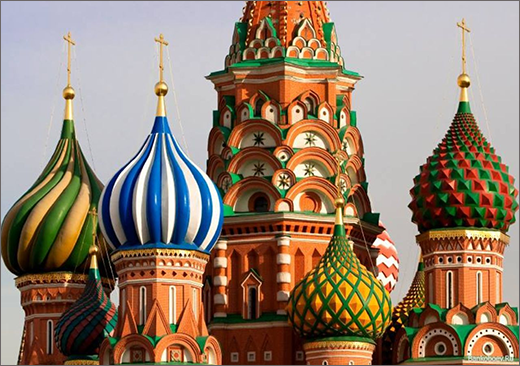
We use cookies to improve your experience on our website, and to facilitate providing you with services available through our website. By continuing to use our website, you accept our use of cookies, the terms of our Privacy Policy and Terms of Service . I agree
- // Welcome to the info county highway's hottest mix of old-time wisdom and rock-n-roll
- // Fresh clippings from recent tape recordings with Flowerman and Oil Can - weekdays at 10 and 4 - KRGT Radio
- // Late-night amateur radio 24-hours a day
- // Congratulations to Cousin Rattlesnake on the release of "Rattlesnake Summer" * 66 poems for 66 SD Counties * Get your copy today at avantgardensupply.com
- // Lonetree SD is the midway point between wherever you are and Sioux Falls, SD
- // Some say that Box Elder, SD is named after the tree, they're wrong though, it's named after the creek, which is named after the tree
- // It's my opinion that the Mystical, Magical Rock Garden Tour is in the Top 3 of all time active rock n roll gardening shows - News From Pierre
- // Advertisement
- // Tapes! Books! Hank-or-Chief's! and more at avantgardensupply.com
- // *** *** *** ***
- // 24 Hours a Day
- // Late Night Radio
- // Now Playing: KRGT Radio

- Park Overview Explore Missions Zones
- Heroes and Legends Space Pioneers
- Behind the Gates Kennedy Space Center Bus Tour
- Race to the Moon Apollo Moon Landing
- Shuttle: A Ship Like No Other NASA's Space Shuttle Program
- NASA Now + Next Preparing for Journey to Mars
All Attractions
- Plan Your Visit
- Hours Of Operation
- Hotel Packages
- Travel Information
- Events Overview
- Event Calendar
- See A Launch
- Groups Overview Plan Events and Tours
- Youth Groups Programs and Field Trips
- Scouts Adventures for Scout Troops
- Private Events Events and Custom Tours
- International Programs and Custom Tours
- Camp KSC Day Camp for Students
- Educators Resources for Teachers
- Programs Educational Programs at KSC
- Accessibility Information

U.S. Astronaut Hall of Fame ®
All Systems Are Go!
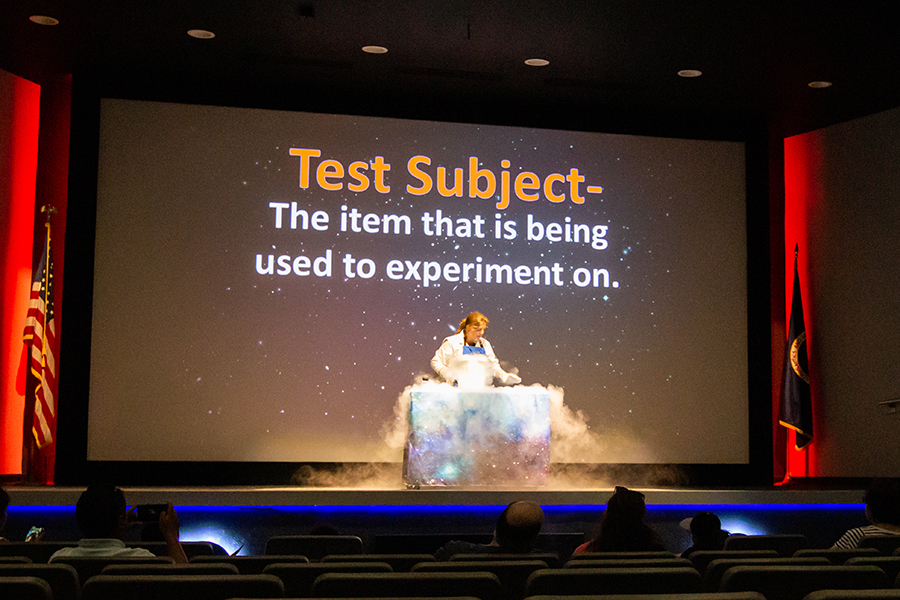
It's a Matter of Fact Show
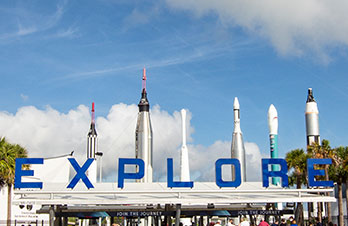
Rocket Garden
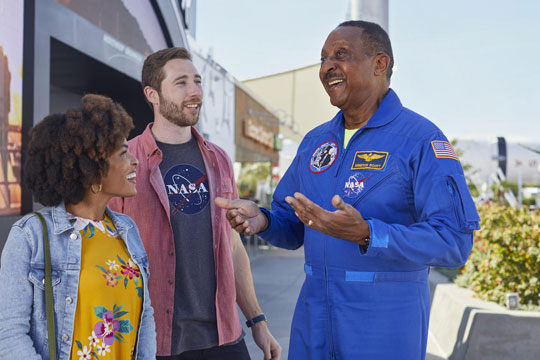
Astronaut Encounter
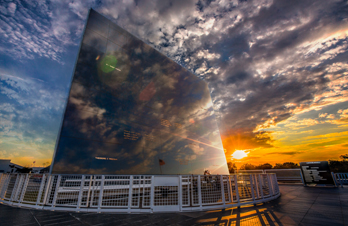
Space Mirror Memorial
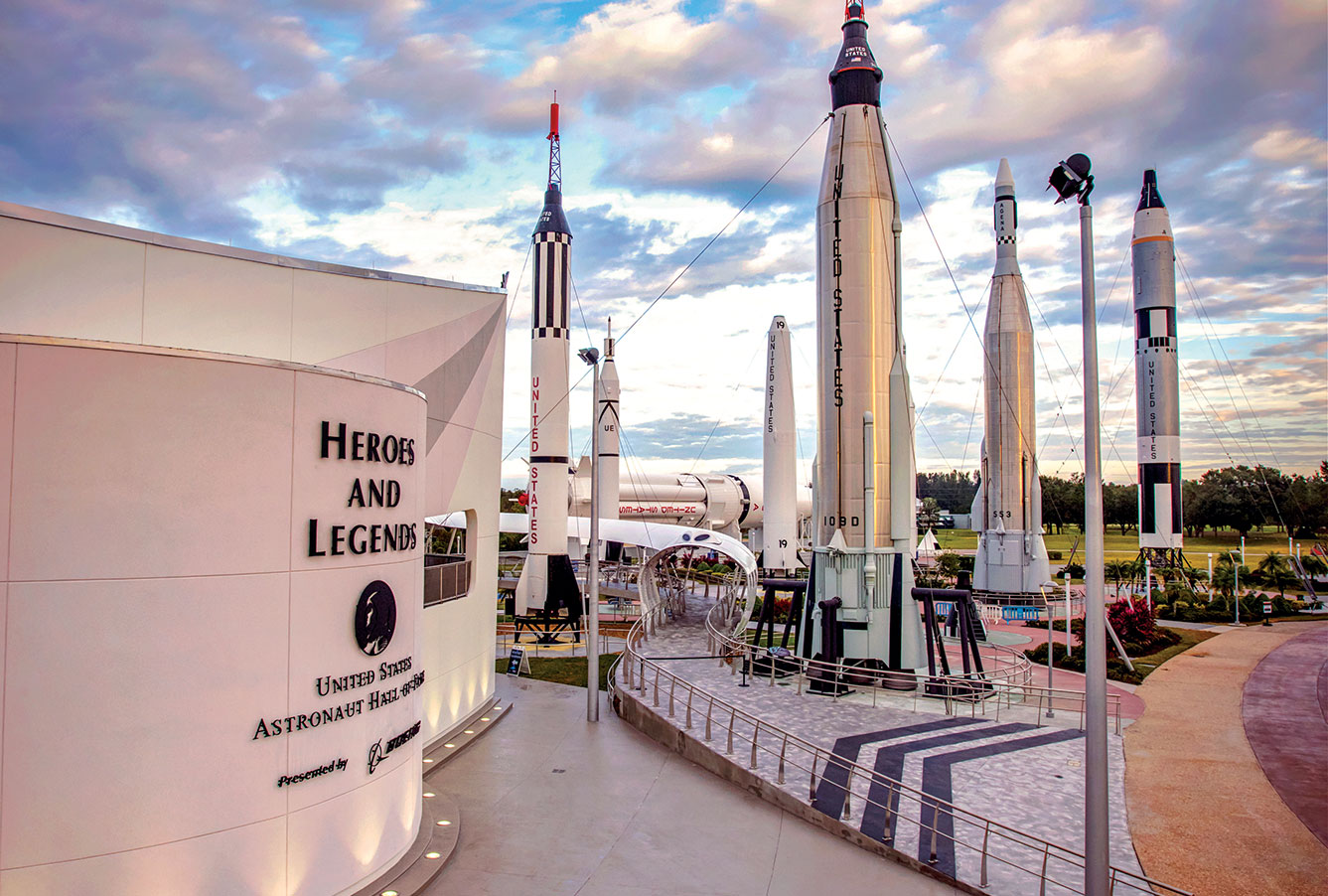
Heroes & Legends
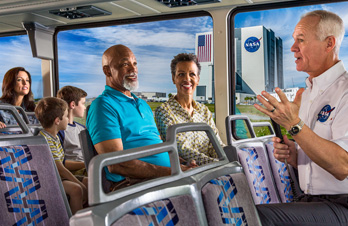
Kennedy Space Center Bus Tour
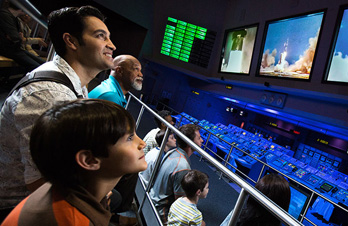
Apollo 8 and the Firing Room
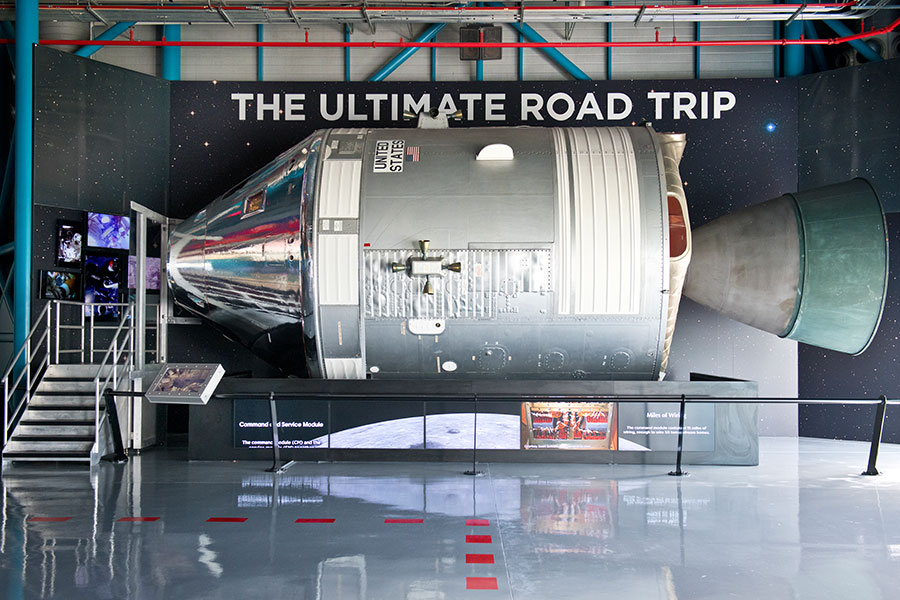
Path to the Moon
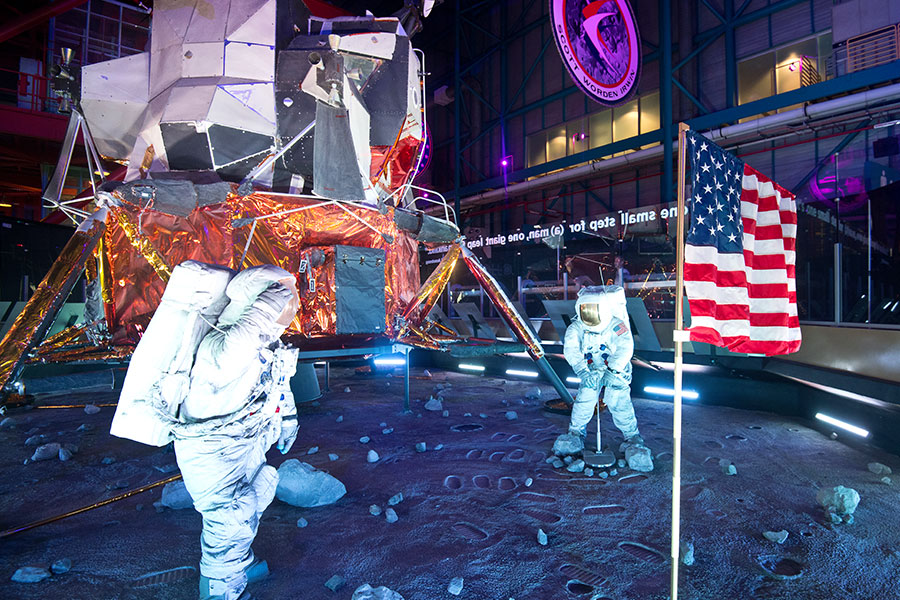
Exploring the Moon
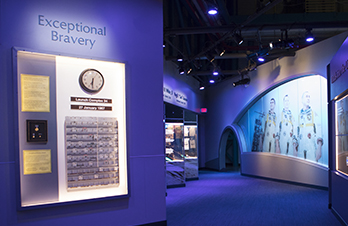
Ad Astra Per Aspera
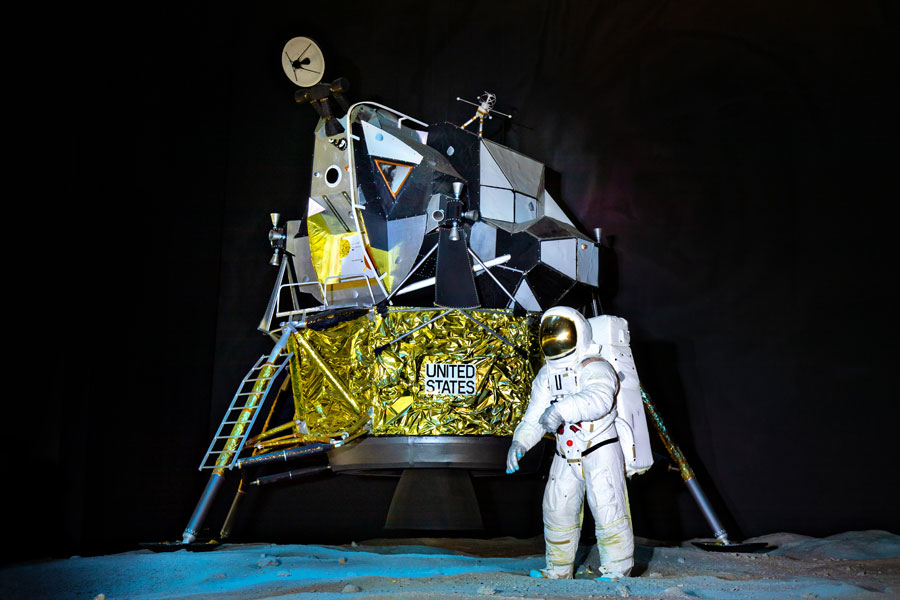
Lunar Theater
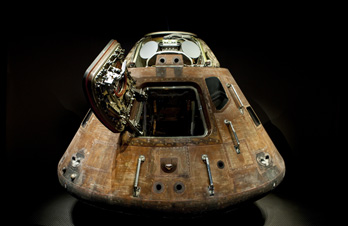
Apollo Treasures Gallery
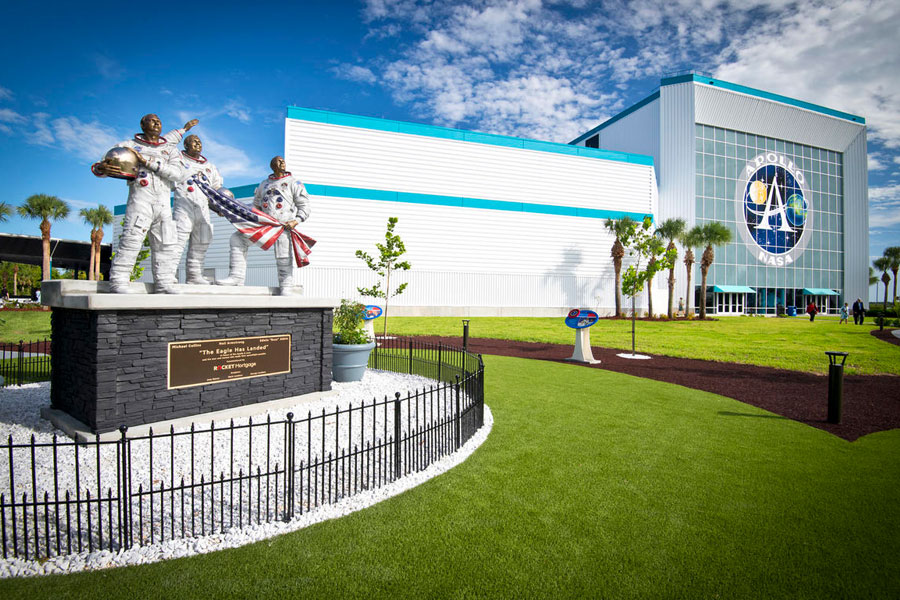
Moon Tree Garden
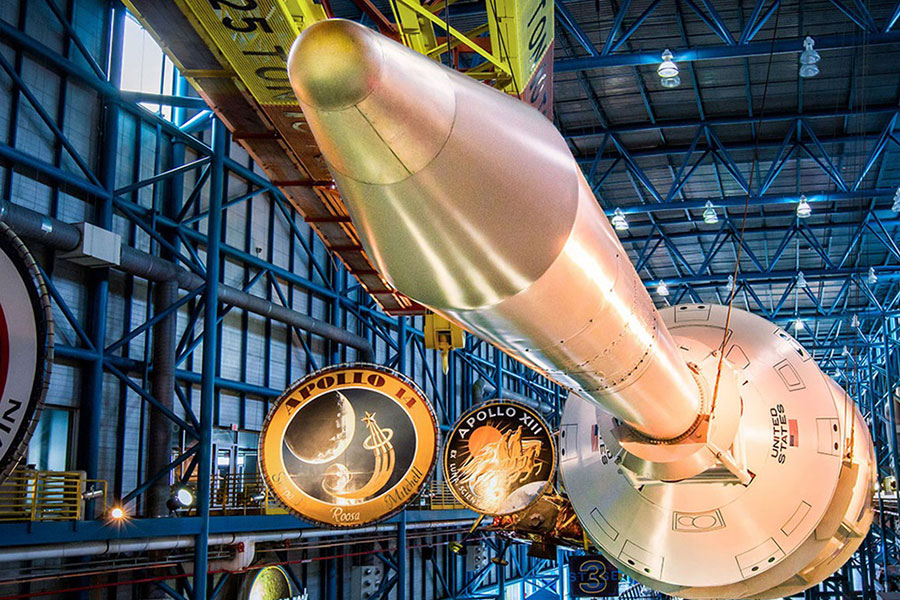
SATURN V ROCKET
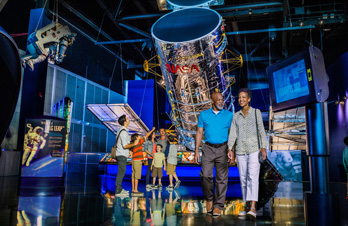
Hubble Space Telescope Theater
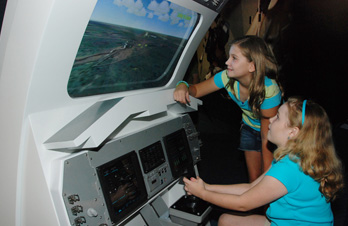
Astronaut Training Simulators
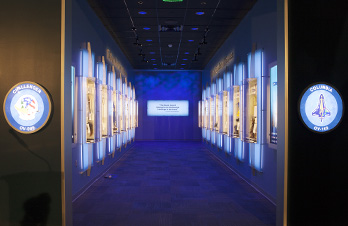
Forever Remembered
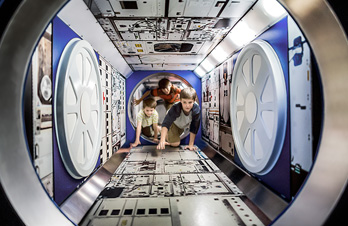
ISS Triumph of Technology
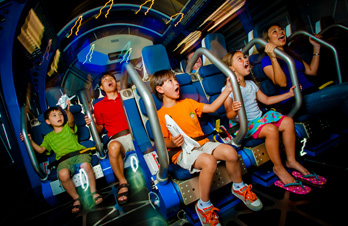
Shuttle Launch Experience®
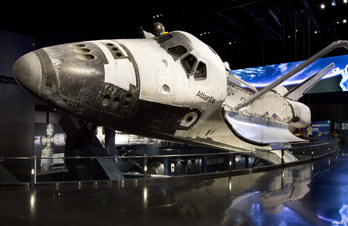
Space Shuttle Atlantis®
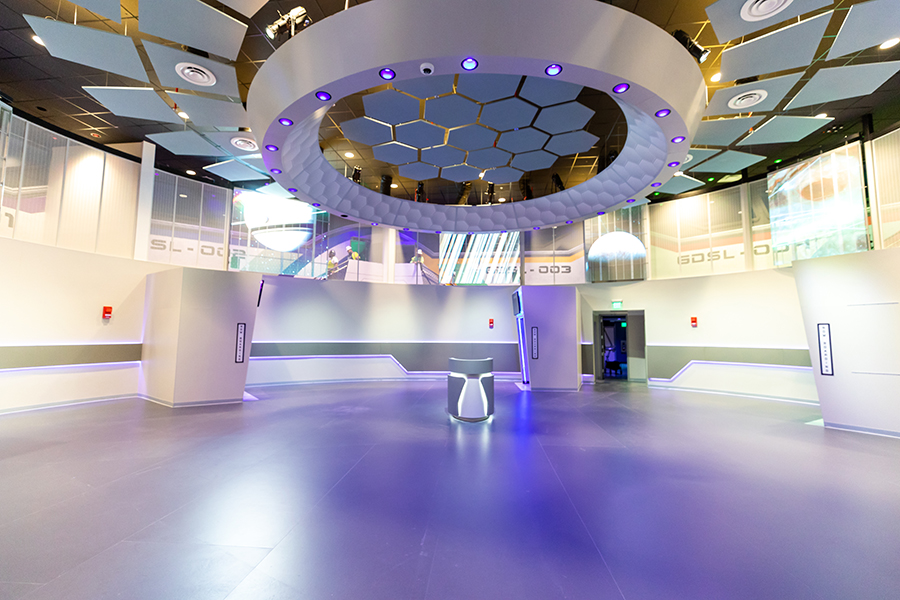
Spaceport KSC®
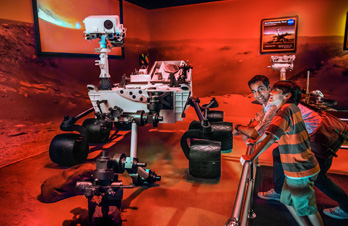
Journey To Mars | Launched by United Launch Alliance
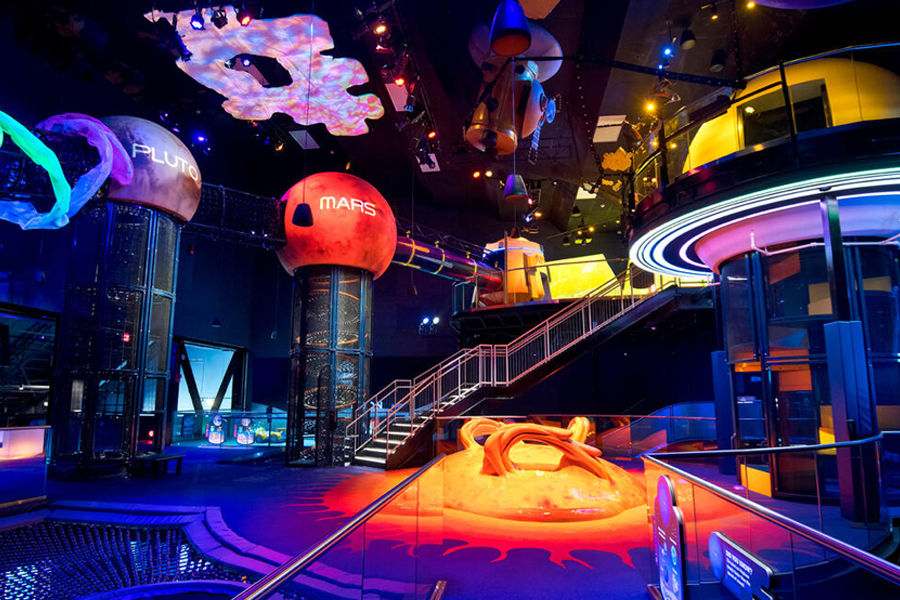
Planet Play®
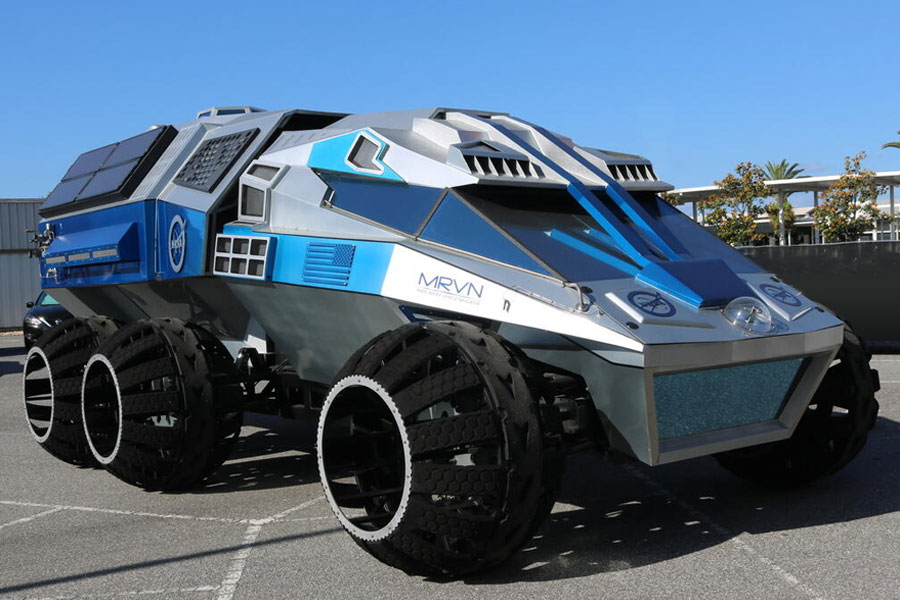
Mars Rover Vehicle Navigator®
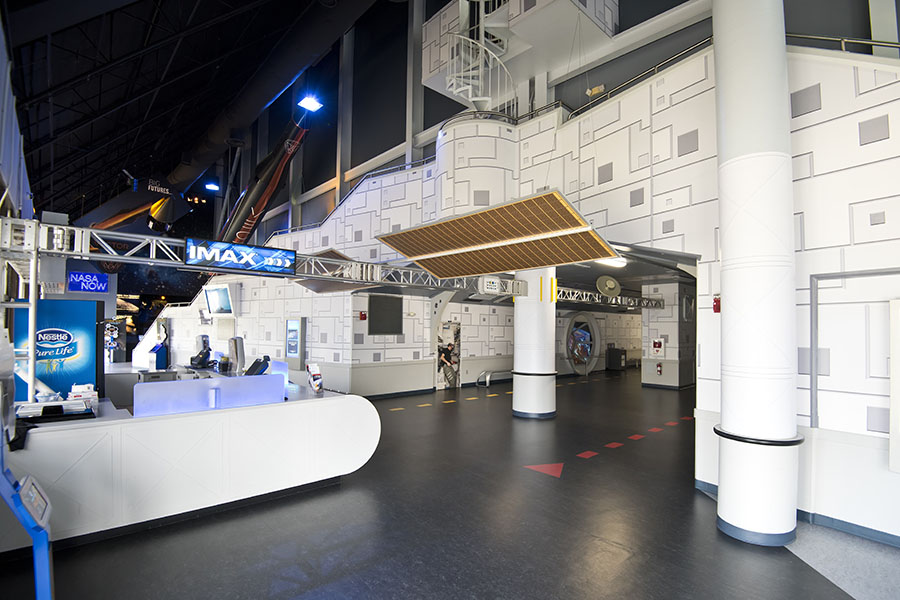
IMAX® Theater
It’s the next best thing to being in space, minus the microgravity, and you can eat popcorn! Space movies are available daily in the IMAX Building and are included with admission.
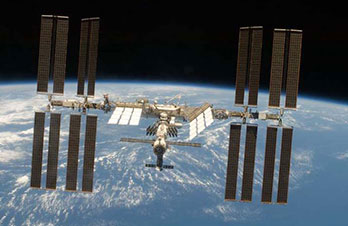
Mission Status Briefing
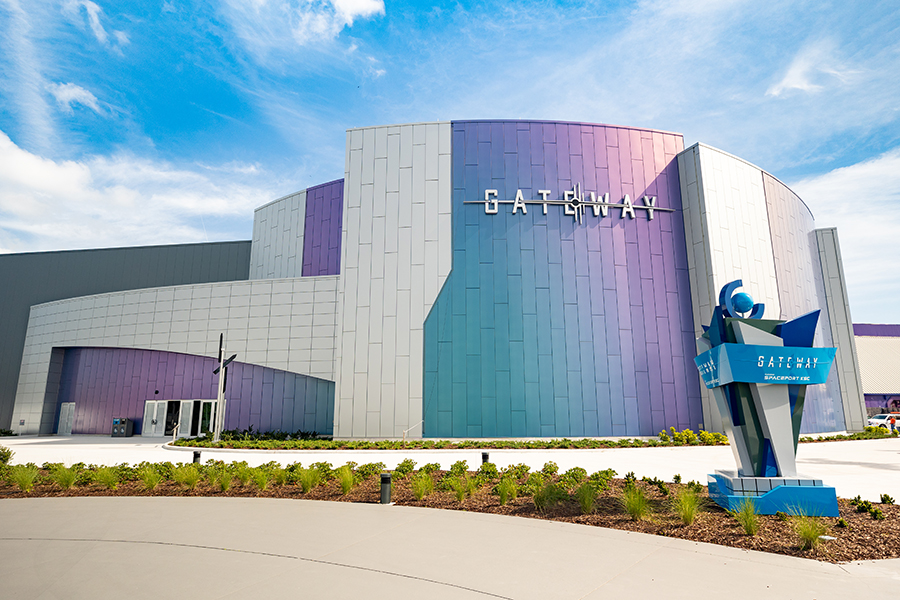
Gateway: The Deep Space Launch Complex®
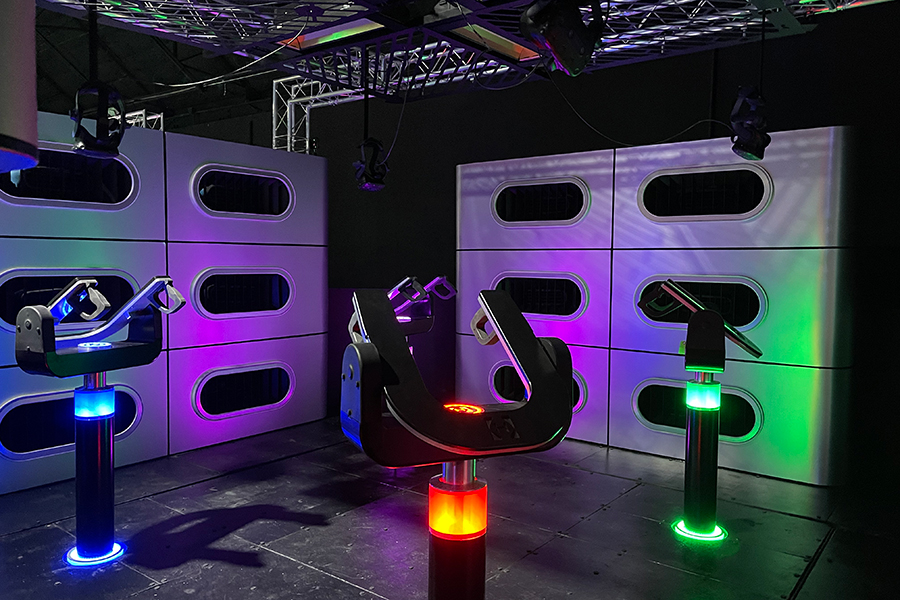
HYPERDECK VR
HYPERDECK is an all-new immersive, virtual reality experience . Up to 8 players enter into a dynamic virtual world featuring a full-motion floor and multi-sensory effects like strong winds, heat, and earth-rattling movements.
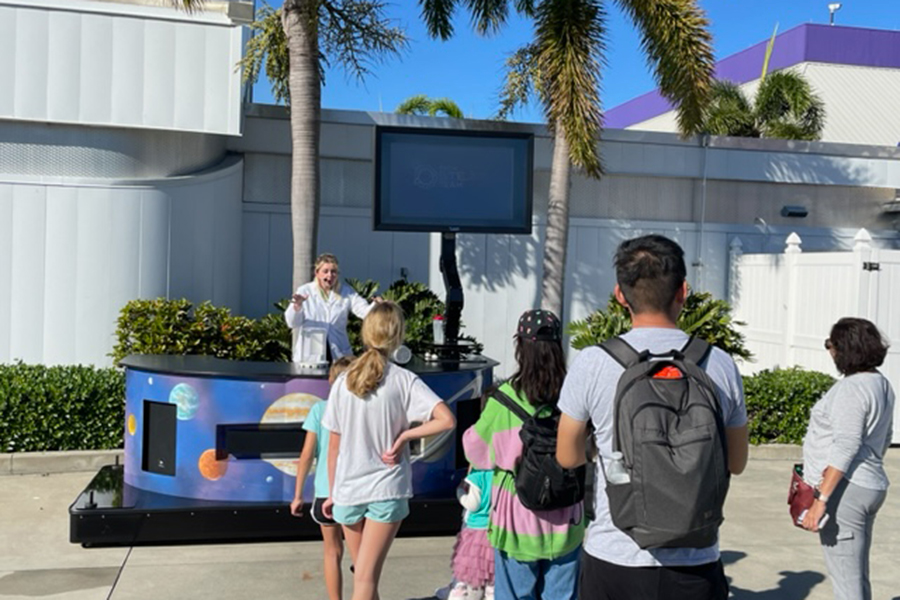
S.T.E.A.M. Interactive Carts
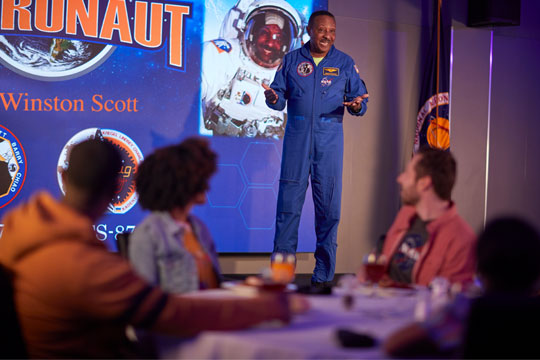
Chat With An Astronaut
Kennedy Space Center Explore Tour
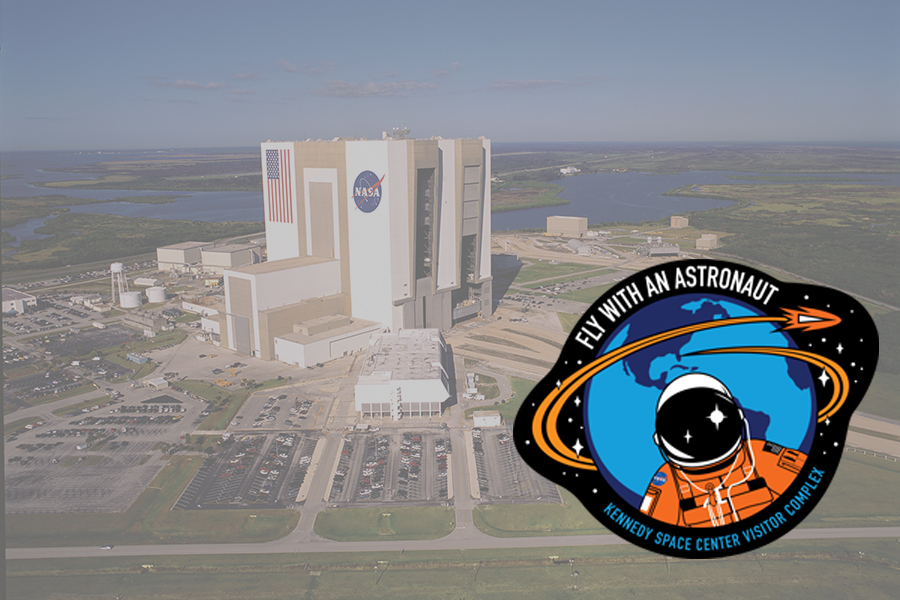
Fly With An Astronaut
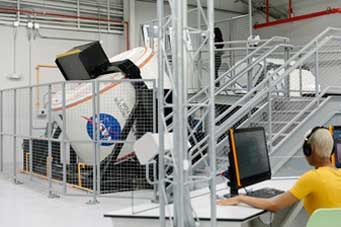
Astronaut Training Experience
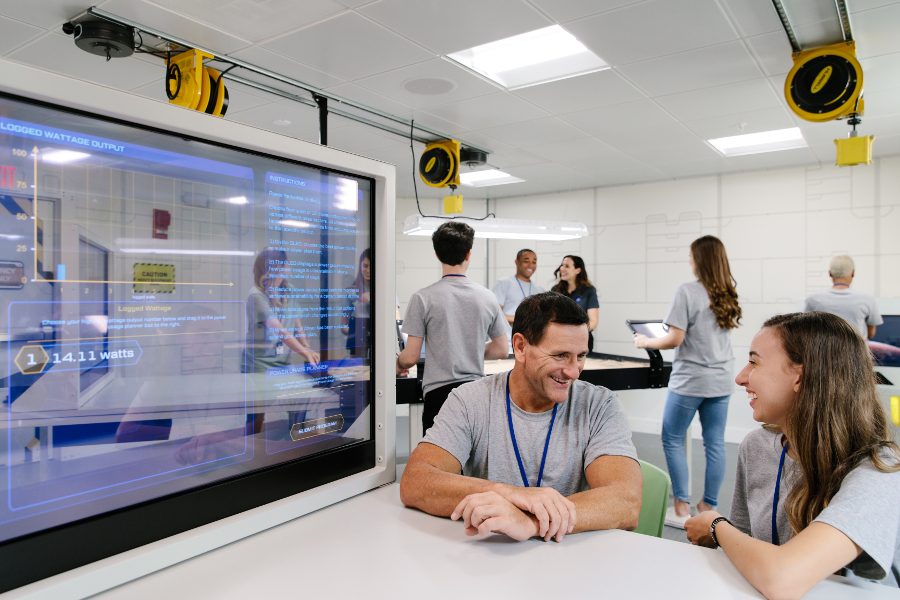
Mars Base 1
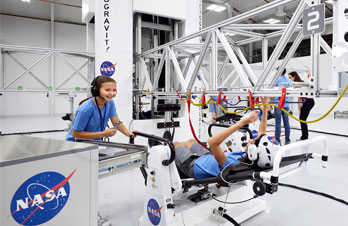
ATX Training Stages

IMAGES
VIDEO
COMMENTS
Kennedy Space Center Visitor Complex is operated for NASA by Delaware North and is entirely visitor-funded. Images shown may not represent current operational and safety guidelines. 9 AM to 5 PM. Capture the thrill of early space flight at the Rocket Garden. Walk among actual rockets of the Mercury, Gemini, and Apollo space programs.
The Rocket Garden is one of Kennedy Space Center Visitor Complex's most photographed attractions throughout our history, crafting our skyline for decades. While the visitor complex has grown exponentially over the years, the Rocket Garden has remained recognizable since it was first erected. When you tour among these giants, you are walking ...
This is a video of the full Rocket Garden tour at Kennedy Space Center in FL. Highlights of our entire trip at KSC are uploaded separately, but I thought thi...
Daily Tours. Free, guided tours of the Rocket Garden are given several times a day. See the daily schedule for times. Atlas-Agena Rocket. The Atlas rocket gave us the power to reach orbit, but with the second stage Agena perched on top, we now had the ability to explore. In January 1962, the Atlas-Agena launched Ranger 3 - a robotic ...
Purchases of annual passes may be made at the Kennedy Space Center Visitor Complex℠ front gate or guest services, online or by calling the reservations office at 855.433.4210. Seating is limited at Chat With An Astronaut, and KSC Special Interest Tours are limited and subject to availability.
Host John Zarrella takes you on a tour of the front entrance, Rocket Garden and a visit with Space Person at Kennedy Space Center Visitor Complex.
Guests can get an up close and personal look at spacecraft in Kennedy Space Center's Rocket Garden.
This tour takes guests on a narrated, video supplemented bus tour of Kennedy Space Center. The first stop is the LC-39 ... Rocket Garden: The ever-popular Rocket Garden is a Kennedy Space Center Visitor Complex hallmark featuring eight authentic rockets from the past, including a Mercury-Atlas rocket ...
There are guided tours of the Rocket Garden at different times throughout the day, including one just after the park gates open. I would suggest hopping on this one! The guided tour of the Kennedy Space Center Rocket Garden lasts about 15-minutes and will share with you some of the key developments and progress in manned space flight from the ...
The bus tour was hands-down my favorite part of visiting Kennedy Space Center. ... The Rocket Garden is best seen in the afternoon. Walking among some of NASA's early rockets feels surreal. The garden is located by the front entrance, near the Heroes & Legends exhibit, and it's one of those places that leaves a big impression. ...
The first launch vehicle to take a crew, Mercury-Redstone, was used to carry Ham, the chimpanzee into space to test spacecraft life support systems in 1961. Later that year, Alan Shepherd launched on a Mercury-Redstone rocket making him the first American to go into space. Height: 25.3 meters. Thrust: 78,000 pounds.
The Rocket Garden is an outdoor exhibit of, you guessed it, giant rockets. Tours are available throughout the day as part of your general admission, but you can also just read the signage available if you haven't timed things right. The Delta II is my personal favorite because of those shark teeth.
Day One: Space Shuttle Atlantis® with the Shuttle Launch Experience® 2 hours Gateway: The Deep Space Launch Complex® featuring Spaceport KSC 90 minutes Rocket Garden Guided Tour 20 minutes Chat With An Astronaut Add-on Enhancement 1 hour IMAX Film 1 hour; Mission Status Briefing 30 minutes Dining and Shopping 1 hour Day Two:
Tour of outside Rocket Garden and the latest building, Gateway: Deep Space Launch Complex Building at the Kennedy Space Center near Merritt Island, Cocoa Bea...
The Rocket Garden at Kennedy Space Center is a breathtaking display of some of the most iconic rockets in history, and a living testament to humankind's historic achievements in space exploration. From the towering Gemini-Titan II and Delta to the sleek Mercury-Atlas (the only replica in the mix), each rocket on display has its own unique ...
The Kennedy Space Center Visitor Complex is the visitor center at NASA's Kennedy Space Center on Merritt Island, Florida.It features exhibits and displays, historic spacecraft and memorabilia, shows, two IMAX theaters, and a range of bus tours of the spaceport. The "Space Shuttle Atlantis" exhibit contains the Atlantis orbiter and the Shuttle Launch Experience, a simulated ride into space.
Tour Of Starbase. There are three main locations around Starbase where the activity happens; the production site, the launch site, and the structural test site (formerly Massey's Gun Range). ... This area is commonly referred to as the "Rocket Garden". The vehicles in the Rocket Garden change very frequently as they are retired, scrapped ...
Rocket Garden. This garden of giants represents NASA's Mercury, Gemini, and Apollo missions, not just as amazing feats of technology, but also as a monument to the scientists and engineers that made spaceflight a reality. During daily guided tours, a space expert will take you through the history of early rocket technology.
Visiting VDNKh park. The guided tour of VDNKh park lasts 1 - 2 hours but you can easily spend here the whole day. If you stay in Moscow for at least a few days, we'll highly recommend including VDNKh in your Moscow tour itinerary. You'll see this attraction during our Moscow in a 4-5-day tour. The park is very close to such attractions as the Memorial Museum of Space Exploration, Ostankino TV ...
Home - Rock Garden Tour. Pete's Peeps Added Value Info Ticker: // Welcome to the info county highway's hottest mix of old-time wisdom and rock-n-roll. // Fresh clippings from recent tape recordings with Flowerman and Oil Can - weekdays at 10 and 4 - KRGT Radio. // Late-night amateur radio 24-hours a day. // Congratulations to Cousin ...
Exploring the Moon. Race To The Moon. Experience the wonder of the Apollo Moon landings through various interactive exhibits and artifacts. Seeing a real lunar module and touching an actual Moon rock are only a few of the ways you too can explore the Moon! Included With Admission.
SpaceX's rocket garden, accessible from a public road right inside SpaceX grounds, is a sight to behold! The rockets are absolutely massive, and the progress...
Friday 07:00 PMFri 7:00 PM 6/21/24, 7:00 PM. Ft Lauderdale, FL Revolution Live at the Backyard The Garden. Find Tickets 6/21/24, 7:00 PM. 6/22/24. Jun. 22. Saturday 07:00 PMSat 7:00 PM 6/22/24, 7:00 PM. Houston, TX The Bronze Peacock at House of Blues Houston Flwr Chyld & Grimm Lynn Present: Cafe Noir.